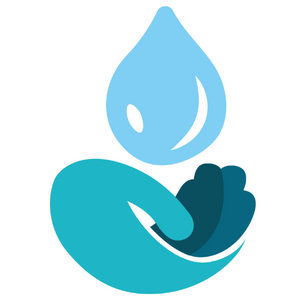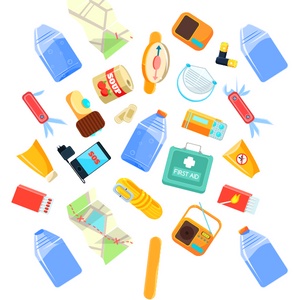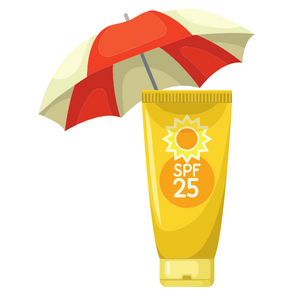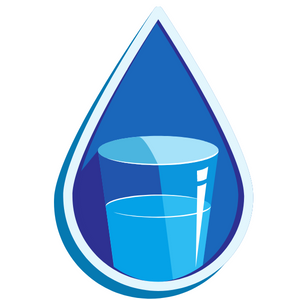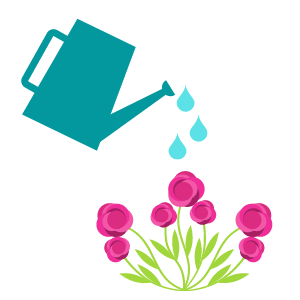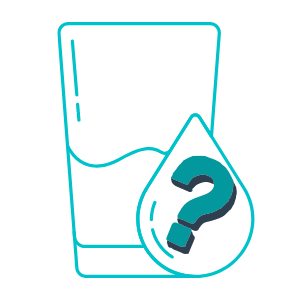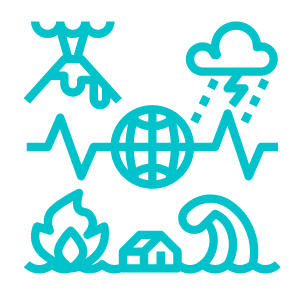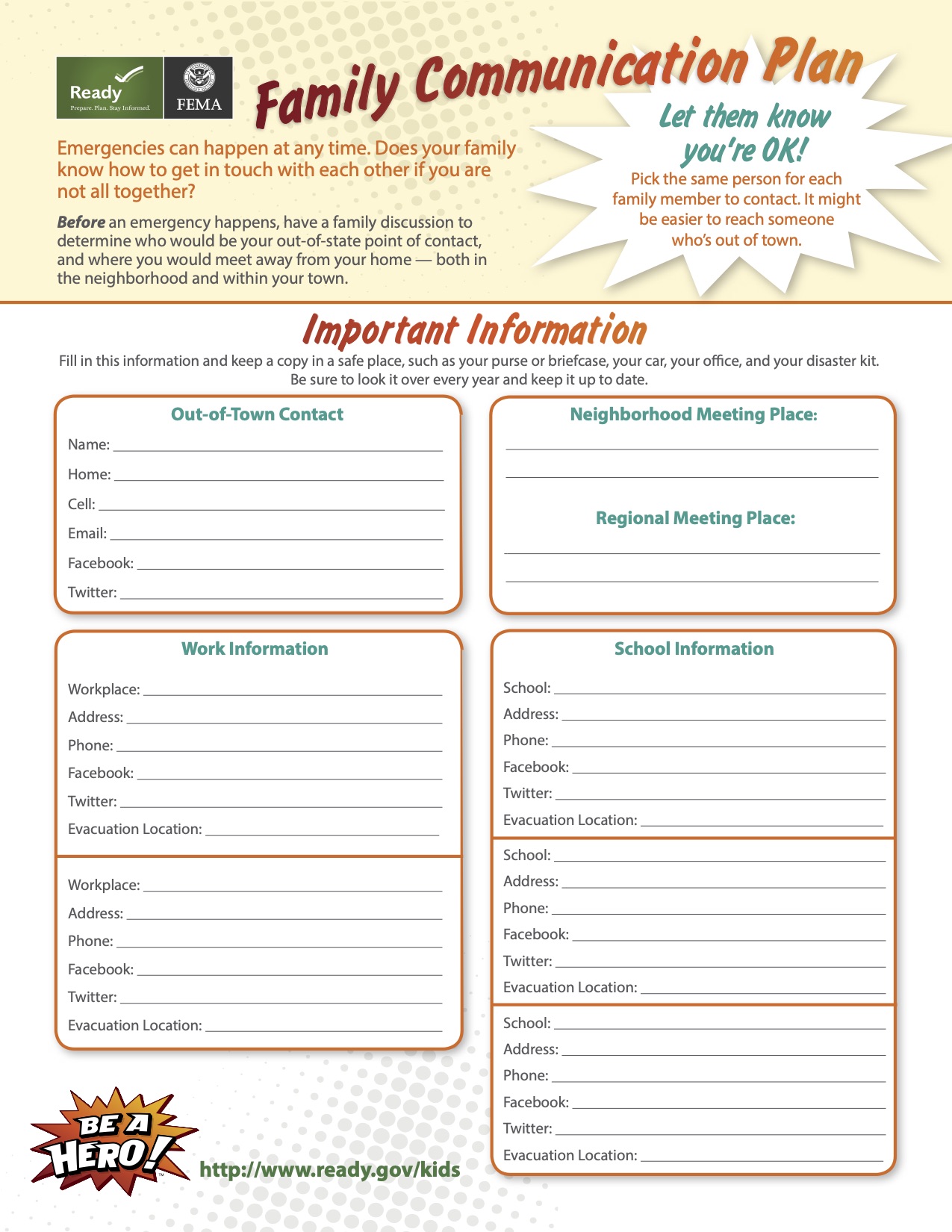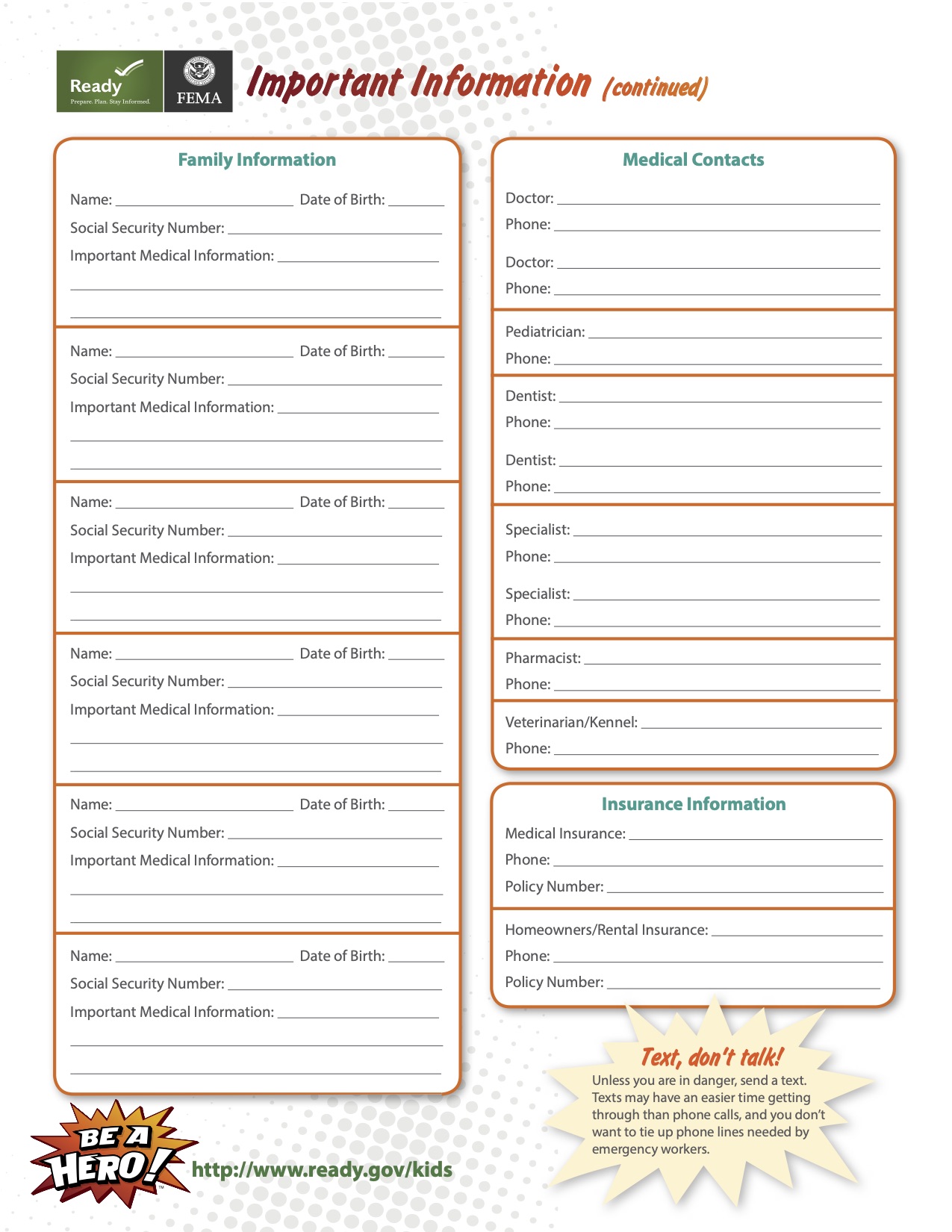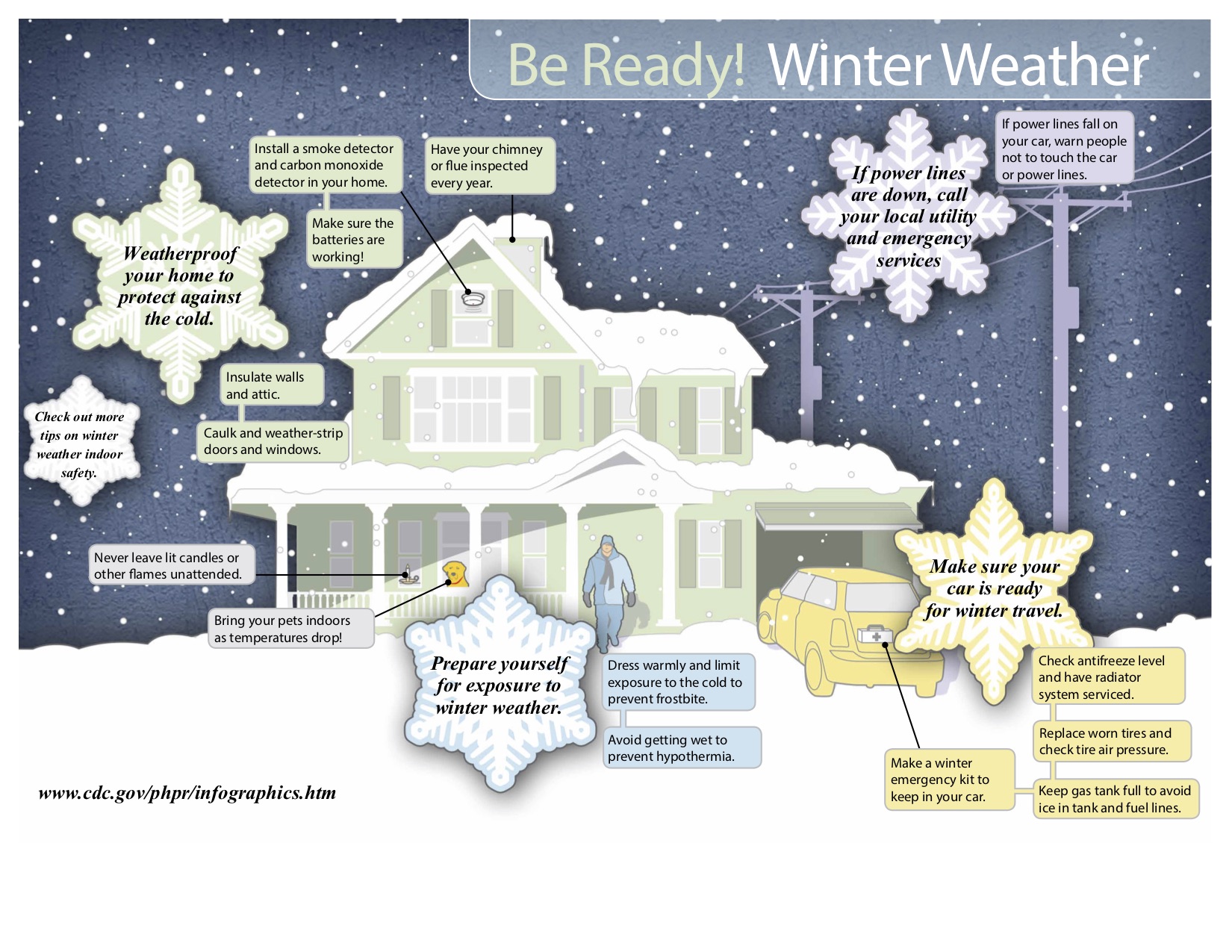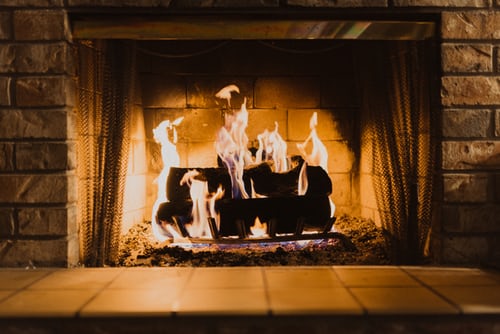Articles
Spreading Holiday Cheer: Embracing the Magic of December
December 01, 2025

December is a month of joy, celebration, and togetherness. As twinkling lights brighten the long winter nights and festive music fills the air, this season reminds us to cherish the moments that matter most. Whether it’s gathering with loved ones, reflecting on the past year, or enjoying the simple pleasures of the season, December is a time to embrace holiday cheer and spread warmth to those around us.
Raise a Toast with a Festive Fizzy Mocktail No holiday celebration is complete without a festive drink! This sparkling cranberry-orange mocktail is a delicious way to add some cheer to any gathering:
Holiday Cranberry-Orange Sparkler
Ingredients:
- 1 cup cranberry juice
- ½ cup freshly squeezed orange juice
- 1 cup sparkling water or club soda
- 1 tablespoon honey or simple syrup (optional)
- Ice cubes
- Fresh cranberries and orange slices for garnish
- Rosemary sprigs for a festive touch
Instructions:
- In a pitcher, combine cranberry juice, orange juice, and honey (if using). Stir well.
- Fill glasses with ice and pour the juice mixture over the ice.
- Top each glass with sparkling water or club soda for a refreshing fizz.
- Garnish with fresh cranberries, an orange slice, and a sprig of rosemary for a festive touch.
- Serve and enjoy the holiday cheer!
Wishing you a season filled with warmth, happiness, and holiday cheer!
Article Sources:
Thanksgiving: From Local Harvests to National Holiday
Tips to Keep a Christmas Tree Fresh
Want to Learn More?
Other Resources:
7 Water Conservation Tips for the Holidays
Embracing the Warmth of Fall, November, and Thanksgiving
October 30, 2025
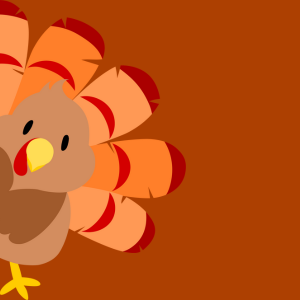
As the golden hues of autumn deepen and the air turns crisp, November welcomes us with a sense of reflection, gratitude, and togetherness. It’s a month that invites us to slow down, gather with loved ones, and celebrate the season’s simple joys. From the beauty of fall to the traditions of Thanksgiving, November is a time to appreciate what truly matters.
The History Behind November’s Name
November gets its name from the Latin word novem, meaning "nine." In the original Roman calendar, which had only ten months, November was the ninth month of the year. When the calendar was later reformed and January and February were added, November became the eleventh month—but it kept its original name. Despite the numerical mismatch, the name remained, just like with September (septem = 7), October (octo = 8), and December (decem = 10). While the calendar has changed, November has continued to mark a time of transition, gratitude, and celebration.
The Magic of Fall in November
November is the heart of autumn, where nature puts on its final display of fiery reds, burnt oranges, and deep golds before winter’s arrival. Cozy sweaters, warm drinks, and the comforting crunch of fallen leaves underfoot make this season a favorite for many. It’s the perfect time to enjoy brisk walks, visit pumpkin patches, and indulge in the warmth of home-cooked meals.
A Season of Gratitude and Gathering
At the heart of November is Thanksgiving, a holiday centered on gratitude, family, and tradition. Whether it’s a feast or a simple meal shared with loved ones, Thanksgiving is about pausing to appreciate the people and moments that bring joy to our lives. It’s also a time to give back, whether through volunteering, donating, or simply reaching out to someone who could use a little extra kindness.
Celebrating the Flavors of Fall
One of the highlights of November is the delicious food that defines the season. Classic Thanksgiving dishes like roasted turkey, stuffing, cranberry sauce, and pumpkin pie bring warmth to our tables. But beyond the holiday, the flavors of fall—apples, cinnamon, nutmeg, and squash—make every meal a comforting experience.
Simple Ways to Savor the Season
-
Start a Gratitude Tradition: Write down something you’re thankful for each day in November.
-
Enjoy Fall Activities: Visit a farmer’s market, take a scenic drive, or try a new autumn-inspired recipe.
-
Give Back: Find a way to support those in need, whether through a food drive or a small act of kindness.
As we embrace November and all the warmth it brings, let’s take time to celebrate the beauty of fall, the joy of Thanksgiving, and the many reasons we have to be grateful. Wishing you a season filled with love, laughter, and cherished moments!
Additional Articles:
Thanksgiving: From Local Harvests to National Holiday
Thanksgiving Day - Meaning, History and Facts
14 Unique Thanksgiving Dishes Popular in Specific States
Want to Learn More:
Honoring Our Heroes: A Grateful Tribute on Veterans Day
November 01, 2025

Every year on November 11th, we pause as a nation to honor the courage, sacrifice, and dedication of our veterans.
Veterans Day is more than just a federal holiday, it is a moment to reflect on the immense contributions of the men and women who have served in the U.S. Armed Forces. Their bravery and commitment have safeguarded our freedoms and shaped the course of our history.
A Legacy of Service and Sacrifice Veterans Day traces its origins to the end of World War I, when the armistice was signed on November 11, 1918. What began as Armistice Day has since evolved into a broader recognition of all veterans. It is a day to acknowledge their selflessness, resilience, and the enduring impact of their service.
A Grateful Nation Veterans have stood guard over our freedoms, ensuring that we can live in safety and peace. Their service extends beyond the battlefield, as many continue to serve their communities in various roles after military life. As we commemorate Veterans Day, let us take a moment to express our gratitude, not just today, but every day.
To all veterans: We honor you. We thank you. We remember your service and sacrifice. Your courage and dedication inspire us, and we are forever grateful.
Additional Articles:
Veterans Day: Honoring service too few will ever understand
7 Interesting Veterans Day Facts You Should Know
The Real Story of Veteran’s Day
Want to Learn More:
Celebrating Fall Festivals: A Season of Community and Tradition
October 01, 2025

As the air turns crisp and the leaves transform into brilliant shades of red and gold, communities across the country gather to celebrate the magic of fall. From pumpkin patches and hayrides to harvest fairs and cider tastings, fall festivals bring people together in a season of warmth, tradition, and joy.
The Heart of Fall Festivals
Fall festivals are more than just seasonal events, they are a time to connect with neighbors, support local artisans, and embrace the rich agricultural heritage of the season. Whether it’s a town-wide festival featuring live music and craft vendors or a small gathering at a local farm, these celebrations highlight the best of what autumn has to offer.
Seasonal Delights and Traditions
One of the best parts of fall festivals is the food! From caramel apples and roasted corn to fresh-baked pies and warm apple cider, these treats capture the flavors of the season. Many festivals also include traditional activities like corn mazes, scarecrow-making contests, and pumpkin carving, ensuring fun for the whole family.
Homemade Apple Cider Recipe
Nothing says fall like a steaming cup of homemade apple cider. Here’s an easy recipe to enjoy the taste of autumn in your own home:
Ingredients:
-
10 apples (a mix of sweet and tart varieties)
-
1 orange, sliced
-
3-4 cinnamon sticks
-
1 teaspoon whole cloves
-
1 teaspoon allspice
-
1/2 cup brown sugar (adjust to taste)
-
10 cups water
Instructions:
-
Wash and roughly chop the apples, keeping the skins and cores.
-
In a large pot, combine the apples, orange slices, cinnamon sticks, cloves, allspice, and water.
-
Bring to a boil, then reduce heat and let simmer for 2-3 hours, stirring occasionally.
-
Mash the apples and orange slices with a spoon, then simmer for another 30 minutes.
-
Strain the mixture through a fine-mesh sieve or cheesecloth into a clean pot, discarding solids.
-
Stir in brown sugar until dissolved.
-
Serve warm or chilled, and enjoy the flavors of fall!
Embracing the Spirit of the Season
Whether you’re sipping cider by a bonfire, strolling through a farmer’s market, or enjoying a hayride under the autumn sky, fall festivals remind us to slow down and appreciate the simple joys of the season. So gather your friends and family, embrace the crisp air, and celebrate the traditions that make autumn truly special.
Resources:
The Ancient Origins of Apple Cider
Want to Learn More?
The Value of Water Campaign - Imagine a Day Without Water Resources
Imagine A Day Without Water - Learning Tools and Educational Materials
Celebrating Fall Festivals: A Season of Community and Tradition
October 01, 2025

As the air turns crisp and the leaves transform into brilliant shades of red and gold, communities across the country gather to celebrate the magic of fall. From pumpkin patches and hayrides to harvest fairs and cider tastings, fall festivals bring people together in a season of warmth, tradition, and joy.
The Heart of Fall Festivals
Fall festivals are more than just seasonal events, they are a time to connect with neighbors, support local artisans, and embrace the rich agricultural heritage of the season. Whether it’s a town-wide festival featuring live music and craft vendors or a small gathering at a local farm, these celebrations highlight the best of what autumn has to offer.
Seasonal Delights and Traditions
One of the best parts of fall festivals is the food! From caramel apples and roasted corn to fresh-baked pies and warm apple cider, these treats capture the flavors of the season. Many festivals also include traditional activities like corn mazes, scarecrow-making contests, and pumpkin carving, ensuring fun for the whole family.
Homemade Apple Cider Recipe
Nothing says fall like a steaming cup of homemade apple cider. Here’s an easy recipe to enjoy the taste of autumn in your own home:
Ingredients:
-
10 apples (a mix of sweet and tart varieties)
-
1 orange, sliced
-
3-4 cinnamon sticks
-
1 teaspoon whole cloves
-
1 teaspoon allspice
-
1/2 cup brown sugar (adjust to taste)
-
10 cups water
Instructions:
-
Wash and roughly chop the apples, keeping the skins and cores.
-
In a large pot, combine the apples, orange slices, cinnamon sticks, cloves, allspice, and water.
-
Bring to a boil, then reduce heat and let simmer for 2-3 hours, stirring occasionally.
-
Mash the apples and orange slices with a spoon, then simmer for another 30 minutes.
-
Strain the mixture through a fine-mesh sieve or cheesecloth into a clean pot, discarding solids.
-
Stir in brown sugar until dissolved.
-
Serve warm or chilled, and enjoy the flavors of fall!
Embracing the Spirit of the Season
Whether you’re sipping cider by a bonfire, strolling through a farmer’s market, or enjoying a hayride under the autumn sky, fall festivals remind us to slow down and appreciate the simple joys of the season. So gather your friends and family, embrace the crisp air, and celebrate the traditions that make autumn truly special.
Resources:
The Ancient Origins of Apple Cider
The Value of Water Campaign - Imagine a Day Without Water Resources
Imagine A Day Without Water - Learning Tools and Educational Materials
Want to Learn More?
The Role of Water in Preparedness: Essential Kits for Every Season
September 02, 2025

September is National Preparedness Month, a time to reflect on how ready we are for unexpected events. Whether it's severe weather, a natural disaster, or a power outage, one thing is for certain: water plays a crucial role in our preparedness plans.
Without it, survival in an emergency becomes far more difficult. That's why having a well-stocked water supply, along with essential safety kits, is a key part of any emergency preparedness plan.
The Importance of Water in Preparedness
Water is essential for hydration, cooking, cleaning, and even hygiene during emergencies. In any emergency situation, access to clean water can be limited. That’s why you should aim to store at least one gallon of water per person per day for a minimum of three days. This can go a long way in ensuring you’re ready for a variety of emergencies—whether you’re stuck at home due to a winter storm or on the road during a power outage.
When creating your preparedness kits, always prioritize water storage and make sure you have clean, safe drinking water readily available.
Essential Preparedness Kits for Every Season
Winter Car Safety Kit
During the colder months, your car becomes an essential tool for staying mobile and safe, but it also poses unique challenges. Winter storms can leave you stranded on the road, and the cold temperatures can make emergencies more dangerous. A winter car safety kit is a must-have for every vehicle.
What to include:
-
Water - Keep bottled water in your car. In winter, the need for hydration may be less obvious, but you’ll still need it.
-
Thermal Blankets - Stay warm with emergency thermal or Mylar blankets.
-
Hand Warmers - Great for keeping your hands and body warm in an emergency.
-
Non-perishable Snacks - High-energy snacks like granola bars, nuts, and dried fruit.
-
Flashlight - With extra batteries.
-
Jumper Cables - To help start your car if the battery dies.
-
Shovel and Ice Scraper - For digging out your car or clearing ice.
-
Road Flares or Reflective Triangles - To signal for help if you’re stuck.
Summer Car Safety Kit
In the summer, the primary risks involve heat, dehydration, and getting stranded during a heatwave or a storm. Having a summer car safety kit is essential for those hot months, especially in areas prone to extreme weather.
What to include:
-
Water - Make sure to pack extra water in the car, especially during a summer road trip.
-
Sunscreen - Protect yourself from harmful UV rays if you’re waiting for help outdoors.
-
First Aid Kit - Include items like band-aids, antiseptic wipes, and pain relievers.
-
Cooling Towels or Gel - Helps reduce body temperature in extreme heat.
-
Portable Fan - A small, battery-operated fan can help cool down a hot vehicle.
-
Umbrella - For sun protection while waiting for assistance.
Power Outages Pantry Kit
Power outages can occur at any time, leaving you without lights, heat, or even access to appliances. Having a power outages pantry kit ensures you’ll be able to stay fed and hydrated during a blackout, and water plays a central role.
What to include:
-
Bottled Water - At least one gallon of water per person, per day for at least three days.
-
Non-perishable Food - Canned foods, dried fruits, and energy bars that don’t need refrigeration.
-
Manual Can Opener - To open canned goods if the power is out and you can't use an electric can opener.
-
Battery-Powered or Hand-Crank Radio - To stay informed about the situation.
-
Flashlight with Extra Batteries - Ensure your flashlights are fully stocked for lighting in the dark.
-
Portable Stove or Camping Stove - For cooking without power.
-
First Aid Kit - Just in case someone gets injured.
Home Safety Kit for First Aid
Accidents happen, and it’s important to be prepared with a well-stocked first aid kit at home. Whether you're dealing with a small cut, a sprained ankle, or a more serious emergency, your first aid kit can be a lifesaver. Water plays a role here as well, especially for cleaning wounds and staying hydrated during recovery.
What to include:
-
Sterile Water or Saline Solution - For cleaning wounds or cuts.
-
Band-Aids and Gauze Pads - To cover cuts and abrasions.
-
Antiseptic Wipes - For disinfecting injuries.
-
Burn Cream - To treat minor burns.
-
Pain Relievers - Such as ibuprofen or acetaminophen.
-
Thermometer - To monitor fever.
-
Scissors and Tweezers - For cutting gauze or removing splinters.
National Preparedness Month is the perfect time to review and refresh your emergency preparedness kits. Water is an essential element of all these kits; whether you’re preparing for a winter car emergency, a summer heatwave, a power outage, or basic first-aid situations. Stay hydrated, stay safe, and make sure you’re always ready for the unexpected!
Article Sources:
Water supply emergency preparedness
Drinking water supply for communities
Preparing for Hurricanes or Other Tropical Storms
Want to Learn More?
Other Resources:
For Kids:
READY KIDS (Kids, Teens, Families)
Back to School: The Importance of Hydration for Students
August 01, 2025

As the back-to-school season kicks into full gear, students and families are gearing up for another year of learning, growth, and new experiences. Along with packing lunchboxes, organizing school supplies, and setting new goals for the year, there’s one crucial element that often gets overlooked - hydration.
Staying properly hydrated is essential for both physical and mental well-being, especially during the busy and sometimes stressful school year.
Why Hydration Matters for Students
- Boosts Brain Function and Focus - The brain is made up of about 75% water, and staying hydrated is essential for maintaining mental clarity and focus. Dehydration can cause fatigue, difficulty concentrating, and even headaches—all of which can disrupt a student’s ability to absorb and retain information. Drinking enough water throughout the day helps improve cognitive function, memory, and alertness, giving students the mental edge they need to succeed in class.
- Supports Physical Health and Energy - School days can be long, with lots of activities and physical exertion. Hydration is essential for maintaining energy levels, especially for students who are involved in sports, after-school clubs, or other physical activities. Water helps regulate body temperature, prevent muscle cramps, and keep students feeling energized so they can stay active and focused during class and extracurricular activities.
- Enhances Mood and Reduces Stress - Staying hydrated helps balance the body’s systems and contributes to emotional well-being. Dehydration can lead to irritability, mood swings, and heightened stress, which can impact a student’s performance and relationships with peers and teachers. Proper hydration can help students manage stress, stay calm during exams, and enjoy a positive attitude throughout the school day.
- Improves Digestion and Prevents Illness - Water helps with digestion, nutrient absorption, and toxin removal from the body. Students who drink enough water are less likely to experience digestive issues, like constipation or bloating, which can be distracting during school hours. Hydration also supports the immune system, making it easier to fight off colds and illnesses that can spread easily in school environments.
- Supports Healthy Skin - Students spend long hours in school, and dry indoor air or the stress of schoolwork can take a toll on skin. Hydration is key to maintaining healthy, glowing skin. Drinking water regularly helps keep skin moisturized, flushes out toxins, and can even reduce the likelihood of breakouts, ensuring students feel confident and comfortable throughout the day.
Hydration Tips for Back to School
As students head back to class, here are some practical tips to help them stay hydrated throughout the school day:
- Pack a Reusable Water Bottle - Encourage your child to carry a reusable water bottle to school each day. Having it within easy reach will serve as a constant reminder to drink. Many schools even have water stations where students can refill their bottles throughout the day.
- Make Hydration Fun - Make drinking water more exciting by adding natural flavors. Infuse water with fruits like lemon, strawberries, or cucumber to make it more appealing. You can also try hydrating drinks like coconut water or flavored water to give kids more options.
- Set Hydration Breaks - Help students develop a hydration routine by encouraging short water breaks during study sessions. This is especially important for older students who may get caught up in homework or studying and forget to drink enough water.
- Hydrate Before and After Physical Activities - Whether it’s PE class, sports practice, or a long walk between classes, it’s important for students to hydrate before, during, and after physical activities. This helps replenish fluids lost through sweat and supports physical performance.
- Teach Them the Signs of Dehydration - Educate students about the signs of dehydration, such as dark yellow urine, dry mouth, dizziness, and fatigue. Encourage them to drink water whenever they feel thirsty or experience any of these symptoms.
Hydration for Academic Success
As we get back into the swing of school, it’s important to remember that hydration is a cornerstone of both physical and mental health. By making hydration a priority, students can improve focus, stay energized, and stay healthy throughout the school year. Water is a simple, affordable tool that can support academic success and overall well-being.
So this back-to-school season, don’t forget to pack that extra bottle of water in the backpack and remind students to sip throughout the day. Proper hydration is a key ingredient for a successful school year!
Cheers to a hydrated and successful year ahead!
Resources:
10 Back-to-School Tips for Your Best Year Yet
7 Healthy Hydration Habits to Take Back to School This Year
Summer Hydration: What Should Kids be Drinking in the Summer?
Want to Learn More?
Keeping Your Furry Friends Hydrated During the Hot Summer Months
July 09, 2025

As the temperature rises and summer makes its grand entrance, it's essential to remember that our pets need extra care to stay comfortable and healthy.
Just like us, pets can become dehydrated in the heat, which can lead to serious health issues if not properly managed. Ensuring your pet stays hydrated during these hot months is key to their well-being and safety.
Why Hydration is Important for Pets
Dehydration can happen quickly during the summer, especially when pets are outside or active. Animals, particularly dogs, regulate their body temperature through panting and sweating through their paws. During hot weather, they lose more fluids, and if those fluids aren't replaced, it can lead to dehydration.
Dehydration can cause symptoms such as:
-
Dry, sticky gums
-
Lethargy or lack of energy
-
Sunken eyes or dull coat
-
Vomiting or diarrhea (in severe cases)
-
Increased heart rate or breathing rate
To avoid these issues, keeping your pet properly hydrated is crucial!
Tips for Keeping Your Pet Hydrated
- Provide Fresh Water Throughout the Day - Ensure that your pet always has access to fresh, clean water. If you’re out and about, bring a portable water bowl or hydration bottle with you so your pet can stay hydrated while on walks or outings. During long car rides, keep a bowl of water handy, especially if the car is getting warm.
- Offer Water-Infused Treats - If your pet doesn’t seem interested in drinking enough water, consider adding flavor or creating water-based treats. You can freeze water with a few of your pet’s favorite fruits, like blueberries or strawberries, to make a fun frozen snack. There are also specially made pet-friendly ice cubes that include flavors designed to encourage pets to drink more.
- Keep Water Bowls Cool - In the summer heat, water bowls can quickly become warm, which may discourage your pet from drinking. To keep their water cool and refreshing, place the bowl in a shaded spot, and consider using ceramic or stainless-steel bowls, as they tend to stay cooler than plastic bowls.
- Offer Wet Food or Ice Cubes - For pets that are reluctant to drink water, you can supplement their hydration by offering wet food, which contains more moisture than dry kibble. Some pets also love ice cubes, so you can freeze some water into cubes and let your dog or cat enjoy them as a treat.
- Encourage Regular Breaks for Water - If your pet is active, such as during walks or playtime, be sure to take regular breaks to offer them water. Active dogs especially can become overheated and dehydrated quickly. Set a timer to remind yourself to give your pet water during walks or playtime, particularly on hot days.
- Create a Cool Resting Spot - Pets can get overheated quickly, so make sure they have access to a cool, shaded area where they can rest and relax. If you're outside, create a shaded spot using a canopy or umbrella, and make sure your pet has a comfy, cool surface to lie on. Dogs, especially, will benefit from resting in cooler areas during peak heat.
Signs of Dehydration in Pets
It’s important to know the warning signs of dehydration so you can act quickly if your pet shows any of these symptoms:
-
Dry Nose or Gums - If your pet’s nose is dry or their gums appear sticky, they may be dehydrated.
-
Lethargy or Weakness - Dehydration can make your pet feel sluggish or lethargic.
-
Excessive Panting - While panting is normal in heat, excessive panting can be a sign of dehydration or overheating.
-
Sunken Eyes - Pets who are dehydrated may have eyes that look sunken or dull.
-
Loss of Skin Elasticity - You can test this by gently pinching the skin on the back of your pet’s neck. If it doesn’t quickly return to its original position, your pet may be dehydrated.
If you notice any of these signs, contact your veterinarian immediately for advice.
Hydration Tips for Cats
Cats can be particularly tricky when it comes to hydration, as some are less inclined to drink water than others. Here are some extra tips for cats:
-
Use a Cat Water Fountain - Many cats are more likely to drink from a water fountain because the moving water is more enticing. Cats tend to prefer fresh, running water over stagnant bowls.
-
Add Water to Their Food - You can mix water into your cat's wet food or provide extra moisture by offering a bit of tuna water or low-sodium chicken broth (without onions or garlic).
-
Create a Relaxing Environment - Cats are sensitive to stress, and the heat can make them even more anxious. Provide them with a cool and quiet place to relax, away from direct sunlight and loud noises.
Let’s keep our pets safe and happy this summer by ensuring they have plenty of fresh water and a cool environment to thrive in!
Additional Article Sources
Pet Hydration: More Than a Water Bowl
How to Keep Your Pet Hydrated and Spot Signs of Dehydration
The Pet Hydration Conversation
Want to Learn More?
Celebrating Independence: A Safe and Fun 4th of July
July 01, 2025

The 4th of July is a time to come together with family and friends, celebrate our nation's independence, and enjoy the warmth of summer with BBQs, fireworks, and poolside fun. While it’s an exciting and festive time of year, it’s also important to remember that safety should always come first. Whether you're grilling up some tasty treats, cooling off in the pool, or enjoying a spectacular fireworks display, here are some essential safety tips to ensure a fun and accident-free 4th of July.
BBQ and Grilling Safety
Grilling is a classic way to celebrate the 4th of July, but it comes with its own set of risks if not handled properly. Here are some key tips to keep your BBQ fun and safe:
- Set Up Your Grill in an Open Area - Always place your grill in a well-ventilated, open area, away from any structures, trees, or flammable materials. This helps prevent any accidental fires and allows for proper ventilation.
- Never Leave the Grill Unattended - It’s easy to get caught up in conversation or the excitement of the day, but always keep an eye on the grill. Leaving it unattended could lead to flare-ups or fires. If you need to step away, ask someone to keep an eye on the grill in your absence.
- Check for Gas Leaks - Before you start grilling, always check for any gas leaks on your propane tank. You can do this by applying a soapy water mixture to the hose and tank connection. If you see bubbles forming, turn off the gas and repair the leak before lighting the grill.
- Use Proper Grilling Tools - When handling hot grills, always use long-handled tools to avoid burns. Never try to move the grill once it’s hot, and make sure you have oven mitts on hand for extra protection.
- Keep the Grill Clean - Grease buildup in your grill can lead to dangerous flare-ups. Clean your grill thoroughly before and after each use to ensure a safer cooking experience.
Pool Safety: Keeping Everyone Cool and Safe
Whether you're splashing around with kids or lounging by the pool, it’s important to be mindful of pool safety. Here's how to enjoy the water safely:
- Supervise Children at All Times - Never leave children unattended near water, even if they know how to swim. Always have a responsible adult actively supervising swimmers, and designate a "water watcher" to keep a close eye on those in the pool.
- Ensure the Pool is Properly Secured - If you have young children at your gathering, ensure that the pool is properly fenced with a gate that locks. This is the first line of defense against accidental drowning when no one is looking.
- Know Pool Safety Rules - Make sure all guests know the pool rules. This includes no running, no diving in shallow areas, and no horseplay that could lead to injuries.
- Avoid Overcrowding - Pools can get crowded, and while it’s fun to have many people in the water, overcrowding can lead to accidents. Be mindful of the number of people in the pool at one time and avoid excessive splashing that could lead to slips and falls.
- Stay Hydrated - Even though you’re surrounded by water, remember that staying hydrated is key when spending long hours outside in the heat. Drink plenty of water throughout the day to avoid dehydration.
Fireworks Safety: Lighting Up the Sky Safely
Fireworks are one of the highlights of 4th of July celebrations, but they also come with significant risks. Here’s how to enjoy fireworks safely:
- Follow Local Laws - Before lighting any fireworks, make sure you are aware of your local laws and ordinances. Some areas prohibit certain types of fireworks, so it’s important to only use those that are legal in your area.
- Only Purchase Fireworks from Reputable Sources - Always buy fireworks from licensed and legal vendors. Avoid homemade or questionable fireworks, as they may not be safe to use.
- Use Fireworks Outdoors in Open Areas - Always light fireworks outdoors, in a flat, open area away from buildings, trees, and vehicles. Keep a safe distance between spectators and the fireworks display, and never point or throw fireworks at people.
- Keep Water or Fire Extinguishers Nearby - Have a hose, bucket of water, or fire extinguisher nearby when lighting fireworks, in case of a fire. Douse used fireworks in water before disposing of them to ensure they are fully extinguished.
- Supervise Children and Never Let Them Handle Fireworks - Children should never be allowed to light or handle fireworks, including sparklers. Sparklers burn at extremely high temperatures and can cause burns or injuries. If you’re supervising young children, make sure they only watch the fireworks from a safe distance.
- Stay Away from Duds - If a firework doesn’t go off, don’t attempt to relight it. Wait 20 minutes and then carefully soak it in water before disposing of it. Never try to handle a malfunctioning firework.
HAPPY INDEPENDENCE DAY USA & CANADA!
Additional Articles
https://ohsonline.com/articles/2017/05/22/grilling-safety-tips-from-nfpa.
https://www.nfpa.org/education-and-research/home-fire-safety/grilling
https://members.hpba.org/Consumer-Information/Barbecue-Outdoor-Living/Grill-Safety
https://www.senate.gov/about/origins-foundations/senate-and-constitution/constitution.htm
https://www.loc.gov/item/today-in-history/july-04/
https://www.mathnasium.com/math-centers/hinsdale/news/14-fun-facts-about-fireworks
Want to Learn More?
Cooling Off This Summer: The Importance of Hydration and Water Conservation
June 01, 2025

June marks the official start of summer, bringing longer days, sunshine, and warmer temperatures.
With the heat comes the increased need to stay hydrated, but it’s also a time when we need to be more mindful of our water usage.
Whether you’re spending time outdoors, engaging in summer activities, or enjoying a cool drink, water is essential for both your well-being and the planet.
Hydration: A Vital Part of Summer Health
Summer heat can be relentless, and staying hydrated is critical to maintaining your health. Here are some important reasons why hydration is especially important during the warmer months:
- Regulates Body Temperature: As temperatures rise, your body sweats more to cool off. Water helps regulate your body temperature, preventing heat exhaustion and heat stroke.
- Boosts Energy: Dehydration can make you feel sluggish and tired. Proper hydration keeps your energy levels up, making it easier to enjoy all the fun summer activities.
- Supports Digestion: Water aids in digestion, which can sometimes slow down in the heat. Keeping hydrated helps prevent issues like bloating or constipation.
- Keeps Skin Healthy: The hot sun and dry air can leave your skin parched, but proper hydration helps maintain skin moisture and elasticity.
Tip: Carry a reusable water bottle with you throughout the day and sip water regularly to maintain your hydration levels. Aim for at least eight glasses a day, and more if you’re engaging in outdoor activities or exercise.
Water Conservation in Summer: Protecting Our Most Valuable Resource
As temperatures climb, the demand for water also rises, particularly for things like watering lawns, filling pools, and taking longer showers. It’s more important than ever to practice water conservation during the summer months. Here are some easy and impactful ways to conserve water this summer:
- Water Your Lawn Wisely: Watering your lawn early in the morning or late in the evening reduces evaporation. Watering during the heat of the day can lead to wasteful runoff. Consider installing a drip irrigation system or soaker hoses to minimize water usage while ensuring your plants get the moisture they need.
- Limit Time in the Shower: Summer often brings longer, more refreshing showers, but reducing your time in the shower helps save gallons of water. Try setting a timer to remind yourself to finish up within five to ten minutes.
- Use a Pool Cover: If you have a pool, using a cover when it's not in use helps reduce evaporation, saving thousands of gallons of water throughout the summer.
- Fix Leaky Faucets and Pipes: Leaky faucets and pipes are often overlooked but can waste a surprising amount of water. Take the time to fix any leaks in your plumbing system to conserve water.
- Re-purpose Water: Use leftover water from boiling pasta or vegetables to water your plants. Even rainwater can be collected and used for outdoor needs like gardening or washing the car.
Cool Off Without Wasting Water: Summer Activities for Fun and Conservation
Summer is the perfect time to enjoy water-based activities like swimming, boating, or cooling off with a water balloon fight. However, you can have fun without wasting water in the process:
- Stay Cool with Homemade Ice Pops: Instead of using a pool or constantly filling up water balloons, make your own homemade ice pops or flavored ice cubes using leftover water or fruit juices.
- Outdoor Fun with Minimal Water: Plan a scavenger hunt or go on a nature walk—activities that keep everyone cool without the need for excessive water use.
- Hydrate with Water-Based Recipes: Instead of sugary sodas or juices, try making your own flavored water with fresh fruits, herbs, and a splash of citrus. This gives you hydration and a refreshing twist on regular water.
Summer is a time to relax, have fun, and enjoy the great outdoors—but it's also a time to remember the value of water. By staying hydrated and practicing water conservation, we can make sure that our water resources stay abundant for future generations, all while keeping ourselves cool and healthy. So, drink up, stay refreshed, and let’s do our part to protect the planet this summer.
Happy Summer! Stay hydrated and water-wise.
Celebrating Clean Water: Honoring Drinking Water Week
April 30, 2025
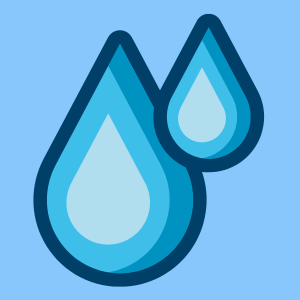
Every time you turn on the tap, clean and safe water flows out.. ready to drink, cook with, or use for daily tasks.
It’s a simple action we often take for granted, but behind every drop is a vast system of infrastructure, dedicated professionals, and careful planning.
That’s why Drinking Water Week is so important. It’s a time to recognize the value of clean water and the efforts that make it possible.
Why Drinking Water Matters
Clean, reliable drinking water is essential for our health, economy, and quality of life. It supports everything from personal hydration to public health, agriculture, and industry. Without it, our communities simply wouldn’t function. Yet, providing safe water requires ongoing investment in infrastructure, treatment processes, and dedicated teams who ensure that water meets strict quality standards every day.
How Your Water Stays Safe
Your local water district works around the clock to monitor, treat, and deliver water that meets or exceeds all regulatory standards. From state-of-the-art treatment plants to routine testing and maintenance, these behind-the-scenes efforts ensure the water you rely on is clean and safe. Water professionals, from engineers to field crews, play a critical role in keeping this essential service running smoothly.
Simple Ways to Appreciate Your Water
Drinking Water Week is a great time to reflect on the importance of water and take small steps to protect and conserve this vital resource:
-
Stay Informed: Learn about your local water source and the treatment process.
-
Practice Water Conservation: Simple habits like turning off the tap while brushing your teeth or fixing leaks can save thousands of gallons of water each year.
-
Protect Water Sources: Properly dispose of household chemicals, medications, and waste to prevent contamination.
A Future Built on Safe Water
Investing in water infrastructure ensures that future generations continue to enjoy clean and reliable water. Water districts across the country are working on modernization projects, sustainable water management, and advanced treatment technologies to meet the challenges of tomorrow.
This Drinking Water Week, take a moment to appreciate the water that sustains our lives and the professionals who make it possible. Whether through conservation efforts, community engagement, or simply raising awareness, we can all play a role in ensuring a future where clean water remains a certainty for everyone.
Additional Articles
https://www.energy.gov/energysaver/spring-and-summer-energy-saving-tips
Want to Learn More?
New Years Resolutions for Kids Worksheet
Celebrate National Garden Month this April
April 01, 2025

As April blossoms into National Garden Month, it's the perfect time to revel in the beauty and serenity of your own backyard. Whether you're a seasoned gardener or just beginning to cultivate your green thumb, there's something truly magical about connecting with nature and watching your outdoor oasis come to life.
Enjoy exploring these tips for prepping your yard or garden to the fullest, including bug and pest management, keeping your grass green, water conservation, and staying hydrated and protected from the sun's rays.
Embrace Your Outdoor Sanctuary
- Bug and Pest Management: Keep unwanted pests at bay by practicing natural pest control methods. Plant insect-repelling herbs like basil, lavender, and mint around your garden beds, and use natural repellents such as neem oil or diatomaceous earth to deter pests without harming beneficial insects.
- Keep Your Grass Green: Maintain a lush, green lawn by mowing regularly at the appropriate height for your grass type, aerating to improve soil health and drainage, and fertilizing with a balanced fertilizer tailored to your lawn's needs. Water deeply and infrequently to encourage deep root growth and resilience to drought.
- Water Conservation: As the days become warmer and longer, it's essential to practice water conservation to preserve this precious resource. Install a rain barrel to collect rainwater for watering your garden, use drip irrigation or soaker hoses to deliver water directly to plant roots, and mulch garden beds to retain moisture and reduce evaporation.
- Hydration and Sun Exposure: Stay hydrated and protected from the sun's rays while enjoying your outdoor oasis. Keep a reusable water bottle handy and sip water regularly to stay hydrated, especially during hot weather. Wear a wide-brimmed hat, lightweight clothing with UPF protection, and apply sunscreen with a high SPF to shield your skin from harmful UV rays.
Additional Tips for Garden Enjoyment
- Create Outdoor Living Spaces: Enhance your yard or garden with inviting outdoor living spaces where you can relax, entertain, and connect with loved ones. Add comfortable seating, ambient lighting, and decorative elements to create a welcoming atmosphere for outdoor gatherings and leisure activities.
- Encourage Wildlife: Foster a thriving ecosystem in your yard or garden by providing food, water, and shelter for local wildlife. Install bird feeders, bird baths, and native plantings to attract birds, butterflies, and beneficial insects, enhancing biodiversity and ecological balance.
- Practice Mindfulness: Take time to slow down, observe nature's beauty, and immerse yourself in the present moment. Practice mindfulness meditation, yoga, or simply sit quietly and listen to the sounds of birds singing and leaves rustling in the breeze.
Cultivate Your Garden Sanctuary
As we celebrate National Garden Month, let's embrace the opportunity to connect with nature, nurture our outdoor sanctuaries, and cultivate a deeper appreciation for the beauty and abundance of the natural world. By practicing sustainable gardening techniques, conserving water, staying hydrated and protected from the sun, and creating inviting outdoor spaces, we can enjoy our yards and gardens to the fullest while fostering a sense of harmony and well-being.
Here's to a season of growth, beauty, and tranquility in your garden sanctuary!
Additional Articles
https://www.rhs.org.uk/garden-inspiration/get-gardening/10-ways-to-a-low-maintenance-garden
https://www.rhs.org.uk/garden-design/low-maintenance-gardening
https://www.forbes.com/home-improvement/outdoor/low-maintenance-landscaping-ideas/
https://www.gardenersworld.com/how-to/grow-plants/gardening-for-beginners-10-tips/
https://www.almanac.com/vegetable-gardening-for-beginners
https://www.betterhealth.vic.gov.au/health/healthyliving/gardening-safety#child-safety-in-the-garden
https://www.montessorinature.com/importance-benefits-gardening-children-toddlers-preschoolers/
Want to Learn More
Welcome Spring & Springtime Prep!
March 24, 2025

As the days grow longer and the weather begins to warm, it's time to shake off the winter chill and prepare for the vibrant renewal of spring. From sprucing up your home to revitalizing your lawn and garden, there's plenty to do to welcome the new season with open arms.
Explore these essential tips for springtime prep to help you make the most of this rejuvenating time of year.
Preparing Your Home for Spring
1. Inspect Your Roof and Gutters: Check for any damage or debris that may have accumulated over the winter months. Clean out gutters and downspouts to ensure proper drainage and prevent water damage.
2. Service Your HVAC System: Schedule a professional tune-up for your heating, ventilation, and air conditioning (HVAC) system to ensure optimal performance as the weather warms up. Replace air filters for improved air quality.
3. Freshen Up Your Décor: Embrace the spirit of spring by introducing touches of color and freshness into your home décor. Swap out heavy winter textiles for lighter fabrics and add floral accents or potted plants to brighten up your living spaces.
4. Declutter and Organize: Take advantage of the season of renewal to declutter and organize your home. Donate or discard items you no longer need and create a sense of spaciousness and serenity in your living environment.
Preparing Your Lawn and Garden for Spring
1. Clean Up Your Yard: Remove any debris, fallen leaves, or dead vegetation from your yard and garden beds to allow new growth to emerge unimpeded. Rake and aerate your lawn to promote healthy turf growth.
2. Prune Trees and Shrubs: Trim back overgrown branches and shrubs to encourage healthy growth and improve the appearance of your landscape. Remove any dead or diseased wood to prevent the spread of pests and disease.
3. Plan Your Plantings: Take stock of your garden and plan for spring planting. Choose native plants and flowers that thrive in your climate and soil conditions and consider incorporating pollinator-friendly species to support local wildlife.
4. Mulch and Fertilize: Apply a layer of organic mulch to garden beds to retain moisture, suppress weeds, and enrich the soil. Fertilize your lawn and garden with a balanced fertilizer to promote vigorous growth and vibrant blooms.
Bug and Mosquito Prevention
1. Eliminate Standing Water: Mosquitoes breed in stagnant water, so be sure to eliminate any sources of standing water around your property. Check for clogged gutters, birdbaths, and flowerpots, and empty or treat them regularly to prevent mosquito breeding.
2. Use Natural Repellents: Consider using natural mosquito repellents such as citronella candles, mosquito-repelling plants like lavender and marigolds, or essential oils like lemon eucalyptus to keep bugs at bay.
3. Install Screens and Seals: Keep bugs out of your home by installing screens on windows and doors and sealing any gaps or cracks where pests could enter. Consider using mesh covers for outdoor dining areas to create a bug-free zone for outdoor entertaining.
4. Schedule Pest Control Services: If you're dealing with persistent pest problems, consider hiring a professional pest control service to assess your property and implement effective pest management strategies tailored to your needs.
With these essential tips for springtime prep, you'll be well-equipped to embrace the beauty and vitality of the season. From refreshing your home to revitalizing your outdoor spaces and keeping pesky bugs at bay, there's plenty you can do to make the most of this exciting time of year.
Here's to a joyful and rejuvenating spring season ahead!
Additional Articles
https://www.energy.gov/energysaver/spring-and-summer-energy-saving-tips
https://reliantpest.com/preparing-for-and-preventing-springtime-pests/
https://www.storespace.com/tips-advice/moving/organization/how-to-get-your-home-ready-for-spring
https://www.allstate.com/resources/home-insurance/prepping-home-for-spring
https://www.homedepot.com/c/ah/spring-lawn-care-tips/9ba683603be9fa5395fab90c968dd9f
https://www.mosquito-authority.com/blog/prepare-your-yard-for-next-spring/
https://www.knockoutmosquito.com/how-to-make-your-yard-uninviting-for-mosquitoes/
Want to Learn More
FIX A LEAK AWARENESS
March 03, 2025
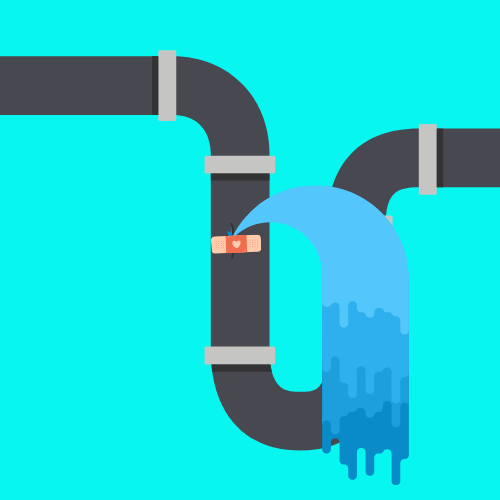
As the weather transitions into spring, it's the perfect time to take stock of your home's plumbing system and safeguard against leaks. Did you know that "Fix A Leak Week" is celebrated every March, highlighting the importance of detecting and repairing leaks to conserve water and prevent costly damage?
So, let’s explore how to identify leaks in your home, the EPA's recommendations for water leak sources, and the best ways to protect your property as we welcome the arrival of springtime.
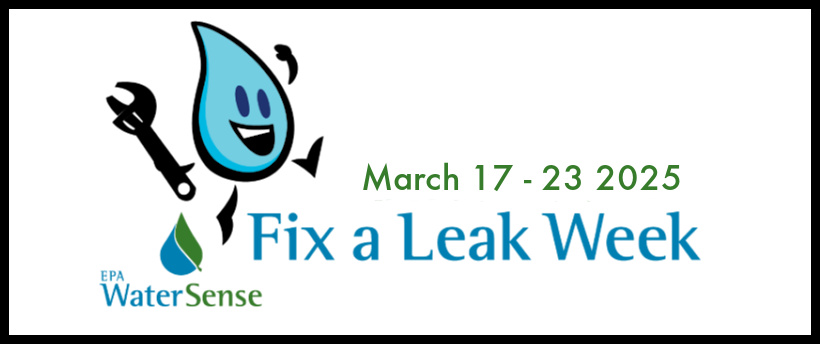
Identifying Leaks
1. Check Your Water Meter: A sudden increase in your water bill could indicate a hidden leak. Take note of your water meter readings before and after a period of no water usage. If there's a discrepancy, you may have a leak.
2. Inspect Visible Pipes: Look for signs of water damage, such as water stains, mold growth, or peeling paint, near exposed pipes under sinks, behind appliances, and in basements or crawl spaces.
3. Listen for Dripping Sounds: Pay attention to any unusual sounds, such as dripping or running water, especially in areas where pipes are located. Even a small drip can indicate a hidden leak.
4. Check Toilet Tanks and Bowls: Add a few drops of food coloring to the toilet tank and wait to see if the color appears in the bowl without flushing. If it does, you likely have a leaky toilet flapper that needs replacing.
EPA Recommendations for Water Leak Sources
The Environmental Protection Agency (EPA) identifies common sources of household water leaks that homeowners should be aware of:
- Toilets: Leaky toilet flappers are a common culprit for water waste. Check for leaks by adding food coloring to the toilet tank and observing if it seeps into the bowl without flushing.
- Faucets: Dripping faucets can waste a significant amount of water over time. Replace worn-out washers or seals to stop the leaks and conserve water.
- Showerheads: A leaky showerhead can waste gallons of water per day. Ensure a tight seal by replacing worn-out gaskets or installing a water-efficient showerhead.
- Outdoor Irrigation Systems: Inspect outdoor sprinkler systems for leaks, clogs, or misalignments that could lead to water waste. Adjust sprinkler heads as needed to prevent overspray onto sidewalks or driveways.
Preventing Leaks
1. Schedule Regular Inspections: Arrange for a professional plumber to inspect your home's plumbing system annually. Early detection of leaks can prevent extensive water damage and costly repairs down the line.
2. Install Leak Detection Devices: Consider investing in smart leak detection devices that can alert you to potential leaks or abnormal water usage in real-time, giving you peace of mind and allowing for prompt action.
3. Maintain Your Plumbing System: Regularly maintain your plumbing fixtures and appliances to prevent leaks. Replace worn-out washers, gaskets, and seals as needed, and schedule professional maintenance for your water heater and irrigation system.
4. Protect Outdoor Faucets: As spring brings warmer weather, be sure to inspect and insulate outdoor faucets and pipes to prevent freezing and potential leaks. Disconnect and drain garden hoses, and consider installing frost-proof spigots if necessary.
By taking proactive steps to identify and prevent leaks in your home, you can protect your property, conserve water, and save money on utility bills. As "Fix A Leak Week" reminds us, a little prevention now can go a long way in preserving our planet's precious resources and ensuring a sustainable future for generations to come.
Here's to a leak-free and water-wise spring season ahead!
Additional Articles
https://www.epa.gov/watersense/fix-leak-week.
https://19january2017snapshot.epa.gov/www3/watersense/pubs/fixleak.html
https://www.forsythco.com/Portals/0/DeptDoc/Water%20and%20Sewer%20Dept/Handouts
https://wildernesspsd.myruralwater.com/epa-leak-information
Want to Learn More
Wintertime Water Pipe Preservation Tips
February 01, 2025
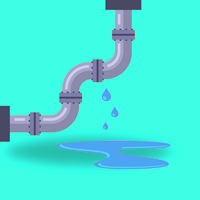
As temperatures plummet and winter tightens its grip, the specter of frozen water pipes becomes a pressing concern for homeowners. Are your pipes adequately fortified against the bitter cold to stave off potential disasters?
Pipes situated below your home, along exterior walls, or in shallow ground such as sprinkler systems are especially susceptible to cracking and bursting when exposed to prolonged freezing temperatures. Even interior pipes in poorly insulated areas or subjected to power outages can fall victim to freezing, often resulting in cracks and bursts as they thaw.
But fret not! With proactive planning and preparation, you can shield your pipes from winter's icy grip. Here are some updated cold weather prep, prevention, and thawing tips to ensure your pipes remain intact and functional throughout the season:
Freeze Prevention Tips
- Stay Informed: Keep a close watch on local weather forecasts and adjust your freeze prevention measures accordingly. It's wise to maintain protective measures until after the anticipated final freeze.
- Maintain Consistent Temperature: Strive to keep your home's interior temperature steady, ideally at 55 degrees Fahrenheit or higher. This helps prevent pipes from reaching the critical freezing point of around 20 degrees Fahrenheit.
- Optimize Heat Circulation:
- Keep garage doors closed whenever feasible to retain warmth.
- Open all interior doors to promote better heat circulation throughout the house. Don't overlook bathroom cabinet doors, especially at night.
Pipe Thawing Tips
Should you discover frozen pipes—typically signaled by a lack of water flow or reduced water pressure—employ these additional steps to safely thaw them:
- Locate the Frozen Area: Identify the section of the pipe that's frozen. This may be indicated by a bulge, frost accumulation, or simply where the water flow stops.
- Apply Heat Gradually: Avoid using high heat directly on frozen pipes, as this can cause them to crack or burst. Instead, try the following methods:
- Wrap towels soaked in warm water around the affected section of the pipe.
- Use a portable space heater set to a low setting to warm the surrounding area gradually.
- Use a heat lamp or infrared lamp to apply gentle heat to the frozen pipe.
- If the frozen section is accessible, gently pour warm (not boiling) water over it to thaw the ice.
- Open Faucets: As you apply heat to the frozen pipe, open nearby faucets to allow any melting ice to escape. This can help relieve pressure within the pipe and prevent bursting.
- Inspect for Damage: After successfully thawing the pipe, inspect it carefully for any signs of damage, such as cracks or leaks. If damage is detected, it's advisable to seek professional assistance to address the issue promptly.
By incorporating these additional thawing steps into your winter preparedness plan, you can minimize the risk of frozen pipes wreaking havoc on your home. Remember, a little proactive maintenance now can save you from a world of trouble later on.
Stay warm, stay safe, and may your pipes remain unfrozen throughout the winter months!
Additional Articles
https://www.thespruce.com/how-to-protect-your-home-from-freezing-temperatures-1388721
https://todayshomeowner.com/weather/guides/how-to-protect-your-home-during-extreme-cold-weather/
https://protectyourpipes.org/frozen-pipes
Want to Learn More?
Staying Motivated & Focused in the New Year!
January 01, 2025

As we embark on a new year filled with endless possibilities, it's natural to feel a surge of motivation and excitement for what lies ahead. However, maintaining that momentum and focus can sometimes prove challenging amidst the hustle and bustle of daily life.
But fear not, for with the right strategies and mindset, you can stay motivated, focused, and on track to achieve your goals. Here are some tips to help you kick-start the new year with renewed vigor and determination:
Hydration Tips
1. Drink Water Regularly: Hydration is key to maintaining optimal cognitive function and overall well-being. Make it a habit to drink water regularly throughout the day, aiming for at least eight glasses or more depending on your activity level and environment.
2. Infuse Flavor: If plain water feels bland, infuse it with fresh fruits, herbs, or cucumber slices for a refreshing twist. Experiment with different flavor combinations to keep hydration interesting and enjoyable!
3. Set Reminders: Use smartphone apps or set alarms to remind yourself to drink water at regular intervals. This simple yet effective strategy can help you stay on top of your hydration goals, especially during busy days!
Stress Management Tips
1. Practice Mindfulness: Incorporate mindfulness practices such as meditation, deep breathing exercises, or yoga into your daily routine to reduce stress and promote mental clarity. Even just a few minutes of mindful breathing can help calm your mind and improve focus.
2. Establish Boundaries: Learn to say no to commitments or obligations that drain your energy and contribute to stress. Set boundaries to protect your time and prioritize activities that align with your goals and values.
3. Take Breaks: Schedule regular breaks throughout your day to rest, recharge, and engage in activities that bring you joy. Whether it's going for a walk, listening to music, or enjoying a hobby, taking breaks can help prevent burnout and enhance productivity.
Tips for Staying Focused
1. Set Clear Goals: Define specific, achievable goals for the new year and break them down into actionable steps. Having a clear roadmap will help you stay focused and motivated as you work towards your objectives.
2. Eliminate Distractions: Identify common distractions in your environment, such as social media, email notifications, or cluttered workspaces, and take steps to minimize them. Create a distraction-free zone where you can concentrate fully on your tasks.
3. Use Time Management Techniques: Experiment with time management techniques like the Pomodoro Technique or the Eisenhower Matrix to prioritize tasks, manage your time effectively, and maintain focus throughout the day.
4. Celebrate Progress: Celebrate your achievements, no matter how small, and acknowledge your progress towards your goals! Cultivate a positive mindset and focus on the journey rather than solely the destination.
By implementing these tips for hydration, stress management, and focus, you can harness the energy of the new year and propel yourself towards success! Remember, consistency and perseverance are key, so stay committed to your goals and believe in your ability to achieve greatness.
Here's to a motivated, focused, and fulfilling year ahead!
Additional Articles
https://www.linkedin.com/pulse/6-tips-staying-motivated-productive-new-year-vaportals-team/
https://semspub.epa.gov/work/HQ/174228.pdf
https://www.ncbi.nlm.nih.gov/pmc/articles/PMC3222505/
https://www.ncoa.org/article/10-reasons-why-hydration-is-important
Want to Learn More
New Years Resolutions for Kids Worksheet
Wishing You Joy and Peace
December 01, 2024

'Tis the season to spread joy, laughter, and good cheer! As we embrace the magic of the holiday season, let's take a moment to celebrate the spirit of togetherness and gratitude that fills our hearts.
Whether you're gathered with family and friends, or enjoying quiet moments of reflection, may this holiday season be filled with warmth, love, and countless blessings.
As we exchange gifts and share laughter, let's remember to spread kindness and compassion to those in need. Whether through acts of charity, volunteering, or simply lending a listening ear, let's extend a helping hand to those who may be struggling during this time of year. Together, we can make a difference and brighten the lives of others in our community.
From our hearts to yours, we wish you a holiday season filled with love, laughter, and cherished moments. May the magic of the holidays surround you, and may the coming year bring you health, happiness, and countless blessings.
Happy holidays to you and yours!
Holiday Mocktail Recipe: Cranberry Sparkler
Ingredients
- 1 cup cranberry juice
- 1/2 cup sparkling water or club soda
- 1 tablespoon freshly squeezed lime juice
- 1 tablespoon honey or maple syrup (adjust to taste)
- Ice cubes
- Fresh cranberries and rosemary sprigs for garnish (optional)
Instructions
1. In a mixing glass or pitcher, combine cranberry juice, sparkling water, lime juice, and honey or maple syrup. Stir until well combined.
2. Fill serving glasses with ice cubes and pour the cranberry mixture over the ice.
3. Garnish with fresh cranberries and rosemary sprigs for a festive touch.
4. Serve immediately and enjoy!
Want to Learn More
We Are Grateful
October 31, 2024

As Thanksgiving approaches, we're reminded of the countless blessings in our lives and the importance of gratitude. It's a time to come together with loved ones, reflect on the year's blessings, and express appreciation for the abundance that surrounds us.
As we gather around the table to share a meal and create cherished memories, let us also take a moment to honor our veterans and express our heartfelt gratitude for their service and sacrifice.
Thanking Our Veterans
This Veterans Day, we pause to honor the brave men and women who have served and continue to serve our country with courage, dedication, and selflessness. These heroes have answered the call to defend our freedoms, protect our nation, and uphold the values we hold dear. Their unwavering commitment to duty and sacrifice has ensured the safety and security of our nation, and for that, we are eternally grateful.
To all the veterans in our communities and beyond, we say THANK YOU.
Thank you for your service. Thank you for your bravery. Thank you for your sacrifice. Your courage and dedication inspire us all, and we are deeply grateful for the freedoms and opportunities you have secured for us.
Giving Thanks
Thanksgiving is a time to come together as a community, to share laughter and stories, to savor delicious food, and to create memories that will last a lifetime. Whether we're gathered around a festive table with loved ones or reaching out to connect with those who are far away, let's embrace the spirit of gratitude and generosity that defines this special holiday.
HAPPY THANKSGIVING!
Additional Articles
7 Interesting Veterans Day Facts You Should Know
The Real Story of Veterans Day
Veterans Day: Honoring Service Too Few Will Ever Understand
Want to Learn More
Recognizing the Vital Role of Water in Our Spooky Celebrations
October 01, 2024

As Halloween approaches, we eagerly anticipate the thrill of spooky costumes, jack-o'-lanterns, and trick-or-treating adventures. Yet, amidst the excitement of this festive holiday, it's easy to overlook the critical role that water plays in bringing our Halloween traditions to life. From carving pumpkins to crafting decorations and indulging in sweet treats, water is an essential ingredient that makes Halloween possible.
The Importance of Water in Halloween
Water is the unsung hero of Halloween, supporting a wide range of activities and traditions that we hold dear. Let's take a moment to consider just how integral water is to our spooky celebrations:
1. Pumpkin Carving: Before they become the star of the show, pumpkins require a thorough cleaning and carving process that relies on water to rinse away dirt and debris and to soften the pumpkin flesh for easier carving.
2. Costume Creation: From dyeing fabric and crafting accessories to applying makeup and creating special effects, water plays a crucial role in bringing Halloween costumes to life.
3. Decoration Preparation: Whether you're bobbing for apples or filling a cauldron with spooky punch, water is essential for preparing Halloween decorations and party favors.
4. Baking and Cooking: From baking cookies and cupcakes to brewing potions and concocting spooky snacks, many Halloween recipes require water as a key ingredient.
5. Hygiene and Safety: As trick-or-treaters roam the streets in search of candy, water is essential for staying hydrated, washing hands, and ensuring a safe and enjoyable Halloween experience.
Taking Action
As we prepare to celebrate Halloween, let's also consider what we can do to ensure a sustainable and water-conscious holiday:
-
Conserve Water: Practice water-saving habits such as turning off faucets when not in use, fixing leaks, and using water-efficient appliances.
-
Reuse and Recycle: Get creative with Halloween decorations and costumes by reusing materials from around the house and recycling whenever possible.
-
Choose Eco-Friendly Options: Opt for environmentally friendly alternatives, such as LED lights for decorations and biodegradable materials for party supplies.
-
Educate Others: Raise awareness about the importance of water conservation and encourage others to make water-conscious choices in their Halloween celebrations.
Join the Celebration
Together, let's celebrate Halloween while also honoring the vital role of water in making our holiday celebrations possible.
Additional Articles
https://imagineadaywithoutwater.org/
https://www.nationalgeographic.org/activity/day-without-water/
https://www.awwa.org/AWWA-Articles/imagine-a-day-without-water-takes-on-added-meaning-in-2020
https://www.projectwet.org/blog/education-can-help-us-avoid-day-without-water
Want to Learn More
Time For Preparedness
September 03, 2024

As September arrives, so does National Preparedness Month—a time to emphasize the importance of being ready for any emergency situation that may arise. From natural disasters to unforeseen emergencies, being prepared can make all the difference in keeping yourself and your loved ones safe. Let’s explore the importance of preparedness and share practical steps you can take to ensure you're ready for whatever comes your way, including recommendations from the Environmental Protection Agency (EPA).
Why Preparedness Matters
Emergencies can strike at any time, often without warning. Whether it's a severe weather event, a power outage, a medical emergency, or a sudden evacuation, being prepared can help mitigate risks and minimize the impact on your safety and well-being. Preparedness empowers you to take control of your circumstances and respond effectively in times of crisis.
Tips for Being Prepared
1. Create a Family Emergency Plan: Develop a comprehensive emergency plan for your household that includes evacuation routes, communication protocols, and meeting points. Ensure that everyone in your family knows what to do in an emergency and where to find essential supplies. The EPA recommends considering specific vulnerabilities such as potential chemical releases or environmental hazards in your area when creating your plan.
2. Build an Emergency Kit: Assemble a well-stocked emergency kit that contains essential items such as non-perishable food, water, medications, first aid supplies, flashlights, batteries, a multi-tool, and important documents. Keep your emergency kit in a designated location that's easily accessible in case of evacuation. The EPA suggests including items such as plastic sheeting, duct tape, and moist towelettes in your kit to help protect against environmental contaminants.
3. Stay Informed: Stay informed about potential hazards and emergency situations in your area by monitoring local news, weather alerts, and emergency notifications. Sign up for alerts from your local emergency management agency and follow their guidance during emergencies. The EPA recommends staying informed about potential environmental hazards such as air and water quality issues that may arise during emergencies.
4. Practice Emergency Drills: Regularly practice emergency drills with your family to ensure that everyone knows what to do in different scenarios. Conduct fire drills, earthquake drills, and evacuation drills to reinforce safety procedures and build confidence in your response capabilities. The EPA suggests incorporating drills that specifically address potential environmental hazards, such as sheltering in place during a chemical release.
5. Stay Connected: Maintain communication with family members, neighbors, and friends during emergencies by using multiple communication methods, such as cell phones, text messages, social media, and two-way radios. Establish a designated out-of-area contact person to coordinate communication and reunification efforts. The EPA recommends having a communication plan in place to stay informed about environmental risks and updates from local authorities.
6. Prepare Your Home: Take steps to safeguard your home against potential hazards by securing heavy furniture, anchoring tall bookcases and appliances, and installing smoke detectors and carbon monoxide detectors. Keep fire extinguishers handy and learn how to use them safely. The EPA also recommends conducting a home hazard hunt to identify potential sources of indoor air pollution and taking steps to address them.
Stay Ready, Stay Safe
By taking proactive steps to prepare for emergencies, you can enhance your resilience and readiness to respond effectively when disaster strikes. National Preparedness Month serves as a reminder to prioritize preparedness and take action to protect yourself, your loved ones, and your community.
Basic Preparedness Kit for your Home
-
WATER
-
Food
-
Battery-Powered Radio
-
Flashlight
-
First Aid Kit
-
Whistle
-
Manual Can Opener
-
Manual Wine Opener
-
Duct Tape
-
Plastic Bags and Ties
-
Extra Batteries
Car Preparedness Kit
-
WATER
-
Snacks
-
Windshield Scraper
-
Flashlight
-
Extra Batteries
-
Blankets
-
Sunscreen
-
Hand-warmers
-
Extra Chargers
Hurricane Prep Tips
-
Make a family plan.
-
Make sure your fire extinguisher is up-to-date.
-
Secure personal documents in case of an evacuation.
-
Ensure plenty of energy sources, such as a generator, extra batteries, and flashlights.
-
Be sure you have plenty of any necessary medication.
-
Make sure you have plenty of jugged water and canned foods.
Hydration Tips
-
Keep a water bottle handy (flavor with lemons!).
-
Drink warm water and honey while waking up in the morning.
-
Install and use humidifiers in each bedroom.
-
Incorporate water-heavy fruits and veggies into your winter diet (such as apples, grapes, and celery).
-
Avoid heavily caffeinated drinks that quickly dehydrate you.
Cold Weather Tips
-
Insulate any waterlines located in crawlspaces or along exterior walls.
-
Insulate Attics.
-
Caulk and weather strip doors and windows.
-
Have your chimney or flue inspected each year.
-
Update and install smoke and carbon monoxide detectors.
-
Ensure proper venting for fuel burning equipment.
-
Have your furnace and vent systems inspected each year.
Start Today
Don't wait until it's too late—start preparing for emergencies today. Take the time to create a family emergency plan, assemble an emergency kit, and educate yourself about potential hazards in your area. Your proactive efforts now can make all the difference in staying safe and secure when faced with adversity.
During National Preparedness Month and beyond, let's come together as a community to support one another and build a culture of preparedness. By sharing resources, knowledge, and support, we can create safer, more resilient communities that are better equipped to face whatever challenges may come our way.
Here's to preparedness, resilience, and peace of mind for all!
Additional Articles
https://www.weather.gov/bmx/outreach_npm
https://www.acf.hhs.gov/ohsepr/national-preparedness-month
https://www.nsc.org/community-safety/safety-topics/emergency-preparedness/emergency-supplies-for-car?
https://www.ready.gov/september
https://www.ready.gov/disability
Want to Learn More
It’s Water Quality Awareness Month
August 01, 2024
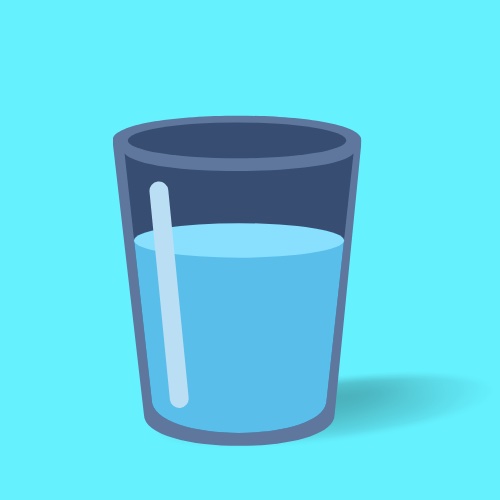
As August dawns upon us, it's time to shine a spotlight on one of the most essential resources we often take for granted: clean, safe drinking water. August is Water Quality Awareness Month, a time to recognize the vital role that water operators play in ensuring that our taps flow with clean, safe water every day. From monitoring water quality to maintaining infrastructure and implementing treatment processes, water operators work tirelessly behind the scenes to protect public health and safeguard our most precious resource.
The Importance of Water Quality
Clean, safe drinking water is essential for maintaining public health and well-being. From hydration and cooking to bathing and sanitation, water plays a critical role in our daily lives. However, ensuring that our tap water meets stringent quality standards requires careful monitoring, testing, and treatment to remove contaminants and impurities.
What Water Operators Do
1. Water Treatment: Water operators oversee the treatment process, which involves removing impurities, disinfecting the water, and adjusting pH levels to ensure that it meets regulatory standards for safety and quality. Treatment methods may include filtration, chlorination, and pH adjustment.
2. Monitoring and Testing: Water operators regularly monitor water quality at various points throughout the distribution system, from the source to the tap. They conduct tests for a wide range of contaminants, including bacteria, viruses, heavy metals, and chemicals, to ensure that the water is safe for consumption.
3. Infrastructure Maintenance: Water operators are responsible for maintaining and repairing the infrastructure that delivers water to our homes and businesses, including pipes, pumps, and storage tanks. Regular maintenance helps prevent leaks, breaks, and other issues that could compromise water quality and supply.
4. Emergency Response: In the event of a water quality or supply emergency, such as a contamination incident or natural disaster, water operators spring into action to protect public health and restore service as quickly as possible. They coordinate with local authorities, emergency responders, and regulatory agencies to implement emergency response plans and communicate with the public.
Appreciating Water Operators
Behind every glass of clean, safe drinking water is a team of dedicated water operators working diligently to ensure its quality and availability. Their commitment to excellence, professionalism, and public service is commendable, and their efforts deserve recognition and appreciation.
How You Can Help
While water operators play a critical role in maintaining water quality, we all have a role to play in preserving this precious resource. Here are a few simple steps you can take to support water quality:
1. Conserve Water: Practice water conservation habits such as fixing leaks, using water-efficient appliances, and limiting outdoor watering to conserve water and reduce strain on water resources.
2. Dispose of Waste Properly: Dispose of household chemicals, pharmaceuticals, and other hazardous materials properly to prevent them from contaminating water sources.
3. Be Informed: Stay informed about water quality issues in your community by reading water quality reports, attending public meetings, and supporting initiatives to protect and preserve water resources.
Celebrating Clean Water
This Water Quality Awareness Month, let's take a moment to appreciate the dedication and hard work of water operators who ensure that clean, safe drinking water flows from our taps every day. Their commitment to excellence and public health is truly commendable, and their efforts deserve our gratitude and support.
Here's to clean water, healthy communities, and a brighter future for all!
Additional Articles
https://www.epa.gov/watersense/watersense-kids
https://www.neefusa.org/story/water/celebrate-national-groundwater-awareness-week-your-health
https://wellowner.org/national-groundwater-awareness-week/
https://www.epa.gov/system/files/documents/2023-03/2024IRmemo_032923.pdf
Want to Learn More
Celebrate Independence & Fire Up the Grill
July 02, 2024
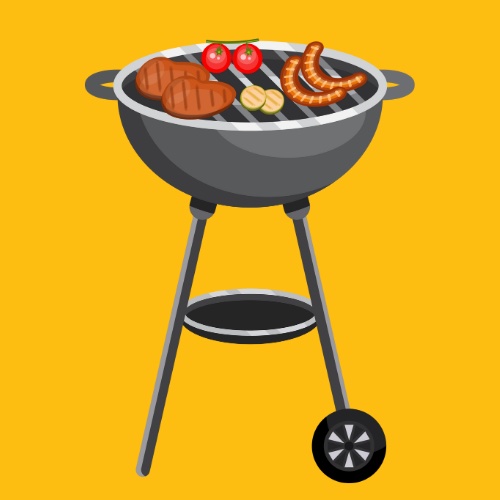
This July, celebrate your INDEPENDENCE in the USA & Canada!! It's time to fire up the grill and celebrate National Grilling Month in style! Whether you're a seasoned grill master or just getting started, there's something undeniably satisfying about cooking up delicious meals outdoors and enjoying the smoky flavors of summertime. However, it's essential to prioritize safety and smart grilling practices to ensure a fun and worry-free grilling experience. Enjoy these tips for safe grilling and share a mouthwatering burger recipe to elevate your summer cookouts.
Smart Grilling Practices
1. Choose a Safe Location: Set up your grill in a well-ventilated outdoor area away from flammable materials such as trees, bushes, and buildings. Keep the grill stable on a flat surface and ensure it's positioned away from foot traffic and play areas.
2. Inspect and Maintain Your Grill: Before each use, inspect your grill for any signs of damage, rust, or corrosion. Clean the grill grates and grease traps regularly to prevent flare-ups and ensure even cooking. Check propane tanks for leaks and replace any damaged or worn-out parts as needed.
3. Practice Safe Lighting: Follow the manufacturer's instructions for lighting your grill safely. If using a gas grill, open the lid before lighting to prevent gas buildup, and use long-handled grill lighters or matches to ignite the burners. If using charcoal, use charcoal starter fluid sparingly and never add it to hot coals.
4. Monitor the Grill: Never leave a lit grill unattended, as flare-ups and accidents can occur unexpectedly. Keep a close eye on the grill while cooking and have a fire extinguisher or water hose nearby in case of emergencies. Use long-handled utensils to flip and move food on the grill to avoid burns.
Staying Safe While Grilling
1. Prevent Cross-Contamination: Use separate cutting boards and utensils for raw and cooked foods to prevent the spread of harmful bacteria. Wash your hands thoroughly before and after handling raw meat, poultry, or seafood, and avoid using the same plate for cooked food that held raw meat.
2. Cook Food to Safe Temperatures: Use a meat thermometer to ensure that meat, poultry, and seafood reach the recommended internal temperature for safe consumption. Refer to USDA guidelines for minimum cooking temperatures for various types of meat and poultry.
3. Handle Grilled Food Safely: Once food is cooked, transfer it to a clean plate using clean utensils to avoid contamination. Serve grilled food immediately or keep it hot in a covered dish until ready to eat. Refrigerate leftovers promptly to prevent bacterial growth.
Fun Burger Recipe
Grilled Bacon Avocado Burger
Ingredients:
- 1 lb ground beef
- 4 hamburger buns
- 4 slices of bacon, cooked
- 1 avocado, sliced
- 4 slices of cheese (cheddar, Swiss, or your favorite)
- Lettuce, tomato, onion, pickles (optional)
- Salt, pepper, garlic powder
Instructions
1. Preheat your grill to medium-high heat.
2. Season the ground beef with salt, pepper, and garlic powder, then shape into four burger patties.
3. Grill the burger patties for 4-5 minutes per side, or until they reach your desired level of doneness.
4. During the last few minutes of grilling, place a slice of cheese on each burger patty and allow it to melt.
5. Toast the hamburger buns on the grill for 1-2 minutes, until lightly golden.
6. Assemble the burgers by placing a grilled burger patty on each bun, then topping with cooked bacon, sliced avocado, and any additional toppings of your choice.
7. Serve immediately and enjoy your delicious grilled bacon avocado burgers!
Grill Safely, Grill Deliciously
This National Grilling Month, embrace the joys of outdoor cooking while prioritizing safety and smart grilling practices. By following these tips and tricks, you can enjoy delicious grilled meals with peace of mind, knowing that you're keeping yourself and your loved ones safe. So fire up the grill, sizzle up some burgers, and celebrate summer in style!
Here's to a summer filled with sizzling grills, mouthwatering meals, and unforgettable outdoor gatherings!
HAPPY INDEPENDENCE DAY USA & CANADA!
Additional Articles
https://ohsonline.com/articles/2017/05/22/grilling.
https://www.nfpa.org/education-and-research/home-fire-safety/grilling
https://www.hpba.org/Consumer-Information/Barbecue-Outdoor-Living/Grill-Safety
https://www.senate.gov/about/origins-foundations/senate-and-constitution/constitution.htm
https://www.loc.gov/item/today-in-history/july-04/
https://www.smithsonianmag.com/arts-culture/14-fun-facts-about-fireworks-180951957/
https://www.mathnasium.com/math-centers/hinsdale/news/14-fun-facts-about-fireworks
Want to Learn More
June is National Safety Month
June 01, 2024
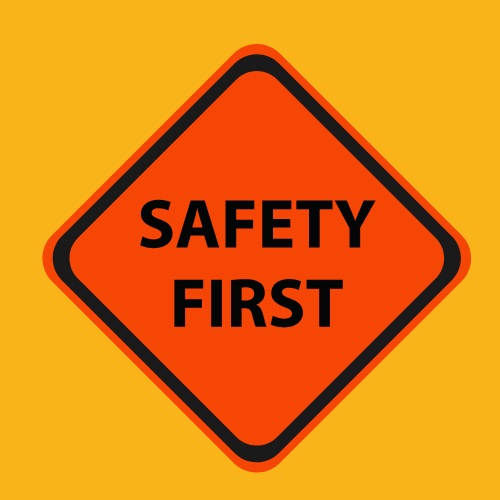
As June arrives and the sun shines brightly overhead, many of us eagerly embrace the great outdoors to soak up the warmth and beauty of summertime. However, it's important to remember that outdoor adventures come with their own set of safety considerations. Whether you're hiking through lush forests, firing up the grill for a backyard barbecue, or simply enjoying a day at the beach, prioritizing safety is essential for a fun and worry-free summer season. In honor of National Safety Month, let's explore essential tips for staying safe while enjoying outdoor activities.
Hydration Safety Tips
1. Stay Hydrated: Hydration is key to staying healthy and comfortable during outdoor activities, especially in hot weather. Drink plenty of water before, during, and after your adventures, and avoid sugary or caffeinated beverages that can contribute to dehydration.
2. Pack Extra Water: Always carry extra water with you, especially on longer hikes or bike rides. Invest in a hydration pack or water bottle with a built-in filter for convenient access to clean drinking water wherever you go.
Bug Bite Treatment Tips
1. Preventive Measures: Protect yourself from bug bites by wearing long sleeves, pants, and insect repellent containing DEET or picaridin. Avoid areas with high insect activity, such as stagnant water or dense vegetation, and check for ticks and other pests after spending time outdoors.
2. Treatment: If you do get bitten or stung, clean the affected area with soap and water and apply a cold compress to reduce swelling and itching. Over-the-counter antihistamines or hydrocortisone cream can help alleviate discomfort from bug bites.
Poison Ivy Treatment Tips
1. Identification: Learn to recognize poison ivy, oak, and sumac, and avoid contact with these plants whenever possible. Remember the saying, "Leaves of three, let them be."
2. Treatment: If you come into contact with poison ivy, wash the affected area with soap and water as soon as possible to remove the plant's oils. Apply calamine lotion or hydrocortisone cream to reduce itching and inflammation, and avoid scratching to prevent infection.
Hiking Safety Tips
1. Plan Ahead: Before hitting the trails, research your route, check the weather forecast, and inform someone of your hiking plans and expected return time. Bring a map, compass or GPS device, and a fully charged cellphone for emergencies.
2. Stay on Marked Trails: Stick to designated trails and follow trail markers to avoid getting lost or wandering into hazardous terrain. Watch your step, especially on steep or rocky terrain, and be mindful of wildlife and natural hazards.
Grilling Safety Tips
1. Safe Location: Place your grill on a flat, stable surface away from flammable materials such as trees, bushes, and outdoor furniture. Keep children and pets at least three feet away from the grill while it's in use.
2. Proper Maintenance: Clean your grill regularly to remove grease buildup and prevent flare-ups. Check propane tanks for leaks before use, and never leave a lit grill unattended.
Avoiding Overheating
1. Stay Cool: Beat the heat by seeking shade, wearing lightweight, breathable clothing, and using a wide-brimmed hat or umbrella for sun protection. Take breaks in air-conditioned spaces to cool down and recharge.
2. Recognize Signs of Heat Exhaustion: Be aware of the symptoms of heat exhaustion, including heavy sweating, weakness, nausea, and dizziness. If you or someone else shows signs of heat-related illness, move to a cooler area, hydrate, and seek medical attention if symptoms worsen.
By following these summertime outdoor safety tips, you can enjoy all that the season has to offer while minimizing the risk of accidents and injuries. Whether you're exploring nature, firing up the grill, or simply basking in the sunshine, make safety a priority and savor every moment of your summertime adventures.
Here's to a safe, happy, and memorable summer season ahead!
Additional Articles
https://teamsummit.org/Blog/hydrating-performance
https://health.unl.edu/10-tips-staying-hydrated-summer%C2%A0
https://diet.mayoclinic.org/us/blog/2022/how-to-stay-hydrated-over-the-summer/
https://www.petfoodinstitute.org/blog/4-quick-tips-to-help-keep-your-pets-hydrated-this-summer/
https://petmedicurgentcare.com/blog/5-tips-to-help-pets-hydrate/
https://www.cdc.gov/niosh/docs/2010-118/pdfs/2010-118.pdf
https://www.fda.gov/consumers/consumer-updates/outsmarting-poison-ivy-and-other-poisonous-plants
https://www.medicalnewstoday.com/articles/326235
https://www.nps.gov/articles/hiking-safety.htm
Want to Learn More
Beat the Backyard Bugs
May 01, 2024
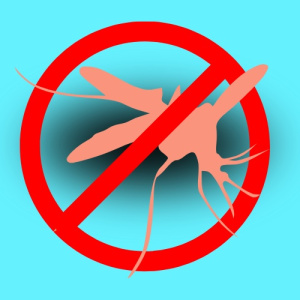
As May ushers in warmer weather and longer days, many of us eagerly anticipate spending time in our backyard sanctuaries. However, pesky bugs and insects can quickly put a damper on outdoor enjoyment. From mosquitoes and flies to ants and ticks, backyard bugs can be a nuisance and, in some cases, pose health risks.
But fear not! With a few simple strategies, you can beat the backyard bugs and reclaim your outdoor space for relaxation and recreation. Let’s make the most of your outdoor time!
Identify Common Backyard Bugs
1. Mosquitoes: These blood-sucking pests thrive in warm, humid environments and are notorious for ruining outdoor gatherings with their itchy bites.
2. Flies: Whether they're buzzing around your food or incessantly buzzing in your ears, flies can be a persistent annoyance in the backyard.
3. Ants: These industrious insects can invade your outdoor space in search of food, nesting in lawns, gardens, and patios.
4. Ticks: Found in wooded areas and tall grasses, ticks can transmit diseases such as Lyme disease and Rocky Mountain spotted fever to humans and pets.
Effective Strategies for Beating Backyard Bugs
1. Eliminate Standing Water: Mosquitoes breed in stagnant water, so be sure to empty and clean bird baths, flowerpots, and other containers that collect water. Consider installing a fountain or pond aerator to keep water moving and discourage mosquito breeding.
2. Use Natural Repellents: Ward off mosquitoes and flies with natural insect repellents containing ingredients like citronella, lemon eucalyptus, or lavender oil. Apply repellent to exposed skin and clothing before heading outdoors, and consider using citronella candles or torches to create a bug-free zone.
3. Maintain a Tidy Yard: Keep your yard neat and well-maintained to deter ants and other pests. Trim overgrown vegetation, seal cracks and crevices around your home's foundation, and clean up food spills and crumbs to eliminate potential food sources for pests.
4. Create Barrier Protection: Prevent ticks and other crawling insects from entering your yard by creating a barrier of gravel or wood chips between wooded areas and your lawn or patio. Consider installing a tick barrier spray or perimeter treatment for added protection.
5. Encourage Natural Predators: Invite beneficial insects and wildlife into your yard to help control pest populations. Plant native flowers and shrubs to attract pollinators like bees and butterflies, and install bat houses or bird feeders to attract insect-eating birds and bats.
Enjoy Your Bug-Free Backyard Oasis
By implementing these simple, effective strategies for beating backyard bugs, you can create a more enjoyable outdoor environment for yourself, your family, and your guests. Whether you're hosting a barbecue, gardening, or simply relaxing in the sunshine, you can do so with peace of mind, knowing that pesky bugs are no match for your backyard defenses.
As you embrace the beauty and tranquility of your outdoor space this May, remember to take proactive steps to keep bugs at bay and make the most of your time outdoors. With a little preparation and vigilance, you can beat the backyard bugs and fully enjoy all that nature has to offer.
Here's to a bug-free and blissful outdoor season ahead!
Additional Articles
https://cedarcide.com/blogs/guides/10-spring-bugs-to-prep-for-now
https://www.capecodpestpros.com/common-spring-bugs/
https://goodwynbuilding.com/blog/Banish-Bugs-from-Your-Backyard-with-These-Tips
https://www.houselogic.com/by-room/yard-patio/how-to-keep-bugs-away-from-patio/
https://www.dripworks.com/blog/6-natural-ways-to-keep-bugs-out-of-your-garden
Want to Learn More
April Showers Bring May Flowers...
April 02, 2024
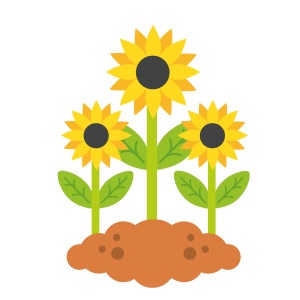
April showers bring May flowers… lovely; however, most of us need quick and impactful solutions to keeping our lawns and gardens looking sharp whilst demanding minimum time.
Gardening is an excellent skill set and teaching tool. In any form, gardening teaches patience, self-confidence, pride of ownership, responsibility, math and planning skills, and many others. Most importantly, gardening teaches (anyone of all ages) resilience. Inevitably, some plants will thrive and some will become compost. Daily and weekly efforts must be made in order to achieve the final goal.
Valuable skill sets gained through gardening
-
The importance and process of composting
-
Teamwork
-
Problem Solving
-
Respect for nature
-
Health & Wellness skill sets
-
Cause and effect correlations
Successful gardening can be as minimal as one needs. There is no rule that states a lawn or patio must be elaborate. For low-maintenance ideas, enjoy these easy tips.
Tips for low maintenance gardening
-
Begin a watering schedule after the typical final freeze in your area.
-
Embrace a bit of “wildness” within your space
-
Mulch and woodchips will help hold water longer
-
Choose bigger pots with fewer plants
-
Choose low-water plants for shrubbery options
-
Build in hard-boundaries, such as framed beds or walking paths
With these tips, keeping your garden and lawn looking great with little time has never been easier! And, although gardening might not be your preferred forte, passing on the skill set to the younger generation can have profound impacts.
Enjoy the change of seasons and be sure you get outside this spring!
Additional Article Sources
https://www.rhs.org.uk/garden-inspiration/get-gardening/10-ways-to-a-low-maintenance-garden
https://www.rhs.org.uk/garden-design/low-maintenance-gardening
https://www.forbes.com/home-improvement/outdoor/low-maintenance-landscaping-ideas/
https://www.gardenersworld.com/how-to/grow-plants/gardening-for-beginners-10-tips/
https://www.almanac.com/vegetable-gardening-for-beginners
https://www.betterhealth.vic.gov.au/health/healthyliving/gardening-for-children
https://www.montessorinature.com/importance-benefits-gardening-children-toddlers-preschoolers/
Want to Learn More?
https://growinginthegarden.com/gardening-for-beginners-how-to-start-a-garden-in-8-simple-steps/
https://kidsgardening.org/resources/gardening-basics-safe-gardening-guidelines/
Welcome Spring! Time to Check for Water Leaks
March 01, 2024

This March, we welcome sunnier days and the changing of season! Most importantly, we find and fix any water leaks from the winter season.
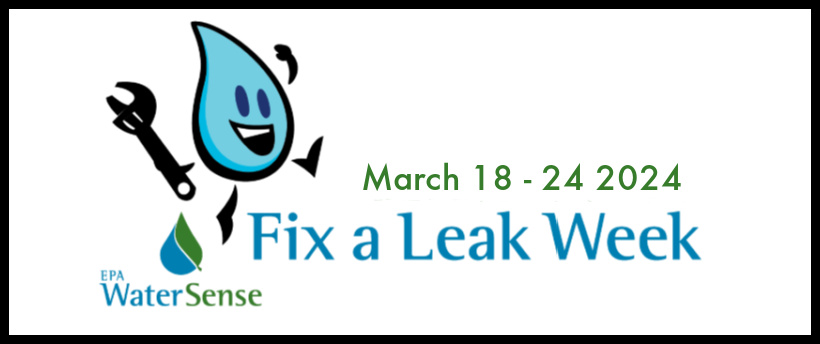
Water is an amazing resource. It is one of the most valuable and crucial resources on Earth but, without question, it is one of the most destructive. Undetected water leaks cost homeowners every year, and even the smallest of leaks can have the largest of impacts.
Identifying leaks is crucial to protecting your home and water bill! And with the proper tips, preventing and fixing leaks is easier than you think! The EPA recommends the following checklist for tracking down a leak! Here are some of the best-known hiding places to start. Keep your ears open!
Special note: Leak detection is not just for warming or warmer months. Leaks are most likely to occur during winter due to fluctuations in external and internal temperatures. These temperature variations create enormous pipe stress and strain. Therefore, most leaks are occurring during the winter months rather than during a thaw.
Signs there might be a water leak
-
Mold
-
Odd wet spots
-
Low water pressure
-
Water bill spikes!
Where should you always look for leaks?
Bathroom
-
Toilets
-
Faucets
-
Showerheads
-
Under the sink
-
Don’t forget the tub!
Laundry Room
-
Check all of your hook-ups
-
Look for pooling in the washer itself (it could indicate a source leak)
Kitchen
-
Check all appliances, such as the dishwasher and fridge. Many times, there are leaks behind them.
Basement and Garage
-
Sinks
-
Exposed pipes
-
Water Heaters
Outside
-
Spigots
-
Irrigation controls and sprinkler heads
What to do if you find a leak, you ask?
-
Turn off the water line to the leaking location.
-
Identify the primary source of the leak.
-
Document any and all damage (date, time, photos, description, etc.).
-
If necessary, call your insurance company.
-
Call in the professionals or DIY to fix any damage caused by the leak.
-
Look for any secondary impacts caused by the leak, such as mold or mildew.
Additional Article Sources
https://home-water-works.org/indoor-use/leaks
https://www.bobvila.com/articles/how-to-find-a-water-leak/
https://www.epa.gov/watersense/fix-leak-week
https://www.cwservicepros.com/leak-detection/water-leak-prevention/
https://www.thespruce.com/what-to-do-about-water-leakage-in-your-wall-4707690
Want to Learn More?
https://www.epa.gov/watersense/how-we-use-water
https://www.epa.gov/watersense/save-us
https://www.wsscwater.com/leaks
https://19january2017snapshot.epa.gov/www3/watersense/pubs/fixleak.html
To Our Veterans...Thank You
November 01, 2022
To each and every one of our Veterans across North America, thank you for your time, sacrifice, and service.
As we approach a time of year where we gather with friends and family in celebration, we would like to take a moment to truly express our gratitude to those who keep us safe and secure so that we are able to appreciate this wonderful time of year.

Learn More About the History of Veterans Day
Article Resources
Other Resources
For Kids
It's October & Time to Consider the Following...
October 03, 2022
Can you Imagine A Day Without Water?
Water is, in short, invaluable. Although it is a resource that is essential for all life, it is easy to forget how inner-woven water is in our daily life. Water is a cup of coffee, a quick shower, a green lawn, or a glass of iced tea.
These are simple pleasures in life, but although they are simple, they require many gallons of water!
Each year, we take time in October to better educate and understand this incredible resource. Our most important mission is to preserve and protect water for generations to come (both animal, plant and human generations).
To help advance this agenda, below are a few wild facts about water that will make you appreciate the resource all the more. From chemistry to consumption, water is both weird and wonderful!
Below are some wonderfully weird facts about water that we are betting you didn’t know!
-
Water is an Alien.
-
Water arrived as ice on asteroids and comets. Without space, water would not exist on Earth.
-
Water is the only chemical on Earth that expands from a liquid to solid.
-
It is true, water does not follow the rules of basic chemistry. Ice is less dense than water in liquid form. If water followed the “rules” we would only experience it in vapor form.
-
There is a finite amount of water.
-
In other words, all water on Earth has been recycled through animals, clouds, plants, rocks, and… people.
-
Hot water freezes faster than cold water.
-
Scientists “sort of” understand why, but they are still debating.
-
An earthworm is ~80% water and an elephant is ~70%.
Ask yourself, how many gallons does it take…
-
~1,800 gallons of water are needed to produce 1 pair of blue jeans.
-
1 Sunday newspaper requires 150 gallons of water.
-
~120 gallons of water are needed for a chicken to produce 1 egg.
-
~2,257 gallons of water are required to make 1 pair of tennis shoes.
-
The average vanilla latte takes 53 gallons of water to create.
Did some of these facts surprise you? Excellent!
Essential. Reliable. Invaluable. Water.
Now, raise your glass, spread some knowledge, and appreciate all that water provides!
Want to Learn More?
https://snowbrains.com/eight-weird-facts-about-water-you-didnt-know/
https://www.oldhamcountywater.com/interesting-water-facts.html.
https://www.the71percent.org/industrial-water-usage/
http://uswateralliance.org/initiatives/value-of-water
Other Resources
http://beta.thevalueofwater.org/the-facts/waters-value
http://uswateralliance.org/sites/uswateralliance.org/
For Kids
Water Day Lessons for Teachers
It's September...Time To Prepare For the Unexpected
September 01, 2022
Disasters Don't Wait. Make Your Plan Today ~ Ready.gov
If we have learned anything in the last 2 years, it is that we all must be prepared for the unexpected.
September is National Preparedness Month, and there is no better time to re-prep your Preparedness Kits for the changing of seasons. Below are some standard preparedness kits that every home and car should have ready to go!
Basic Preparedness Kit for your Home
-
WATER
-
Food
-
Battery-Powered Radio
-
Flashlight
-
First Aid Kit
-
Whistle
-
Manual Can Opener
-
Manual Wine Opener
-
Duct Tape
-
Plastic Bags and Ties
-
Extra Batteries
Car Preparedness Kit
-
WATER
-
Snacks
-
Windshield Scraper
-
Flashlight
-
Extra Batteries
-
Blankets
-
Sunscreen
-
Hand-warmers
-
Extra Chargers
Hurricane Prep Tips
-
Make a family plan.
-
Make sure your fire extinguisher is up-to-date.
-
Secure personal documents in case of an evacuation.
-
Ensure plenty of energy sources, such as a generator, extra batteries, and flashlights.
-
Be sure you have plenty of any necessary medication.
-
Make sure you have plenty of jugged water and canned foods.
Cold Weather Tips
-
Insulate any waterlines located in crawlspaces or along exterior walls.
-
Insulate Attics.
-
Caulk and weather strip doors and windows.
-
Have your chimney or flue inspected each year.
-
Update and install smoke and carbon monoxide detectors.
-
Ensure proper venting for fuel burning equipment.
-
Have your furnace and vent systems inspected each year.
The most important thing to remember is to keep a preparedness kit updated based on the seasons of the region in which you live. Be sure to take the time to evaluate each item in your kit so that you are ready no matter what may come your way!
Article Sources
https://www.cdc.gov/disasters/winter/beforestorm/preparehome.html
https://www.cdc.gov/disasters/hurricanes/before.html
https://www.weather.gov/wrn/hurricane-preparedness
Want to Learn More?
Other Resources
https://www.ready.gov/winter-weather
https://www.wunderground.com/prepare/winter-weather
For Kids
READY KIDS (Kids, Teens, Families)
Hello August...It's Really Hot Out There
August 01, 2022
Raise your hand if you are surviving a heat wave!
We have made it to the peak of our summer months and the peak of summer pests.
It takes some serious skill to keep the bugs at bay and the lawn looking fresh this time of year.
And to be honest, with school starting back-up and a change of seasons on the horizon, no one is particularly interested in spending their extra-time on extensive lawncare routines.
Well, do not fear! We have gathered a few tricks to help you maximize these last few days of summer for you and your family.
End-of-Summer Lawn Care Tips
-
Spot Seeding will help control dying areas from spreading.
-
Re-Fertilize.
-
Minimize over watering efforts.
Mosquito Management Tips
-
Keep the grass cut and hedges trimmed.
-
Install an outdoor fan.
-
Replace lightbulbs with yellow bug lights.
-
Remove any standing water.
Fire and Drought Safety Tips
-
Do not burn trash, leaves or brush during droughts.
-
Use spark arresters.
-
Keep your lawn and garden clean and free of debris.
-
Create safety zones around grills and any firepits.
-
Have a “Meet-Up” plan for any emergency.
-
Keep fire extinguishers up-to-date and ready.
As we close out our summer days, we hope these few tricks will help set your home up for the change of seasons and let you spend more time with those you love!
Happy and Safe Summer All!
Article Sources
https://www.montgomeryzoo.com/Home/ShowDocument?id=352
https://www.epa.gov/watersense/start-saving#save-outdoors
https://www.epa.gov/insect-repellents/deet
Want to Learn More?
https://www.epa.gov/watersense/drought-watersense
https://outdoorlivingtoday.com/keep-mosquitoes-away-yard/
https://19january2017snapshot.epa.gov/www3/epahome/hi-summer.htm
https://www.slughelp.com/coffee-grounds-slugs-snails-really-work/
https://www.foodandwine.com/lifestyle/8-ways-keep-mosquitoes-away-your-backyard-party
Other Resources
It's July 2022 - Let's Celebrate!
July 01, 2022
We declare this month INDEPENDENCE MONTH!
Why should we limit our celebrations to only a day or long weekend? It’s time to break out the sparklers and pool floaties and fire up the grill to celebrate with family and friends in epic fashion!
After 2 years of lockdown, this July 1st (Canada Day) and July 4th (Independence Day), we want you to celebrate and fly those flags EXTRA HIGH!
Before you do so, here are some Independence Day Tips to staying safe and celebrating in style!
Swim Safety
-
Swim with a buddy
-
Apply sunscreen hourly
-
Keep a fresh water bottle nearby
-
Pay attention to the weather
-
Get out of the heat when you’re out of the water
BBQ Safety Tips (Don’t become a neighborhood statistic!)
-
Keep the grill 10 ft away from any structure.
-
Clean your grill regularly.
-
Check for gas leaks periodically.
-
Some forms of alcohol are flammable.
-
Bug spray is HIGHLY FLAMMABLE. Spray with caution!
-
Do not grill indoors (even if it is raining).
Firework Safety
-
Confirm that fireworks are legal in your area before using them.
-
Do not allow children to ignite fireworks.
-
Do not try to re-light or pick up a firework that might not have fully ignited.
-
Keep a bucket of water on-hand at all times.
-
Do not store fireworks in your pocket.
Enjoy your time with family and friends this Independence Month! Stay safe and stay hydrated!
Article Sources
https://www.redcross.org/about-us/news-and-events/news/summer-safety-tips.html
https://www.poehealth.org/summer-safety/
https://abcnews.go.com/Business/ten-tips-safe-summer-barbecues-learn-dos-donts/story?id=13918382
Want to Learn More?
5 Skills to Save Your Life in Water
Other Resources
For Kids
Welcome Back Warmer Temps!
June 01, 2022
We love summertime!
And there is nothing better than celebrating longer days and evenings on the porch with friends and family. While most see summer as a time to break-out new projects, explore, and earn some tan lines, staying prepared and safe are key factors in keeping the good times rolling!
Many experts claim that more accidents happen on summer nights than in the cold of winter due to lack of planning. So this summer, here are some key tips to enjoying the world around you for many years to come!
The MOST IMPORTANT Safety Tip of 2022 - STAY HYDRATED
While not the easiest tip to manage, it is important to remember that our bodies are 73% water. To stay in tip-top, conquer the world condition, it is important to keep the fluid flowing. The cognitive benefits alone will ensure that you and your family have the epic summer season you’ve been looking forward to all year long!
Other Summer Safety Tips
-
Update the emergency weather kit in your home and car
-
Learn CPR
-
Change Your Smoke Alarm Batteries
-
Wear sunscreen daily
-
Use insect repellent
-
Swim Smart
-
Boat Safely
-
Practice Firework Safety
-
Pay attention to sun exposure
-
Do not ignore thunder (weather warnings)
-
Position your grill away from the side of your home
-
Pay attention the how heat exposure affects daily stress levels
-
Pay attention to your feet and wear the proper gear
-
Know and avoid poisonous plants
Summer is an invigorating time of year! Following these simple safety tips can help you experience your summer to the max.
Now! Have Fun and Stay Safe and be sure to keep your water bottles ready!
Article Sources
https://www.poehealth.org/summer-safety/
Google Search - Best Ways to Stay Hydrated & Beat the Heat
https://info.totalwellnesshealth.com/blog/summer-safety-tips
Other Resources
For Kids
Reason for the Seasons : Earth’s Tilt
Water - It's There When You Need It!
May 01, 2022
It’s that wonderful time of year again where we come together to celebrate National Drinking Water Week!
Every year, during the first week of May, water professionals across North America celebrate Water and all it provides to our communities and lives. This year’s theme is There When You Need It.
Water is the great unifier. We all need it. Every plant, person, animal, and insect require water to thrive!
Earth is unique for many reasons, the most important being that 71% of the planet is covered by water. However, only 1% of that abundance is consumable for all life. Therefore, as stewards, we must take extra care to protect and preserve for the benefit of all life.
Here are some fun facts about Drinking Water Innovation
-
The average North American utilizes ~ 176 gallons of water a day and ~ 65,000 gallons a year.
-
Indoor plumbing was “technically” made available to the general public in the 1840s at the Tremont Hotel in Boston, and there is no “specifically identified” inventor.
-
Toilets became mainstream in the 1850s.
-
The earliest documentation of water treatment processes is found in ancient Egyptian hieroglyphics.
Fun Facts About Water Use
-
It takes ~ 1,230 gallons of water to make one pair of shoes.
-
One glass of drinking water comes from approximately 32 gallons of water.
-
~ 40,000 gallons of water are used when manufacturing one standard sized car.
-
~ 19 gallons of water are needed to grow 1 apple.
The value of water is not lost on anyone. Understanding the need and appreciating the resource is what Drinking Water Week is all about!
This May, be sure to take the time and thank your local water team for keeping the taps flowing and water fresh!
Read your Water Quality Report. Local water systems provide Consumer Confidence Reports (CCR) to their customers annually on or before July 1st. (Some states publish by dates may vary. Check with your local primacy agency for details).
Article Sources
https://www.waterinno.com/water-facts
https://www.freedrinkingwater.com/resource-history-of-clean-drinking-water.htm
https://www.awwa.org/Events-Education/Drinking-Water-Week/DWW-Materials#7602438-logos
https://mwua.org/drinking-water-week/
https://www.wef.org/resources/for-the-public/value-of-water/
https://www.awwa.org/Events-Education/Drinking-Water-Week
https://www3.epa.gov/safewater/kids/waterfactsoflife.html
Want to Learn More?
Other Resources
https://www.cdc.gov/healthywater/drinking/drinking-water-faq.html
https://www.dosomething.org/us/facts/11-facts-about-your-drinking-water
https://waterisawesome.com/articles/fun-and-awesome-water-facts
For Kids!
Welcome April Showers!
April 01, 2022
Do April showers bring May Flowers?
Did you know that the line "April Showers Bring May Flowers" is believed to date back to 1610? True, as winter draws to a close and snowfall turns to rainfall in the warmer weather, the buds of Spring begin to appear.
Now is the time to “spring” into outdoor action. As April is the start of neighborhood lawncare competitions (stated or unstated), it is time to let the rainfall work in your favor. From aerating the soil and throwing grass seed to arranging the hanging baskets and replacing any old landscaping, the feel of Spring in the air is the perfect cure for any previous winter blues.
While not all of us have been blessed with a green-thumb, use these easy tips get started!
-
Know your climate zone and pick the proper plants.
-
A healthy and aerated soil can save you a lot of headaches.
-
While mulch can spruce things up, it is quite functional! Placing fresh mulch in flower beds can help retain water for the soil and plants.
-
Group similar plants together for irrigation. (Let the water work for you!)
-
Keep up the weeding!
-
Raise your lawnmower height.
-
Depending on where you live, consider a rain barrel for lawn irrigation.
Now if all else fails, an argument can always be made for a zero-scaped yard.
No matter which direction you decide, there will always be a need for upkeep and water conservation as temps get warmer. If you want to have the greenest grass in the neighborhood, consider the articles below for best tips and tricks as you put your green foot forward!
Happy Watering!
Article Sources
https://wonderopolis.org/wonder/do-april-showers-really-bring-may-flowers
https://www.epa.gov/watersense
https://www.denverpost.com/2019/04/18/spring-lawn-care-maintenance/
https://garden.org/nga/zipzone/
https://www.accuracyproject.org/w-PlantZones.html
https://www.currentresults.com/Weather/US/average-annual-state-precipitation.php
https://www.twinoakslandscape.biz/rainwater-for-lawn-irrigation/.
Want to Learn More?
Other Resources
https://www.wildabundance.net/irrigating-your-garden-with-rainwater/
https://www.thespruce.com/xeriscape-landscaping-meaning-2131129
https://wateruseitwisely.com/xeriscape-vs-zeroscape/
https://www.epa.gov/safepestcontrol/lawn-and-garden
https://www.epa.gov/watersense/watering-tips#SmarterTech
https://www.epa.gov/watersense/statistics-and-facts
For Kids
Leaks Can Run - But They Cannot Hide!
March 01, 2022
Drip, Drip, Drip…Let’s Talk Leaks!
Guess what! National Fix A Leak Week is March 14-20th and we want to be sure you have the best resources to keep you informed of the little problems caused by water leaks. Awareness of what to look for and knowlege of how to fix any leak issues can go a long way in prevention and saving money. Leaks can run, but they can’t hide!
Did you know that simple faucet leaks amount to approximately 1 trillion gallons of water wasted each year? That’s huge! And so easily preventable! Not to mention, leaks are costly. Taking time each year to perform a preventative check, can help keep your check book in order.
When you are on the hunt for possible leaks, it is important to start with the data… Begin with your water bill, check your meter, and test your toilets. These will give you some clue as to the prevalence of a water leak in your home.
The EPA recommends the following checklist for tracking down a leak! Here are some of the best-known hiding places to start. Keep your ears open!
-
Bathroom
-
Toilets
-
Faucets
-
Showerheads
-
Under the sink
-
Don’t forget the tub!
-
Laundry Room
-
Check all of your hook-ups!
-
Look for pooling in the washer itself (it could indicate a source leak)
-
Kitchen
-
Check all appliances, such as the dishwasher and fridge. Many times, there are leaks behind them.
-
Basement and Garage
-
Sinks
-
Exposed pipes
-
Water Heaters
-
Outside
-
Spigots
-
Irrigation controls and sprinkler heads
What should you do when you find a leak, you ask?
Well, that all depends on your plumbing skills. Whether you choose to call in a professional or venture down the DIY path, below are a few steps everyone should take… just in case.
-
Turn off the water line to the leaking location.
-
Identify the primary source of the leak.
-
Document any and all damage (date, time, photos, description, etc.).
-
If necessary, call your insurance company.
-
Call in the professionals or DIY to fix any damage caused by the leak.
-
Look for any secondary impacts caused by the leak, such as mold or mildew.
It's important that everyone learn the ins and outs of their plumbing system to avoid costly repairs or surprise damages. Not only does it help protect your home and family, but you also help reduce any wasteful impacts to our water sources.
Enjoy Fix a Leak Week! Best of luck to all you DIY’ers!
Article Sources
https://wateruseitwisely.com/detect-and-chase-down-leaks-with-watersense/
https://www.epa.gov/watersense/fix-leak-week
https://wateruseitwisely.com/what-to-do-when-you-have-a-water-leak.
https://www.wagnermechanical.com/blog/heres-how-to-find-water-leaks-in-your-homes-plumbing
https://www.americancityplumbing.net/dangers-and-causes-of-hidden-water-leaks-in-the-house
https://wateruseitwisely.com/what-to-do-when-you-have-a-water-leak.
Want to Learn More?
YouTube ~ Just search plumbing
Other Resources
https://www.wikihow.com/Find-a-Water-Leak-in-Your-House
https://www.fancypantshomes.com/helpful-tips/common-household-water-leaks-to-watch-out-for/
https://wateruseitwisely.com/fix-a-leak-week/
https://www.whud.org/communityeducation/water-leaks/fix-a-leak-week/
For Kids
It's That Cold Time of Year - Time to Protect Your Pipes!
January 01, 2022
Winter is coming… Are your pipes prepared?
There are 2 things that are certain every January. First, the New Year and second… you need to be sure your pipes are prepared!
From 100-year freezes to snowmageddons, the winter months have a special way of packing an extra punch.
Unfortunately, frozen pipes are an all-too-common occurrence, and can lead to costly impacts regardless of climate zone.
This leads to the age-old question, is it safe to flush a toilet when the pipes are frozen? Well, it depends. But, if the pipes are frozen, just remember… you get one flush.
It is important to note that pipes are most susceptible to freezing should they be located near an exterior wall or in an unheated crawlspace. Internal freezing typically only happens when power outages occur for extended periods of time.
Therefore, let’s kick-off the New Year with a little pipe prep knowledge!
Freeze Prevention Tips
Here are some of the best practices to help prevent pipes from freezing. Remember, it is far easier to prevent a pipe from freezing than replacing a burst pipe! As a rule-of-thumb, pipes do start to freeze around the 20 degree Fahrenheit mark.
-
Keep your garage doors closed as much as possible.
-
Should an outage occur, let the faucets drip slowly.
-
Open all interior doors to allow for better heat circulation (and bathroom cabinet doors at night).
-
At a minimum, keep your interior temperature around 55 degrees Fahrenheit and be sure to stay consistent.
Thawing Tip
Should you find your pipes frozen (typically indicated by no water or constrained flow) remember, heat them slowly to avoid cracks.
-
Wrap an electric heating pad around the pipes to get them flowing.
-
Heat the pipes with a hairdryer.
-
Steadily increase the heat in your home (this is usually the preferred method).
We hope these simple tips will help you keep your pipes in working order this winter! Be sure to check out our additional resources below for more DIY tips on winterizing your home.
Article Sources
https://www.fox4news.com/news/no-power-heres-how-to-deal-with-frozen-pipes
https://archive.epa.gov/pesticides/news/web/html/winterize-home.html
Additional Resources
https://www.homedepot.com/c/ah/how-to-prevent-pipes-from-freezing.
https://www.thebalancesmb.com/stop-freezing-pipes-2124982
https://www.familyhandyman.com/list/13-tips-to-prepare-your-plumbing-for-winter/
https://19january2017snapshot.epa.gov/www3/epahome/hi-winter.htm
For Kids
Plumbing Crossword Puzzle for Kids
'Tis the Season - Holidays & Hydration! Ho! Ho! Ho!
December 01, 2021
Happy Holidays! We Appreciate You!
As we wrap up the year, families and communities across North America gather to spend time with friends and loved ones, reflect on the year, and prepare for opportunities ahead.
With all the hustle and bustle, it's easy to forget the little things, like staying hydrated or keeping your holiday plants and trees watered. It’s amazing how quickly a lack of hydration can impact the holiday cheer.
Below are some quick tips for keeping all elements of your season well- as we come together to celebrate the close of another year.
And, because we appreciate you all so much, below is one of our favorite holiday punch recipes (just add water!).
Again, Happy Holidays from all of us to all of you! We love supporting such a wonderful community, and look forward to working with and for you in the New Year!
Hydration Tips and Tricks
Staying hydrated during the cold, dry winter months can be a challenge. We all struggle with drinking the recommended amount of water even without the cold. However, water is the very foundation of our bodies. To stay healthy, happy, and well-rested, we have to be sure we do all we can to fill up that water cup. Here are some tips to make it as enjoyable as possible.
-
Add a squeezed lemon to a cup of warm water while getting ready. A lemon and water combo tastes great and can boost your energy for the day or event ahead.
-
Sassy Water – In a water pitcher (or filter) combine squeezed lemons, oranges, and grated ginger. It tastes great and will help keep the blood flowing.
-
1-cup about 30 minutes before bed will keep you hydrated as you sleep. This aids in a deeper and more restorative sleep without frequent interruptions.
-
Did you know that staying hydrated before bed makes for better dreams? That’s right, 1 cup for better (and possibly more interesting) dreams. Be sure to keep a journal by the bed!
-
For fruit juices (for yourself or for children), we recommend half-ing the juice. As in, for each cup, fill half with juice and half with water. It will still taste great and keep you hydrated throughout the day.
-
Try a nice morning tea to keep you warm and hydrated, we recommend peppermint!
Decoration Watering Tips
Have your decorations ever been crispy? Well, you are not alone. Whether you decorate the day of or the month before, it seems that it always takes us a little “extra” time to take those decorations down. (We don’t want to stop celebrating with the friends and families we love either). To be sure your decorations last as long as you wish them too, here is what you can do!
1. If you buy a live tree, be sure to get a fresh cut across the base.
2. Before you put up your live decorations, be sure that they stay in a bucket of fresh water overnight (especially a tree with a fresh trim).
3. Be sure your tree stand is able to hold at least 1 gallon of water. Fill it up AFTER you get your tree situated.
4. Tree Watering Rule-of-Thumb: For every 1-inch of trunk diameter, be sure to fill up the stand with a quart of water.
5. Water all decorations every 2 – 4 days. This will ensure a longer life, a brighter green, and a longer lasting holiday smell. (Also, less mess when you decide it is finally time to take them down).
* Best practices do recommend keeping an up-to-date fire extinguisher around the house if you plan to decorate with live foliage (…or don’t cook often).
Punch Recipe (Southern Living)
Cranberry-Lime Holiday Punch (We love anything that brightens)
-
2 Cups of Fresh Cranberries
-
1 Cup of Sugar (or sugar substitute)
-
2 Cups of Water (we love our water!)
-
5 Cups of Citrus Sparkling Water or Club Soda
-
1 Cup of Fresh Lime Juice
-
Garnish with a slight sugar and lime rim
Modify as you see fit! This easy punch does not require a holiday party!
Article Sources
https://www.southernliving.com/syndication/cranberry-key-lime-punch
https://healthsport.com/how-to-remember-to-stay-hydrated-during-the-holidays/
https://blog.epa.gov/2012/12/20/all-i-want-for-christmas-issome-water-saving-tips/
Want to Learn More?
Other Resources
https://blog.epa.gov/2016/12/21/creative-ways-to-cut-your-holiday-waste/
https://scadata.net/7-water-conservation-tips-holidays/
For Kids
Thank You To Our Veterans! We Are Humbled By Your Service
November 01, 2021
Thank You To All of Our Veterans!
As the holiday season approaches, many of us find ourselves asking, where has 2021 gone?
As we begin to focus on friends and family during this wonderful time of year, we would like to acknowledge and thank all of our Veterans. Whether active or retired, we appreciate and honor your sacrifice and dedication.

In the United States
Veterans Day honors all American veterans, living or diseased, but gives particular thanks to living veterans who served their country honorably, during wartime or peacetime.
An official wreath-laying ceremony is held each Veterans Day at the Tomb of the Unknowns in Arlington National Cemetery, and many parades and celebrations are held all around the country.
In Canada
November 11 is known as Remembrance Day and is a statutory holiday in all three territories and in six of the ten provinces.
In 1931, the federal parliament amended the Armistice Day Act, making the day known as Remembrance Day. The Canadian department of Veterans Affairs states that the date is of "remembrance for the men and women who have served, and continue to serve our country during times of war, conflict and peace"; specifically, the First and Second World Wars, the Korean War, and all conflicts since then in which members of the Canadian Forces have participated.
The department runs a program called Canada Remembers with the mission of helping young and new Canadians, most of whom have never known war, "come to understand and appreciate what those who have served Canada in times of war, armed conflict and peace stand for and what they have sacrificed for their country." (Veterans Affairs Canada. "Canada Remembers > About Canada Remembers". Queen's Printer for Canada. Retrieved 11 November 2011)
Across North America, far and wide, we thank you for your service!
Article Resources
For Kids
Remembrance Day Facts for Kids
Other Resources
When Every Drop Counts!
October 01, 2021
Have you hugged a Water Operator Today?
The modern plumbing system is considered one of the greatest innovations of the 19th century. In fact, plumbing dates back to the Greeks and Romans, but luckily has significantly evolved since the olden days.
It's easy to take for granted how lucky we are to have access to fresh, clean water at the turn of a tap. It’s especially amazing considering that available fresh water only accounts for approximately 2% of all water resources.
It begs the questions, what would life be like without water? While the likelihood of this occurring is relatively low, there are many who struggle with water access in their daily lives. Therefore, we want to take a moment to appreciate all that water does for us.
The Value of Water
-
40% of water in North America is used to produce food and beverages.
-
In your home
-
17% ~ Showering
-
27% ~ Toilet
-
15% ~ Faucets
-
22 % ~ Washer
-
5% ~ Miscellaneous
-
14% ~ Leaks!
-
Without fresh water, 1/5th of the US Economy would grind to a fast halt.
-
Every job created in the Water Sector helps to add another 3.68 jobs to our National Economy.
-
It takes approximately 12,500 gallons of water to make an ice rink (Hockey!).
Essential. Reliable. Invaluable. Water.
Did you know that the average North American uses 64,240 gallons of water a YEAR!
In reviewing this list, it is a stark reminder of how important it is to protect and preserve our greatest resource. Making those extra efforts ensure that clean, fresh water will be available for generations to come!
What is your Value of Water?
Article Sources
https://imagineadaywithoutwater.org/
https://www.awwa.org/AWWA-Articles/imagine-a-day-without-water-a-valuable-reminder
http://thevalueofwater.org/the-facts/waters-value
Want to Learn More?
http://uswateralliance.org/initiatives/value-of-water
Other Resources
http://beta.thevalueofwater.org/the-facts/waters-value
https://register.gotowebinar.com/recording/7998807868742729230
For Kids
Water Day Lessons for Teachers
Changing of the Seasons-It's Time to Prep
September 01, 2021
Water Is the Most Powerful Force on Earth!
As we wrap up the wondrous, sunny, summer weather, it is time to prepare for the changing of seasons. While every region has its own versions of seasons, it’s important for all of us to be prepared and re-prepared for whatever mother nature plans to throw our way.
Here are some recommended tips and preparedness items that can keep you safe when disasters occur.
Ask yourself, Are You Ready?
Basic Preparedness Kit for your Home
-
WATER
-
Food
-
Battery-Powered Radio
-
Flashlight
-
First Aid Kit
-
Whistle
-
Manual Can Opener
-
Manual Wine Opener
-
Duct Tape
-
Plastic Bags and Ties
-
Extra Batteries
Car Preparedness Kit
-
WATER
-
Snacks
-
Windshield Scraper
-
Flashlight
-
Extra Batteries
-
Blankets
-
Sunscreen
-
Hand-warmers
-
Extra Chargers
Hurricane Prep Tips
-
Make a family plan.
-
Make sure your fire extinguisher is up-to-date.
-
Secure personal documents in case of an evacuation.
-
Ensure plenty of energy sources, such as a generator, extra batteries, and flashlights.
-
Be sure you have plenty of any necessary medication.
-
Make sure you have plenty of jugged water and canned foods.
Cold Weather Tips
-
Insulate any water lines located in crawl spaces or along exterior walls.
-
Insulate Attics.
-
Caulk and weather strip doors and windows.
-
Have your chimney or flue inspected each year.
-
Update and install smoke and carbon monoxide detectors.
-
Ensure proper venting for fuel burning equipment.
-
Have your furnace and vent systems inspected each year.
“Disasters Don’t Wait. Make Your Plan Today” ~ Ready.gov
Stay safe out there folks!
Article Sources
https://www.cdc.gov/disasters/winter/beforestorm/preparehome.html
https://www.cdc.gov/disasters/hurricanes/before.html
https://www.weather.gov/wrn/hurricane-preparedness
Want to Learn More?
Other Resources
https://www.ready.gov/winter-weather
https://www.wunderground.com/prepare/winter-weather
For Kids
READY KIDS (Kids, Teens, Families)
Beating the Heat in August-Tips to Help You Survive!
August 02, 2021
As the dog days of summer stretch endlessly through August, it’s great time to remind ourselves of some tips to not only survive, but beat the heat for the rest of summer!
If you are anything like me, you might not have been blessed with a green-thumb. It seems so matter how hard I try, by August the bugs, slugs, and brown spots begin to emerge around my patio.
No one wants to spend their weekends in lawn-care triage, so let’s discuss some tips and tricks to wrapping up the end of summer on with a green star!
Lawn Repair Tips
-
Spot Seeding will help control dying areas from spreading.
-
Re-Fertilize – You’ll want to consider a nitrogen-based fertilizer to promote healthy soil.
-
Watch your watering.
Bug Tips
There is nothing worse that fighting mosquitos. Reduce Mosquitos in Your Yard Tips
-
Keep the grass cut and hedges trimmed.
-
Install an outdoor fan.
-
Replace lightbulbs with yellow bug lights.
-
Remove any standing water.
Did you now that coffee grounds can repel slugs and snails from your garden as well? And plants love the extra boost!
Build a Mosquito Trap
-
Cut a bottle in half and flip one of the cut halves upside down.
-
Tuck the other half into the lower half of the bottle.
-
Boil one cup of sugar and one cup of water, then add two cups of cool water to the mixture.
-
Let the mixture cool to about 90 degrees Fahrenheit.
-
Add in a teaspoon of active, dry yeast to the mixture.
-
Pour the mixture into the trap.
-
Secure the trap with tape.
(source: www.thisoldhouse.com)
Drought Tips
-
Water in several short sessions.
-
Water in very early morning hours or very late evening.
-
Check moisture levels with a soil probe to minimize unnecessary watering.
-
Lawns typically only need 1 inch of water per week.
-
Deadhead your flowers.
-
In the case of extreme drought, sacrifice your lawn to save the trees and shrubs.
Well, while we might not all have a green-thumb, we do hope these end-of-summer yard tips will help you best those end of summer irritations.
Article Sources
https://www.epa.gov/watersense/start-saving#save-outdoors
https://www.epa.gov/insect-repellents/deet
https://www.consumerreports.org/insect-repellent/how-to-keep-mosquitoes-away/
Want to Learn More?
https://www.epa.gov/watersense/drought-watersense
https://outdoorlivingtoday.com/keep-mosquitoes-away-yard/
https://19january2017snapshot.epa.gov/www3/epahome/hi-summer.htm
https://www.slughelp.com/coffee-grounds-slugs-snails-really-work/
https://www.foodandwine.com/lifestyle/8-ways-keep-mosquitoes-away-your-backyard-party
Other Resources
For Kids
Summer Sun & Water Safety Tips!
July 19, 2021
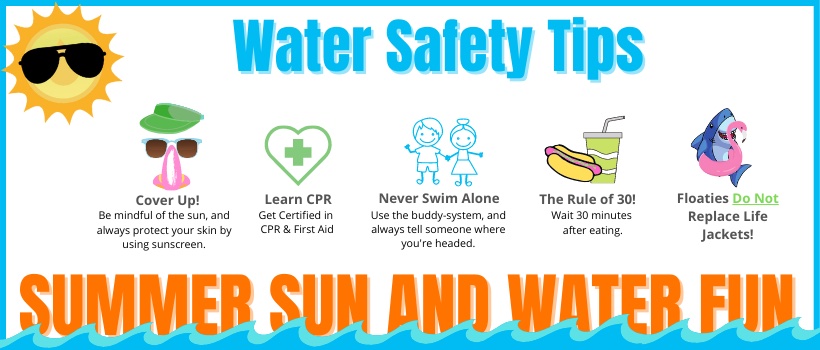
Swimming pools and beach vacations, waterskiing at the lake and rafting on the river, canoeing, kayaking, fishing, boating, wake boarding, tubing, jet skiing, snorkeling, sailing, surfing, and swimming - when it's summertime and the mercury is on the rise, there is nowhere we'd rather be than in the water!
North America’s lakes, rivers, and seas are oases of beauty and respite from the summer sun, so it’s no surprise that swimming is summer’s number one pastime. But as you enjoy the second half of the season, please make water safety your first priority. Swimming cools us off and keeps us fit, and it's one of the most enjoyable ways to spend a hot July day. But we cannot forget that it can also be dangerous. Drowning is the number one cause of unintentional death among children aged 1-4, and it's the number two cause of unintentional death among those aged 5-24.
A moment of distraction can be fatal, so please take great care to keep yourself and your loved ones safe in the water.
Break Out the Sunscreen! Summer Has Arrived!
June 01, 2021

Ladies and Gentlemen! The month of June officially marks the official start of Summer in the Northern Hemisphere!
It is officially time to break out those kiddy pools, throw those freezie pops in the freezer, and put on that sunscreen. Our recent months of lockdown have made the 2021 Summer that much sweeter, and, be assured, Summer 2021 is going to be sizzling!
So while you are breaking out the swim floaties, firing up the grill, and lighting those fireworks… we'd like to suggest a few ways to keep you safe on all your summer adventures!
Tops Summer Safety Tips of 2021
-
Drink Water and Stay Hydrated.
-
Don’t forget the Sunscreen.
-
Wear your bug spray!
BBQ Safety Tips (Don’t become a neighborhood statistic!)
-
Keep the grill 10 ft away from any structure.
-
Clean your grill regularly.
-
Check for gas leaks periodically.
-
Some forms of alcohol are flammable.
-
Bug spray is HIGHLY FLAMMABLE. Spray with caution!
-
Do not grill indoors (even if it is raining).
Firework Safety
-
Confirm that fireworks are legal in your area before using them.
-
Do not allow children to ignite fireworks.
-
Do not try to re-light or pick up a firework that might not have fully ignited.
-
Keep a bucket of water on-hand at all times.
-
Do not store fireworks in your pocket.
We don’t think that it is any coincidence that water is a point of safety on all of these lists!
Remember, summer is the time to enjoy longer days and the great outdoors. Stay safe this summer and be sure to keep your water bottle ready!
Article Sources
https://www.redcross.org/about-us/news-and-events/news/summer-safety-tips.html
https://www.poehealth.org/summer-safety/
https://abcnews.go.com/Business/ten-tips-safe-summer-barbecues-learn-dos-donts/story?id=13918382
United States CONSUMER PRODUCT SAFETY COMMISSION - Fireworks Information Center.
Want to Learn More?
https://www.nsc.org/home-safety/tools-resources/seasonal-safety/summer
https://www.cdc.gov/media/releases/2019/p0517-eight-tips-healthy-summer.html
https://pksafety.com/blog/5-things-you-didnt-know-about-bug-repellent-and-flame-resistance
Other Resources
For Kids
Reason for the Seasons : Earth’s Tilt
Water - It's There When You Need It!
May 01, 2021
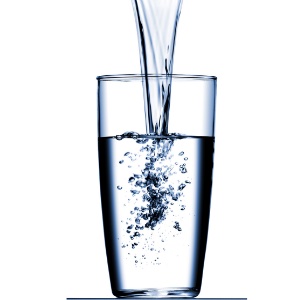
There When You Need It : What Water Does For You!
Cheers and Raise Your Water Glass! Yes, it is time to turn on that tap and fill up that water jug as we celebrate Drinking Water Week 2021!
Every year, during the first week of May, Water professionals across North America celebrate Water and all it provides to our communities and lives. This year’s theme is
There When You Need It.
Water is an amazing resource.
From lakes, rivers, aquifers, streams, and reservoirs to turning on the tap, access to water makes daily life easy and enjoyable. While most know the standard rule of thumb, drinking 6 cups a day keeps the doctors at bay, below are some fun and funky facts about water that will make you head to the kitchen for another cup!
Water Facts
- Advancements in Safe and Clean Water are considered one of the greatest accomplishments of the 20th Century.
- Safe Drinking Water Act
- The EPA regulates drinking water quality.
- The EPA does not regulate Private Wells (but some states do!).
- There are over 150,000 Public Water Systems in the USA, alone.
- Drinking a glass of water as you start your day can jump start your energy and metabolism for the first 2 to 3 hours of your day.
- While the human body may be over 70% water, the human brain is approximately 80%, and a tomato is about 95% water!
Hydration has been linked to better joint health, weight loss, body temperature consistency, better dental health, and better dreams.
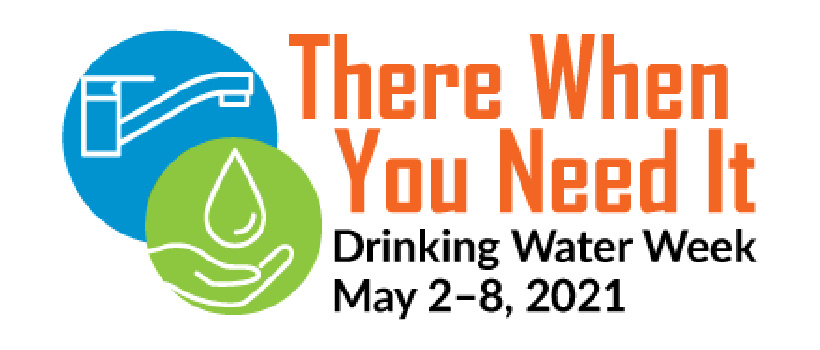
- Water covers about 70% of the Earth, and approximately 96% of that is Salt Water.
- Less than 2% of the Earth’s water supply is fresh water.
- Less than 1% of the Earth’s water is available for human consumption.
- Canada has more water per capita than any other nation on Earth (that is 10x as much as the USA).
- 85% of the water on the International Space Station is Recycled.
- On average, it takes between 30 – 45 minutes for water suppliers to produce 1 gallon of drinking water.
It’s true! Water is There When You Need It! Helping us each day in health and community! So go ahead, have another glass!
Article Sources
https://www.cdc.gov/nutrition/data-statistics/plain-water-the-healthier-choice.html
https://www.medicalnewstoday.com/articles/290814#benefits
https://www.businessinsider.com/water-facts-scientific-statistics-2017-3
https://excesslogic.com/22-interesting-facts-about-drinking-water
https://www3.epa.gov/safewater/kids/waterfactsoflife.html
https://www.epa.gov/sdwa/background-drinking-water-standards-safe-drinking-water-act-sdwa
https://www.cdc.gov/healthywater/drinking/drinking-water-week.html
Want to Learn More?
Read your Water Quality Report. Local utilities provide Consumer Confidence Reports (CCR) to their customers annually. Learn more about Consumer Confidence Reports here.
Great Information!
Other Resources
https://www.cdc.gov/healthywater/drinking/drinking-water-faq.html
https://www.dosomething.org/us/facts/11-facts-about-your-drinking-water
https://waterisawesome.com/articles/fun-and-awesome-water-facts
For Kids!
Digging in the Dirt - Welcome, Spring!
April 07, 2021
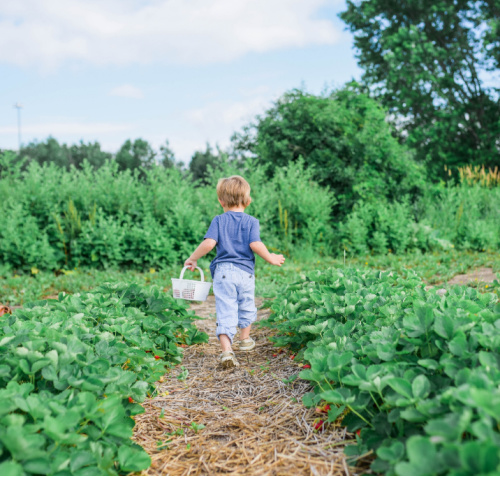
Water Your Landscape...
With Spring upon us, most of us are ready to stop hibernating in our houses and get out in the sunshine and warmth. Getting your yard ready to enjoy for the summer months is a good place to start. But where to begin? Let’s explore some great resources.
The EPA reports that residential outdoor water use across the United States accounts for nearly 8 billion gallons of water each day, mainly for landscape irrigation. The average U.S. household uses more water outdoors than for showering and washing clothes combined. That’s Crazy!
https://www.epa.gov/watersense/outdoors
So what can we do to help conserve water in our yards? First, before you turn on that garden hose, you need to make a PLAN. Choosing the right plants, supporting soil health, and proper maintenance are all keys to water-smart landscapes. The EPA offers The Water Sense-Water Smart Landscape guide to help you get started.
Let's Talk Dirt
The right soil will help you make the most of the water you use. Nutrient-rich soils actually HOLD the moisture in the soil, so adding nutrients and organic matter (such as compost and worm castings) to your soil will help the dirt retain the moisture it receives.
Another great resource is to check with your local/state Cooperative Extension Offices to have your soil tested. Most state universities can provide excellent and affordable soil testing services, for a small fee (around $10). In most cases, you can request and pay online for a soil kit that will allow you to send back a sample of your soil for testing. You can get information about your soil's pH and nutrient levels, along with advice on how to amend it for what you are planting.
Mulch Is So Important
Mulch, mulch, mulch! Mulching is key to trapping the moisture in the soil. “Up to 70% of water can evaporate from the soil on a hot day if you don’t have mulch as a protective layer on top. Mulch is one of the best moisture holding strategies you can employ. It prevents evaporation from the soil surface, helps suppress water-thieving weeds from growing and many mulches add vital nutrients to the soil at the same time. Avoid fine mulches that tend to clump and become water-repellent. Instead, use a coarser mulch which allows water/rain to move down through to the soil.”
https://themicrogardener.com/ten-water-saving-tips-for-your-garden/
Pick the Right Plants
Some plants need less water than others. “Species with low water needs will save you time and money in the garden. These include:
- Established or slow growing plants;
- Small plants;
- Varieties with small or narrow leaves;
- Grey or silver foliage; or
- Leathery, hairy, curled or fuzzy leaves that typically require less moisture.” The Micro Gardener
Wherever you live, the EPA has a great resource to explore native plants available in your state. https://www.epa.gov/watersense/what-plant
Now Water Wisely!
-
Don’t water unless it’s needed. This might seem obvious, but it’s a good reminder.
-
Check the weather. If rain is forecast, you can put away that hose and turn off those sprinklers. Also, consider your climate, location and the season. The Micro Gardener
-
Check your soil. Don’t water if your soil doesn’t need it. To check if you need to water or not, look at the soil about a spade-deep down. If it’s damp, it’s fine; if it’s dry, it’s time to water. The Guardian
-
Never Over-Water. Over-watering not only wastes a valuable natural resource, but it can actually harm your plants. Over-watering causes plants to grow roots only near the surface, which makes them vulnerable to drought. Micro Gardener
-
Mow High. Keeping your grass at the upper recommended limit (about 2 inches for most species) will help shade the soil and prevent excessive evaporation.” Love Your Landscape
-
Water the soil, not the leaves. Water at the root zone to keep evaporation to a minimum. Keeping water off your plants’ leaves will also help control fungal diseases and prevent sunscald.” Love Your Landscape
All of these methods will help you use water wisely in your lawn and garden, so you can eliminate wasteful practices and enjoy the benefits of a beautiful, healthy landscape.
Sources
The Guardian. Six Ways to Save Water in your Garden.
The Micro Gardener. Ten Water-Saving Tips for your Garden
Love your Landscape. 10 Easy Ways to Save Water in your Yard and Garden
https://www.epa.gov/watersense/outdoors
Water Sense-Water Smart Landscape
Leaks Can Run, But They Can't Hide!
March 08, 2021

Fix a Leak Week - March 15-21, 2021
Fix a Leak Week, sponsored by the U.S. Environmental Protection Agency’s WaterSense® program, takes place in March. It’s a time when families are encouraged to check for water leaks and drips in bathrooms, kitchens, and yards at home.
Are you ready to chase down leaks?
Household leaks can waste nearly 1 trillion gallons of water annually nationwide, so each year we hunt down the drips during Fix a Leak Week. Mark your calendars for EPA's annual Fix a Leak Week, March 15 through 21, 2021 - but remember that you can find and fix leaks inside and outside your home to save valuable water and money all year long.
What Is WaterSense?
The U.S. Environmental Protection Agency, or EPA for short, is the part of our nation’s government that helps to protect the air we breathe, the water we drink, and the land where we live. EPA’s WaterSense program encourages Americans to use only the water they need and avoid wasting this precious resource. This concept, known as “water efficiency,” is important because the more people there are on the planet, the more strain it puts on limited water supplies. In fact, from 1950 to 2005, the number of people living in the United States doubled, while the demand for water more than tripled. Using only what we need helps keep this growing thirst for water in check.
The Facts on Leaks
Did you know that, in a year, water leaks in your home can waste enough water to fill a backyard swimming pool? And if we added up all the water leaking in people’s homes right now it could fill nearly a trillion gallon milk jugs? That’s enough water for all the people living in the cities Los Angeles, Chicago, and Miami combined.
Water-wasting leaks include running toilets, dripping faucets, and other leaking pipes around your home. Most of these leaks can be fixed easily.
Fixing these leaks can save your family more than 10 percent on water bills. That’s like saving $1 for every $10 spent on water.
Faucets
Take a watch or clock with a second hand and time how often your faucet drips. A leaky faucet that drips at the rate of one drip per second can waste more than 3,000 gallons in a year!
There are parts that hold your faucet together called washers and gaskets - they can wear down and cause drips. If someone in your house is handy, these parts usually can be replaced easily.
There’s also a little screen device called an “aerator” that can be screwed onto the tip of your faucet—it adds air into the water stream so you can use less water to wash your hands or brush your teeth without noticing a difference in water flow.
Showers
Showerheads—the place where water comes out in streams at the top of your shower—can also get old and leak, even when the water is not on. A showerhead that drops just 10 drips in a minute wastes more than 500 gallons per year. That’s enough water, if you saved it all up, to wash 60 loads of dishes in your dishwasher!
Most leaky showerheads can be fixed by making sure they’re screwed in tight. Having someone handy wrap the showerhead in “pipe tape,” a special tape available at hardware stores, and using a wrench to tighten it will help.
Toilets
It’s one of the oldest prank phone calls—“Is your toilet running? Then you’d better catch it!” But a running toilet is no joke. If you can hear the water in your toilet making noise, even when no one flushed recently, you have a running toilet that could be wasting 200 gallons of water or more every day! Sometimes you just need to jiggle the handle to fix it, but sometimes a part needs to be replaced.
Many toilet leaks are caused because the “flapper” is decayed or broken. The flapper is a rubber piece that opens up to let the water flow from the tank into the bowl when you pull down on the toilet handle. You can easily replace this inexpensive part of your toilet.
Outdoors
Check your garden hose for leaks where it connects to the side of the house. If it leaks when the hose is turned on, make sure the hose is screwed in tight. If that doesn’t work, you may need to replace the nylon or rubber hose washer or wrap the “spigot,” which is the metal faucet where the end of the hose attaches to the wall, in pipe tape.
If you have a sprinkler system, be sure to check the system each spring before turning it on to make sure the sprinklers were not broken during the winter or have sprung any leaks.
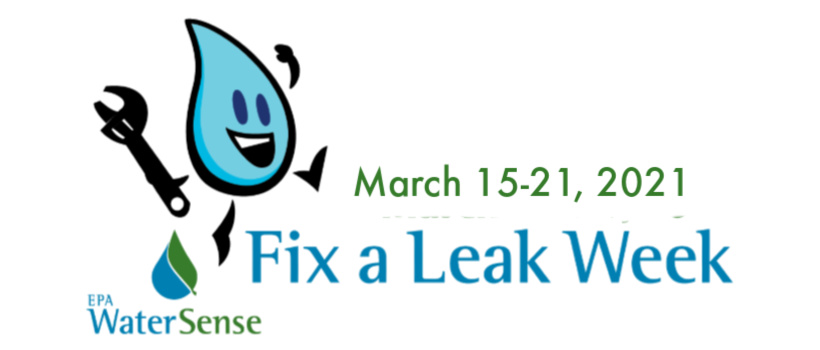
For more information, visit https://www.epa.gov/watersense
Use the EPA’s handy checklist to keep track of your search for leaks: Detect and Chase Down Leaks at Home Checklist (En Español (PDF)
Article & Images Courtesy of https://www.epa.gov/watersense/fix-leak-week#Events
Are you Drinking Enough Water This Winter?
February 01, 2021

Chapped lips? Dry skin? Headaches? Nosebleeds? Dry cough? Fatigue?
These are all signs that you might not be getting enough water this winter. In the summer, when you’re hot and sweaty, your body keeps reminding you that you’re thirsty and NEED water. But in the winter, when you’re cold and shivering, it’s all-too-easy to neglect hydration. Your body doesn’t feel as thirsty, and it’s much harder to recognize that you haven’t been drinking much water. That’s why you have to consciously remember to drink enough water in the winter, when the air is dry and the heater is working overtime.
Drinking More Water Will Help
Fight Dehydration.
Staying hydrated helps you regulate your body temperature and helps your circulatory system. Proper hydration helps your muscles use their balance of fluids to prevent muscle fatigue. Also, “two large studies found a lower risk of long-term kidney problems among people who drink more water and other fluids daily.” NYT Hydration enables our bodies to flush toxins. Basically, drinking enough water keeps your body working properly.
Keep the Winter Weight Away.
Water is wonderful for weight loss. Drinking a few glasses of water can keep you from reaching for other, less healthy beverages. Water can also help curb your hunger, making you feel more full. Drinking water can also help you burn more calories. Healthline
Improve your Skin.
Winter can really take a toll on your skin. From the dry, over-heated air inside to the dry, cold air outside, winter is constantly leaching moisture from your skin. We need moisture to keep our skin cells full and hydrated; dehydration causes skin to chap, crack, and peel. Keep your skin healthy and glowing by drinking plenty of water during these cold winter months. WaterLogic-Stephen Tamlin
Give you Energy.
Dehydration is a major cause of fatigue. “Keeping well hydrated will ensure your bodily functions are supported and running efficiently. When you are dehydrated your body functions slow down and use up your extra energy resources, leaving you feeling tired and sluggish.” WaterLogic-Stephen Tamlin
Protect your Immune System.
Winter is serious breeding time for viruses, and this cold & flu season has been a rough one. “Dehydration can seriously weaken our immune systems barriers. The lack of water can dry out the mucous membranes in our lungs and sinus passages, which can reduce their resistance to infections. Keeping well hydrated during winter ensures that the barriers used to protect your body from colds and flu are fully functional and completely intact. To ensure you stay fighting fit during the winter, make sure you keep drinking water regularly and fight back against the viruses.” WaterLogic-Stephen Tamlin
Drinking water makes you sleep better, think better, work better, and feel better!
Read more:
Healthline
https://www.healthline.com/nutrition/drinking-water-helps-with-weight-loss#TOC_TITLE_HDR_2
WaterLogic
https://www.waterlogic.com/en-gb/resources/blog/5-major-reasons-drink-water-winter/?ref=angel
Let's Get Ready For Winter
December 01, 2020

The holidays are fast approaching, and with them, wintry weather. Snow, ice, and freezing temperatures can really take a toll on a home, causing expensive damages and high utility bills. Winterizing your home can help prevent unexpected surprises, such as busted pipes, and will help with energy costs.
A few simple tips to winterizing your home can help make sure that your holiday feasts with friends and family are warm and cozy.
Here are some tips to help you weather this winter well:
Plumbing
Pipes are very susceptible to freezing, and repairs can be extremely expensive.
- Learn how to shut off water valves in case a pipe burst.
- Exposed pipes in uninsulated spaces such as attics and crawlspaces should be wrapped with electrical heating tape and insulated with foam insulation.
**If you are leaving your home unoccupied for a season, you should shut off the water supply and drain the pipes. A water leak in an unoccupied home can cause catastrophic damage.
Fireplace & Chimney
- Check your wood-burning fireplace or stove to make sure that it is working properly before winter. Loose bricks or missing mortar should be replaced or repaired to prevent fire from spreading into the wall behind the fireplace.
- Test the flue damper to ensure that it is operating properly.
- Check your chimney for obstructions, and make sure that it is clean, hiring a professional if needed. You can test the chimney draft by lighting some newspaper and checking to see if the smoke rises properly.
Heating System
- Test your heating system/furnace BEFORE the weather turns cold. It is best to have your system inspected before use to evaluate it for safety and efficiency. To test your system, turn the thermostat to HEAT and allow it to complete a full heating cycle, from turning on and blowing hot air through the vents to shutting off the blower again.
- Inspect ductwork for mold, dirt, debris, holes and loose connections. Contact a service technician for any repairs.
- Be sure to properly maintain your heating system, replacing air filters regularly (according to the recommended schedule) and checking for carbon monoxide leaks. If your thermostat is old, replace it with a newer model that may be programmed to lower the temperature when you are not at home or asleep.
Insulation
Efficient insulation can save a great deal on utility bills.
- If you are unsure whether or not you have sufficient insulation, schedule an energy audit. Your utility company might provide complimentary audits.
- Exterior outlets may be insulated with foam sealing gaskets.
- Insulate exposed ductwork.
- Cover your water heater with blanket insulation or a cover, according to the manufacturer’s instructions.
Doors & Windows
A great deal of heat may be lost through drafty doors and windows, and can contribute to high utility bills.
- Inspect window glass to make sure it is whole and secure in its frame, and inspect doors for stability, replacing and repairing when needed.
- Before cold weather arrives, check for gaps around windows and doors. Gaps are easiest to see at night when there is light on one side and dark on the other. Fill gaps with silicone caulk or spray foam insulation designed for windows and doors.
- Install new weather stripping under entry doors and around windows and, when possible, replace screens with storm windows and doors.
Exterior walls get very cold, and they radiate this chill into your home. The walls heat up far more slowly than the air in your house; if your house is poorly insulated, your exterior walls may be many degrees colder than the air in your home. So, here are some ideas for keeping your house warm:
- Close those blinds. Closing your blinds, shades, and/or curtains at night adds another layer of insulation to those windows; it helps to keep the cold air out and the warm air in.
- Cover those walls. Did you know that you could help insulate your home and reduce energy loss by covering your walls with framed pictures, mirrors, tapestries, or —best of all— bookshelves? Bookcases full of books make a great barrier —helping to keep that cold air outside where it belongs.
- Move that furniture. Simply moving furniture (sofas, beds, desks, etc.) away from the cold exterior walls can help you feel warmer.
- Clean that roof. To maintain proper insulation and to prevent damage, you need to remove excess snow from your roof. Using a “roof rake” while standing on the ground makes this a far less dangerous task.
Check out this helpful infographic from the CDC 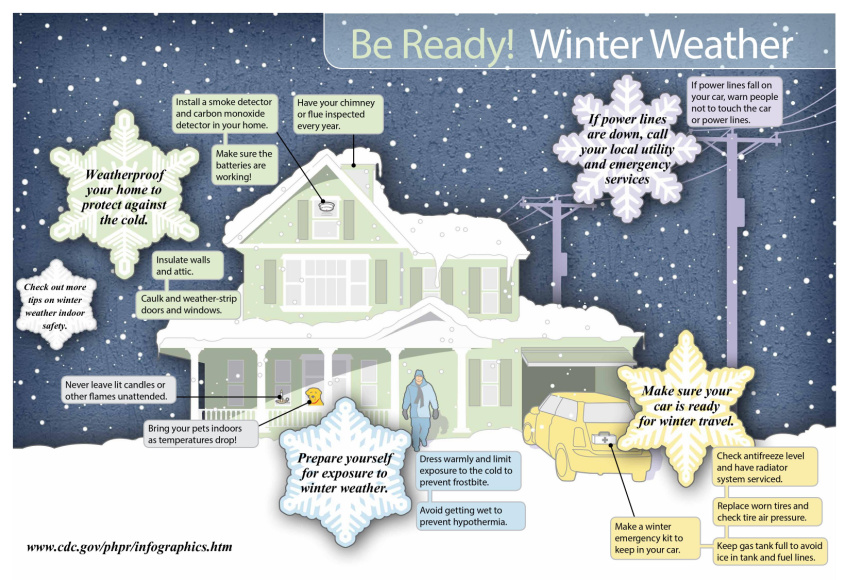
Are You Ready for a Winter Weather Emergency?
Putting together a winter weather preparedness kit for your home or car will ensure that you have everything you need in case of a blizzard, storm, or extensive power outage. Here are some suggestions for your kit.
- Flashlights & batteries
- Candles & Matches
- Battery-powered radio (2-way radio is preferred)
- Blankets or sleeping bags
- Bottled water
- A week’s worth of non-perishable food
- Can opener
- First aid kit and necessary medications
- Shovel, road salt, ice scraper
Last but not least, here is a handy winterizing home checklist to print from Wholefully.com
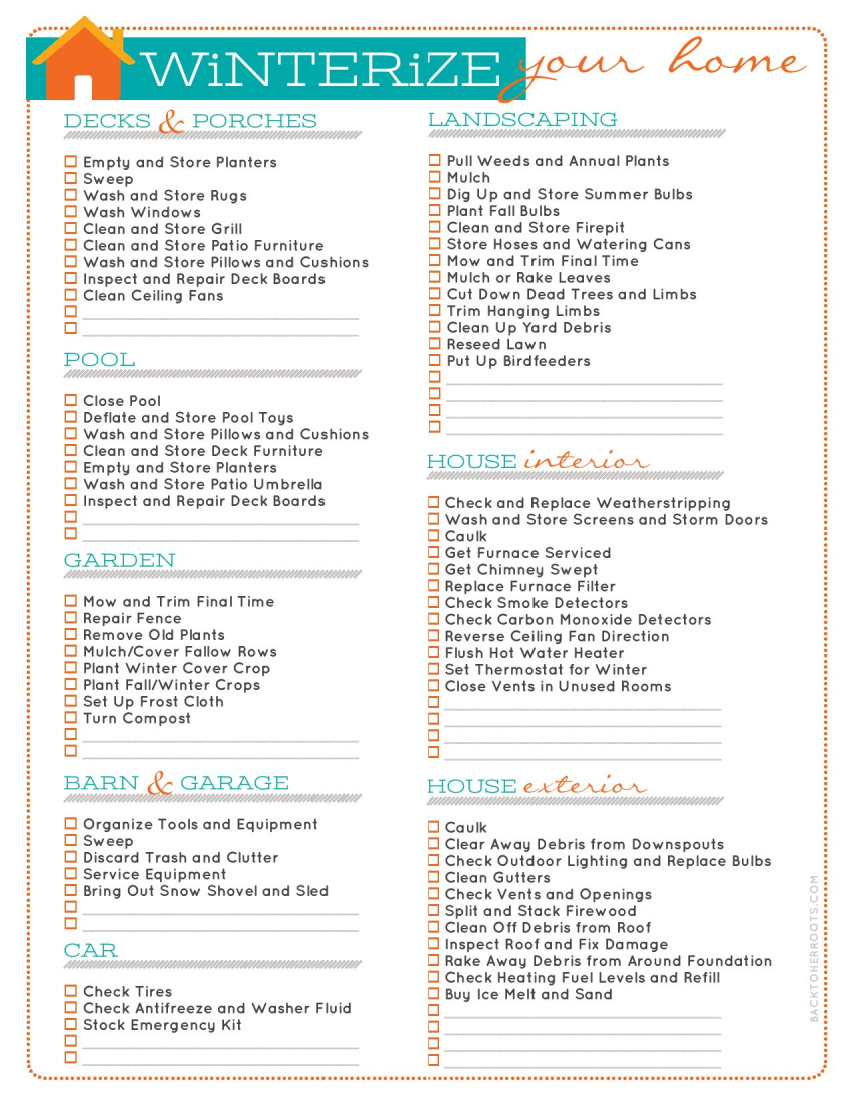
Implement some of these handy tips and stay warm, healthy and safe this winter season!
In Flanders Fields
November 01, 2020

November 11, 1918.
On November 11 of 1918, the 11th hour of the 11th day of the 11th month, an armistice went into effect,a cessation of hostilities between the Allied Nations and Germany, ending the “war to end all wars.”
The official end of World War I would not be declared for seven more months, at the signing of the Treaty of Versailles, but the end actually came on that November day, when the truce was signed, the opposing forces laid down their weapons, and the war known as the “Great War” was over.
November 11, 1919, marked the initial celebrations of Armistice Day. King George V celebrated the initial Armistice Day at Buckingham Palace, hosting a banquet in Honor of the President of the French Republic. U.S. President Wilson proclaimed November 11 as the first commemoration of Armistice Day with the following words: "To us in America, the reflections of Armistice Day will be filled with solemn pride in the heroism of those who died in the country’s service and with gratitude for the victory, both because of the thing from which it has freed us and because of the opportunity it has given America to show her sympathy with peace and justice in the councils of the nations…"
On May 13, 1938, an act of US Congress made November 11 a legal holiday—a day to be dedicated to the cause of world peace and to be thereafter celebrated and known as "Armistice Day." In 1954, after World War II had required the greatest mobilization of soldiers, sailors, Marines and airmen in the Nation’s history; after American forces had fought aggression in Korea, the 83rd Congress, at the urging of the veterans service organizations, amended the Act of 1938 by striking out the word "Armistice" and inserting in its place the word "Veterans." With the approval of this legislation (Public Law 380) on June 1, 1954, November 11th became a day to honor American veterans of all wars. (US Dept. of Veterans Affairs).
In the United States, Veterans Day honors all American veterans, living or dead, but gives particular thanks to living veterans who served their country honorably, during wartime or peacetime.
An official wreath-laying ceremony is held each Veterans Day at the Tomb of the Unknowns in Arlington National Cemetery, and many parades and celebrations are held all around the country.
In Canada, November 11 is known as Remembrance Day and is a statutory holiday in all three territories and in six of the ten provinces.
In 1931, the federal parliament amended the Armistice Day Act, making the day known as Remembrance Day. The Canadian department of Veterans Affairs states that the date is of "remembrance for the men and women who have served, and continue to serve our country during times of war, conflict and peace"; specifically, the First and Second World Wars, the Korean War, and all conflicts since then in which members of the Canadian Forces have participated. The department runs a program called Canada Remembers with the mission of helping young and new Canadians, most of whom have never known war, "come to understand and appreciate what those who have served Canada in times of war, armed conflict and peace stand for and what they have sacrificed for their country." (Veterans Affairs Canada. "Canada Remembers > About Canada Remembers". Queen's Printer for Canada. Retrieved 11 November 2011)
Remembrance Day is celebrated all over the globe on November 11, honoring those who have served their countries well— fearlessly and selflessly. We in the Americas honor our veterans, celebrating with those still living and remembering those who are no longer with us.
On November 11, we celebrate along with countries across the world.
From South Africa to Northern Ireland.
From Barbados to Belgium.
From Australia to India.
From Canada to Kenya.
From the United Kingdom to the United States.

November 11. Armistice Day, Veterans Day, Remembrance Day.
Honor those who have served.
In Flanders fields the poppies blow
Between the crosses, row on row
That mark our place; and in the sky
The larks, still bravely singing, fly
Scarce heard amid the guns below.
We are the Dead. Short days ago
We lived, felt dawn, saw sunset glow,
Loved and were loved, and now we lie
In Flanders fields.
Take up our quarrel with the foe:
To you from failing hands we throw
The torch; be yours to hold it high.
If ye break faith with us who die
We shall not sleep, though poppies grow
In Flanders fields.
Lieutenant Colonel John McCrae, a Canadian physician who fought on the Western Front and died while on active duty in 1918, wrote what is undoubtedly the most famous poem of World War I, “In Flanders Fields.”
American War Deaths: http://www.militaryfactory.com/american_war_deaths.asp
Canadian Remembrance Day: http://www.statutoryholidays.com/remembrance_day.php
In Flanders Fields Poem: http://www.warmuseum.ca/cwm/exhibitions/remember/flandersfields_e.shtml
History of Veterans Day: http://www.va.gov/opa/vetsday/vetdayhistory.asp
History of Veterans Day: http://www.history.com/topics/holidays/history-of-veterans-day
Remembrance Day: https://en.wikipedia.org/wiki/Remembrance_Day
How can you express your appreciation to those who have served? Click HERE to read about 8 great ways. www.military.com
Imagine a Day without Water
October 01, 2020
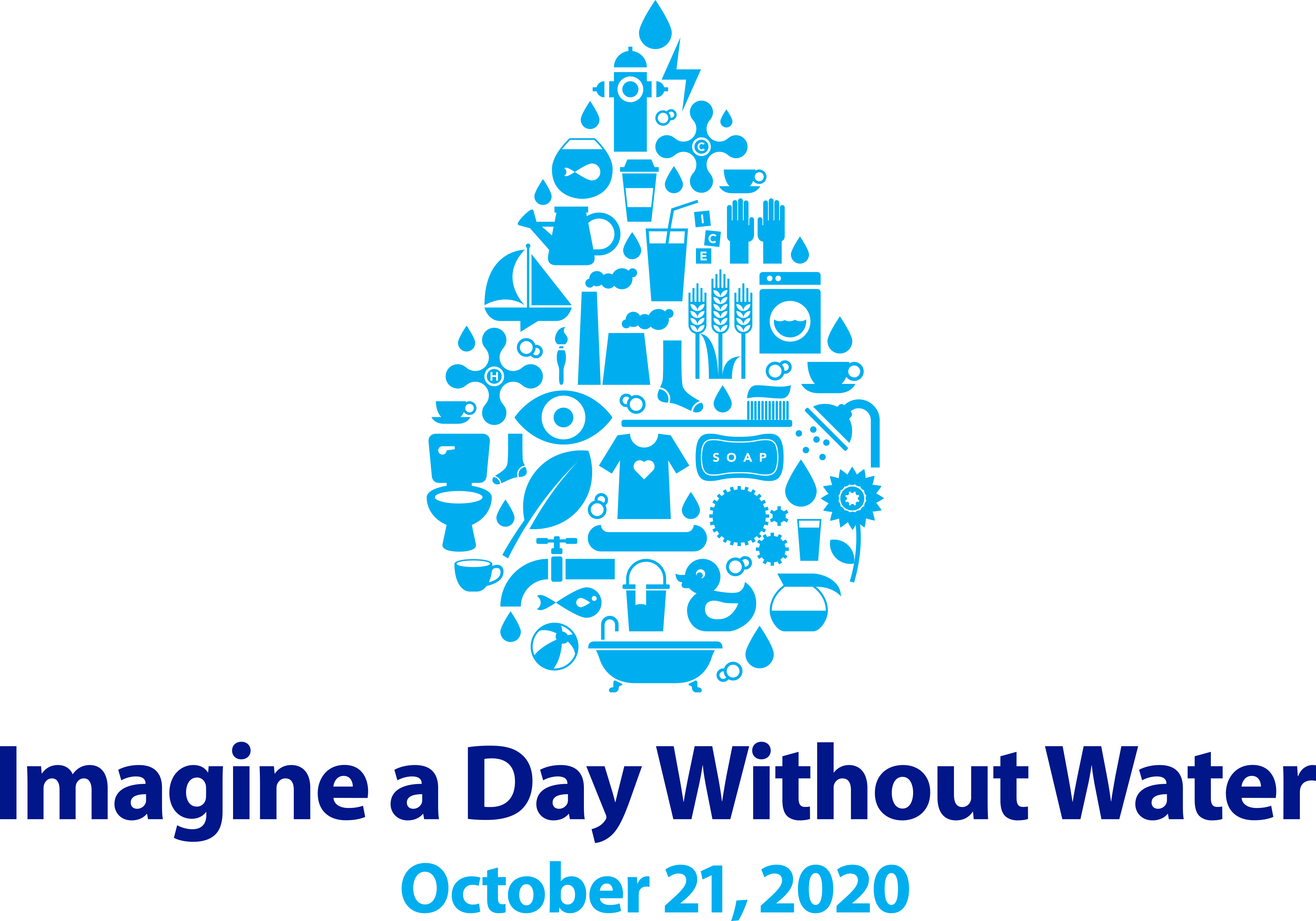
Could you go a day without water? No water to drink or make coffee? No water to shower, brush your teeth, flush the toilet, or do laundry? No water for firefighters to put out fires. No water for farmers to water their crops.
We know that water is essential. That’s why we want you to know about a nationwide educational effort called “Imagine a Day Without Water.” On October 21, the Value of Water Coalition is coordinating a national advocacy and educational event, Imagine a Day Without Water, to raise awareness about the most essential natural resource we have: Water. Across the country, water agencies, mayors, engineers, contractors, business leaders, community members, schools, organizations, corporations, environmental advocates, and more are joining together to educate people about how water is essential, the challenges facing water and wastewater systems, and the need for investment.
Even though water is absolutely vital to everything we do, it too often is forgotten. Out of sight, out of mind. Many people take water service for granted. Clean, safe, reliable, and affordable water comes out of the tap and flows down the drain without a second thought. But the massive infrastructure — much of it underground — which brings water to homes and businesses, takes it away, and treats it, is aging. A water main breaks somewhere in the U.S. every two minutes. Most pipes have an average life expectancy of 50 years, but in many major cities, water pipes are more than 100 years old. Communities cannot afford to go a day without water if those systems reach their breaking points.
Water is essential.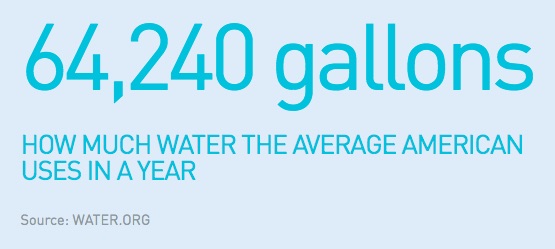
-
Water is essential for everything we do in life.
-
We need water to make a cup of coffee, fight fires, build bridges, and swim on a summer day. We need water to grow strawberries, manufacture blue jeans, and make life-saving medicines.
-
From agriculture to manufacturing, most sectors of our economy rely on water. Without water, our economy would grind to a halt.
-
While nature provides water, it takes pipes, pumps, equipment, and people working 24/7 to deliver clean water to homes and businesses, and then remove and treat wastewater so it can safely be reused or returned to the environment.
-
Water infrastructure is largely invisible. Because it’s out of sight, it’s out of mind for most people.
Problem: Water infrastructure and resources are at risk and this puts the nation at risk.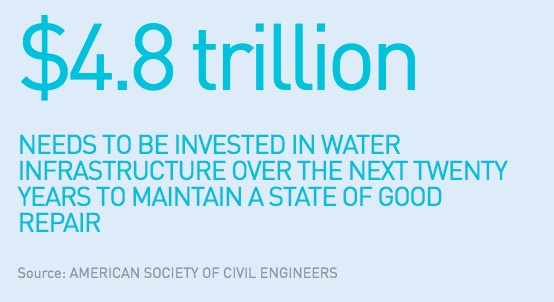
-
After working around the clock for 100 years or more, water and wastewater infrastructure is aging and failing.
-
These systems were built in the early 20th century for communities that looked completely different than today.
-
We also face serious water resource challenges including: epic drought in the Western states, water and sewer breaks in East Coast and Midwestern communities, and rising sea levels, all of which contribute to flooding and additional stress on water systems.
-
With a growing national population and finite water supplies, we have long-term water supply challenges that must be addressed with new and creative strategies that meet current and future needs.
1) Invest Locally
- We need water and wastewater bills that better reflect what it costs to deliver these essential services and to invest in the infrastructure so it’s in a state of good repair.
- Water and wastewater services are incredibly affordable compared to other utilities. The truth is this: if your cable goes out, it’s a nuisance, but if your water goes out, it is a crisis.
2) A Stronger Federal Partner
-
When the federal government sets infrastructure policy or makes infrastructure investments, water must be front and center.
- We need a stronger federal partner that expands access to low-cost capital for all water providers and encourages collaboration between the public and private sectors.
3) New Water Resource Strategies
- While conservation is critical, we also need innovative water management strategies to respond to the unprecedented water challenges facing communities all across the country. Investments can support a wide range of innovations including resource recovery, reuse, and diversification of local water supplies.
4) Public-Private Partnerships
- Water projects can be expensive and no one sector alone can meet the need for investment. Public-private partnerships are essential to meet our financing and water management needs.
Future/Potential: Ensure clean, safe water so all communities can thrive.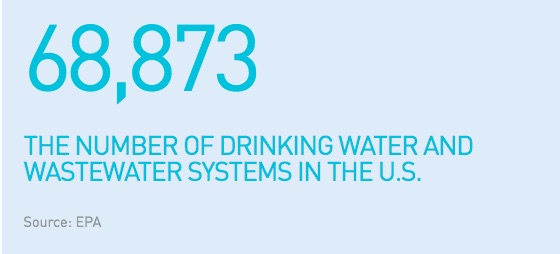
-
Water providers are economic anchors, frontline environmental stewards, good community partners and innovators.
-
We chart a prosperous and sustainable future if we invest in water infrastructure and water resources.
-
Water drives economic growth and competitiveness. Water protects public health, Water revitalizes neighborhoods and supports community vitality. Water sustains our environment and makes us more resilient in the face of climate change.
Water is life.
To learn more, visit us at: www.thevalueofwater.org /thevalueofwater @TheValueofWater
"Investing in our water is investing in a future where no American will have to imagine a day without water."
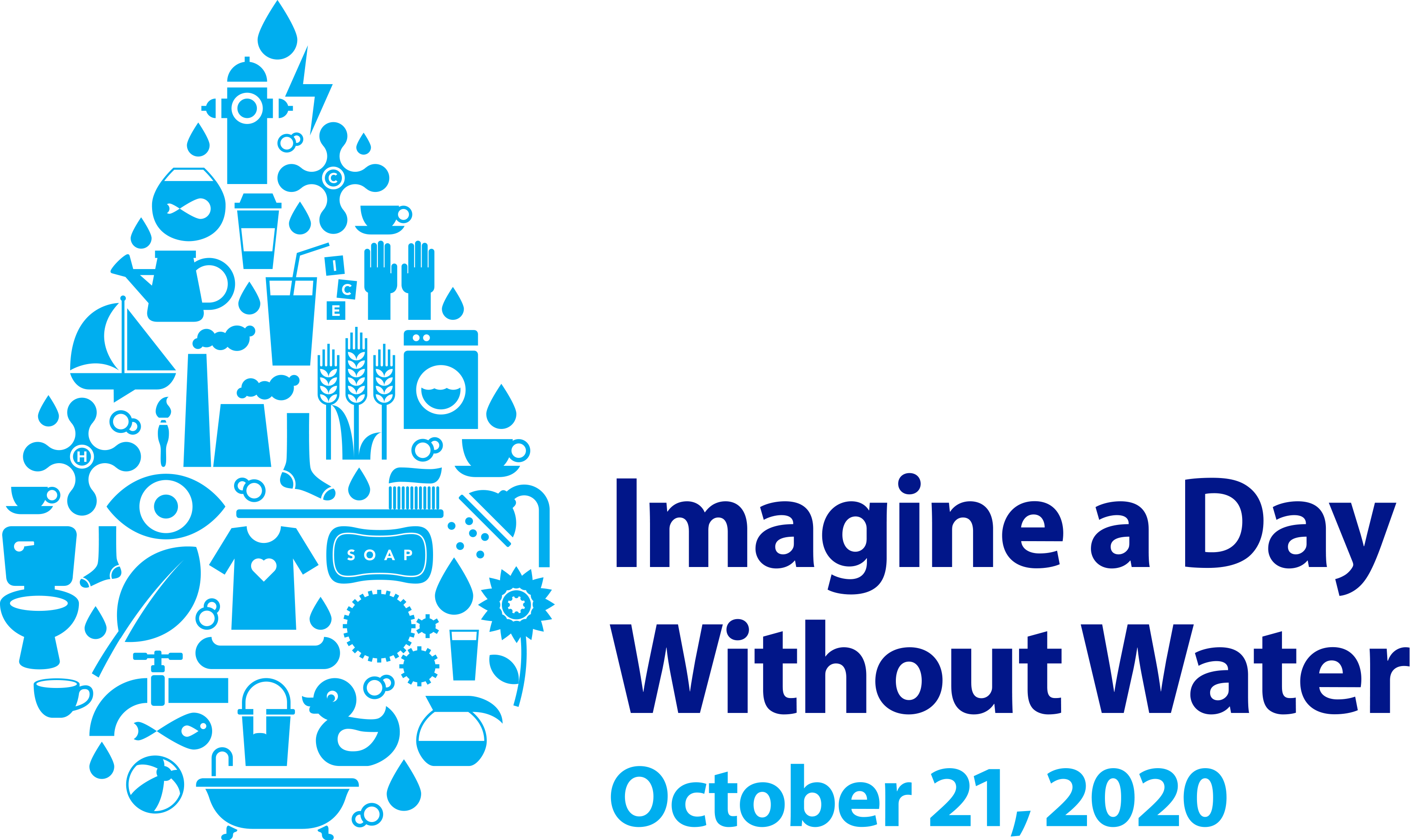
More information about Imagine a Day Without Water can be found here:
http://imagineadaywithoutwater.org/
Be prepared.
September 01, 2020
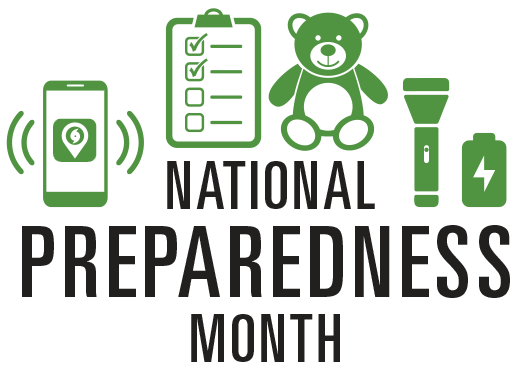
September has arrived, and autumn is well on its way.
As the summer heat begins to fade, and the first hints of red and gold begin to appear, it’s a great time to relax and enjoy the mild weather. Next Monday, September 7, is Labor Day/ Labour Day, a day which honors the achievements of our workforce —a "yearly national tribute to the contributions workers have made to the strength, prosperity, and well-being of our countr[ies].” Department of Labor.
So, take a break, rest from your labor, and enjoy the respite.
Then, after your rest, take advantage of this time to plan ahead. September is considered “National Preparedness Month” in the US: a month to get ready, to get prepared for harsher weather and conditions that will be coming, and a time to prepare for any emergencies that might arise.
So, use this September to make sure that you —and your home— are ready.
Here are some guidelines you can start with as you prepare for winter:
Fireplace & Chimney
- Check your wood-burning fireplace or stove to make sure that it is working properly before winter. Loose bricks or missing mortar should be replaced or repaired to prevent fire from spreading into the wall behind the fireplace.
- Test the flue damper to ensure that it is operating properly.
- Check your chimney for obstructions, and make sure that it is clean, hiring a professional if needed. You can test the chimney draft by lighting some newspaper and checking to see if the smoke rises properly.
Heating System
- Test your heating system/furnace BEFORE the weather turns cold, ideally no later than October. It is best to have your system inspected before use to evaluate it for safety and efficiency. To test your system, turn the thermostat to HEAT and allow it to complete a full heating cycle, from turning on and blowing hot air through the vents to shutting off the blower again.
- Inspect ductwork for mold, dirt, debris, holes and loose connections. Contact a service technician for any repairs.
- Be sure to properly maintain your heating system, replacing air filters regularly (according to the recommended schedule) and checking for carbon monoxide leaks. If your thermostat is old, replace it with a newer model that may be programmed to lower the temperature when you are not at home or asleep.
Insulation
Efficient insulation can save a great deal on utility bills.
- If you are unsure whether or not you have sufficient insulation, schedule an energy audit. Your utility company might provide complimentary audits.
- Exterior outlets may be insulated with foam sealing gaskets.
- Insulate exposed ductwork.
- Cover your water heater with blanket insulation or a cover, according to the manufacturer’s instructions.
Doors & Windows
A great deal of heat may be lost through drafty doors and windows, and can contribute to high utility bills.
- Inspect window glass to make sure it is whole and secure in its frame, and inspect doors for stability, replacing and repairing when needed.
- Before cold weather arrives, check for gaps around windows and doors. Gaps are easiest to see at night when there is light on one side and dark on the other. Fill gaps with silicone caulk or spray foam insulation designed for windows and doors.
- Install new weather stripping under entry doors and around windows and, when possible, replace screens with storm windows and doors.
In addition to battening down the hatches for rough weather ahead, it is good to prepare for any other eventuality that might occur.
The Department of Homeland Security and FEMA have many excellent resources to help citizens get ready for emergencies. Visit Ready.gov to find more information and helpful resources for National Preparedness Month. Learn how to Make a Plan, Build a Kit, Prepare for Disasters, and Teach Youth about Preparedness. Learn about the types of emergencies that might affect your area— from hurricanes to housefires, from snowstorms to severe heat— and formulate your readiness plan.
HERE is a helpful Emergency Supply Checklist. Stock supplies now and have a kit available so that you're ready for anything. HERE is another helpful printable guide from the Federal Emergency Management Agency. FEMA has many other useful published resources for individuals and families.
For example, a great idea for families is this Family Communication Plan:
Prepare. Plan. Stay Informed.
In the water . . . but out of harm's way
August 01, 2020

Swimming pools and beach vacations, waterskiing at the lake and rafting on the river, canoeing, kayaking, fishing, boating, wake boarding, tubing, jet skiing, snorkeling, sailing, surfing, and swimming - when it's summertime and the mercury is on the rise, there is nowhere we'd rather be than in the water! North America’s lakes, rivers, and seas are oases of beauty and respite from the summer sun, so it’s no surprise that swimming is summer’s number one pastime. But as you enjoy the season's final days, please make water safety your first priority. Swimming cools us off and keeps us fit, but it can also be dangerous. Drowning is the number one cause of unintentional death among children aged 1-4, and it's the number two cause of unintentional death among those aged 5-24. A moment of distraction can be fatal, so please take great care to keep yourself and your loved ones safe in the water.
Learn to swim, and make sure your children learn to swim.
This cannot be overstated. According to the CDC, teaching children to swim can reduce their risk of drowning by as much as 88%. That’s huge! Swimming is a vital, possibly life-saving skill, so sign up for those lessons. (The American Academy of Pediatrics does not, however, recommend swimming lessons for children under 1 year of age.) Swim lessons should not be regarded as "drown proofing," though; close supervision by a responsible adult is the best way to prevent drowning in children.
Never, ever swim alone.
Just don’t do it. Not ever. Even the best swimmers can experience muscle cramps or exhaustion, and find themselves in need of help.
Do not leave children unattended near water.
Constant adult supervision is key around water, even bathtubs. Drowning can happen very quickly; that phone call can wait.
Designate a "Water Watcher."
Even when swimming with all adults, it is crucial to have a designated "watcher" (this could be a lifeguard) who will avoid distractions and keep their eyes on the swimmers at all times. Reader's Digest.
Enclose backyard swimming pools with a fence at least 4 feet high, separating the house from the pool.
"The fence should have a self-closing and self-latching gate that opens away from the pool, with the latch at least 54 inches high. Check the gate frequently to be sure it is in good working order. Keep the gate closed and locked at all times. Be sure your child cannot manipulate the lock or climb the fence. No opening under the fence or between uprights should be more than 4 inches (10 cm) wide. Keep toys out of the pool area when not in use so that children are not tempted to try to get through the fence." healthychildren.org
Learn CPR.
Know what to do in case of an emergency (this is great knowledge to have in many situations).
Avoid alcohol.
Drinking and swimming don’t mix. Alcohol impairs your judgment, coordination, and swimming ability. It also lowers your body’s core temperature, which increases your risk of hypothermia.
Wear a life jacket when you are boating.
Also, children or inexperienced (or even just really tired) swimmers should wear life jackets around lakes, rivers, or oceans.
Be aware.
Be aware of where you’re swimming, always swimming in designated swimming areas and watching out for sudden drop-offs, rip currents, and underwater hazards.
Know your limits.
Be aware of your own swimming ability and don’t take chances.
Drink plenty of water.
Summer fun also means summer heat, and dehydration happens more quickly than you realize.
Protect yourself from those UV rays.
Wear sunscreen, and be sure to reapply every two hours (or after you get wet).Hats, sunglasses, and cover-ups are your friends, so keep yourself covered whenever you can. Seek out the shade, especially from 10am-4pm when the sun is most intense. Be especially careful around water and sand, which reflect UV rays and can cause sunburn even more quickly.
Find out more about water safety:
The American Red Cross Website
The CDC (Center for Disease Control and Prevention) website
“Drowning doesn’t look like Drowning” by Mario Vittone, Coast Guard rescue swimmer [Slate, May 2014]
healthychildren.org, Water Safety: Tips for Parents of Young Children
healthychildre.org, Swim Safety Tips
Reader's Digest, 12 Water Safety Tips Adults don't follow but should.
----------------------------
From one end of this continent to the other
July 01, 2020

July 2020. This month, North Americans will be celebrating the birth of their country, their identity as a people and as a nation. From Winnipeg to Washington, D.C., from Calgary to Corpus Christi, from Toronto to Tallahassee, we will watch fireworks and watch parades, we will sing and laugh and make merry. And EAT. Whether your celebration will include barbecue and watermelon, or haddock and butter tarts, there will certainly be some good eats. Join the celebration!
Today, July 1, Canadians will celebrate Canada Day (formerly known as “Dominion Day”)
“On July 1, 1867, with passage of the British North America Act, the Dominion of Canada was officially established as a self-governing entity within the British Empire.” History.com
This act, now known as the Constitution Act, united the colonies of Canada, Nova Scotia, and New Brunswick into a single Dominion called Canada, creating a new nation responsible for its own governance. Today, Canadians from British Columbia to Prince Edward Island will celebrate their national identity and remember the day they became “Canadians.”
Happy Birthday, Canada!
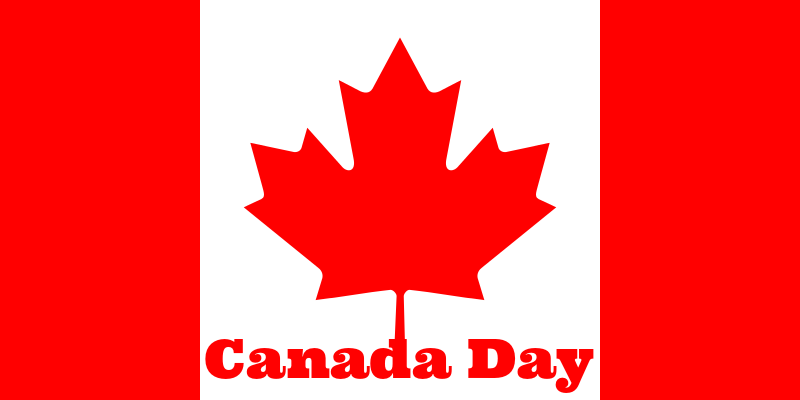
Life, Liberty, and the Pursuit of Happiness
In a few days, Americans from California to Maine will be celebrating their national identity and remembering the day they became “Americans.” No longer colonials, no longer simply Virginians or South Carolinians, we are now “Americans,” united under one flag, declared INDEPENDENT.
On July 2, 1776, the second Continental Congress approved a resolution, proposed by Richard Henry Lee of Virginia, which declared the United States independent from Great Britain’s rule. Two days later, the Declaration of Independence, written primarily by Thomas Jefferson, was approved by Congress. This document begins:
IN CONGRESS, JULY 4, 1776
The unanimous Declaration of the thirteen united States of America
 When in the Course of human events it becomes necessary for one people to dissolve the political bands which have connected them with another and to assume among the powers of the earth, the separate and equal station to which the Laws of Nature and of Nature's God entitle them, a decent respect to the opinions of mankind requires that they should declare the causes which impel them to the separation.
When in the Course of human events it becomes necessary for one people to dissolve the political bands which have connected them with another and to assume among the powers of the earth, the separate and equal station to which the Laws of Nature and of Nature's God entitle them, a decent respect to the opinions of mankind requires that they should declare the causes which impel them to the separation.
We hold these truths to be self-evident, that all men are created equal, that they are endowed by their Creator with certain unalienable Rights, that among these are Life, Liberty and the pursuit of Happiness.
— That to secure these rights, Governments are instituted among Men, deriving their just powers from the consent of the governed, — That whenever any Form of Government becomes destructive of these ends, it is the Right of the People to alter or to abolish it, and to institute new Government, laying its foundation on such principles and organizing its powers in such form, as to them shall seem most likely to effect their Safety and Happiness.
This is the document that made the United States a free and independent nation. This is what we celebrate.
On July 3, 1776, John Adams had written to his wife Abigail:
The second day of July, 1776, will be the most memorable epoch in the history of America. I am apt to believe that it will be celebrated by succeeding generations as the great anniversary festival. It ought to be commemorated as the day of deliverance, by solemn acts of devotion to God Almighty. It ought to be solemnized with pomp and parade, with shows, games, sports, guns, bells, bonfires, and illuminations, from one end of this continent to the other, from this time forward forever more.[7]
Wikipedia
John might have been off by a couple of days, but he was certainly correct about America’s celebration of its independence.
This July, take a cue from President Adams, and celebrate "from one end of this continent to the other, from this time forward forever more!”
Did you know: Thomas Jefferson and John Adams, the only two Presidents of the United States to sign the Declaration of Independence, died on the same day: July 4, 1826, which was the 50th anniversary of the Declaration.

Sources:
Wikipedia, Independence Day (United States)
History.com, History of the fourth of July
USHistory.org, “Declaration of Indepedence”
Wikipedia, “Canada Day”
Quora.com, “Why did Canada have an Independence Day?”
History.com, “Canadian Independence Day”
Safety this Summer: COVID-19
June 09, 2020
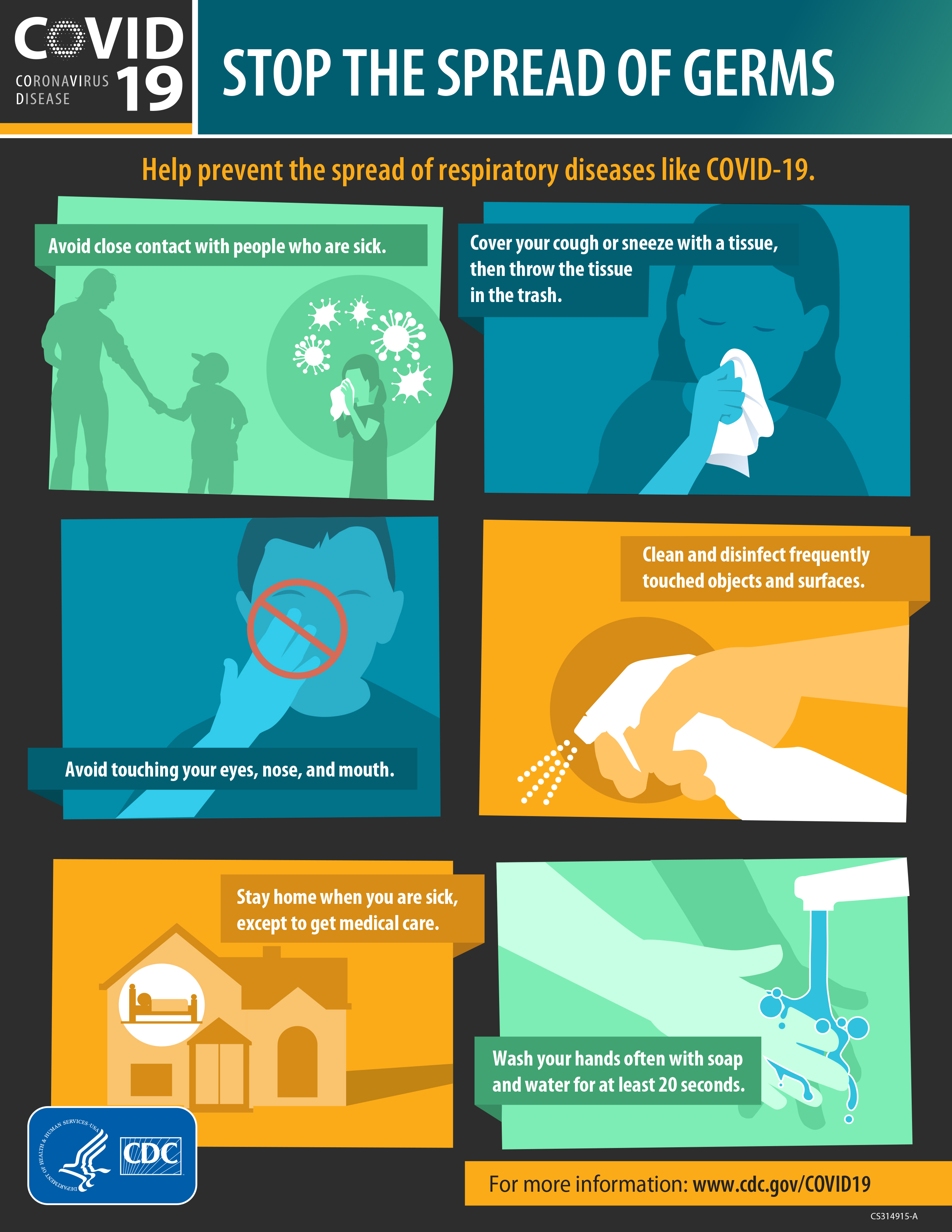
As the summer begins to sizzle and business and beaches reopen, how do we navigate the continuing risk of COVID-19? This summer exposes us to a number of health risks — some all-too-common, such as heat stroke and dehydration, and some not-at-all-common, such as the novel (new) Coronavirus Disease 2019. When we go out into the sun, we help prevent those common risks by coming prepared with water bottles and sunscreen. When we enter the newly-opened public spaces, we can help prevent this new health risk by coming prepared with the best information we can find. Below are some resources where you can find helpful information on Coronavirus causes and prevention measures. This information is primarily from the Centers for Disease Control.
CDC is responding to a pandemic of respiratory disease spreading from person-to-person caused by a novel (new) coronavirus. The disease has been named “coronavirus disease 2019” (abbreviated “COVID-19”). This situation poses a serious public health risk. The federal government is working closely with state, local, tribal, and territorial partners, as well as public health partners, to respond to this situation. COVID-19 can cause mild to severe illness; most severe illness occurs in older adults. CDC.gov
Please Note: The situation is changing daily, even hourly. Please continue to check back at this CDC page for up-to-date information.
What do YOU NEED TO KNOW about COVID-19?
How to Protect Yourself If you think you are Sick
One important way to protect yourself is by washing your hands.
Other Vital Information:
Symptoms Older Adults & Medical Conditions Prepare Your Family
Traveling this summer? Here's what you need to know
Please visit CDC.GOV for more information.
You can also keep up with CDC updates on Coronavirus Disease 2019 by signing up for email updates, syndicating available content, and subscribing to Coronavirus Disease 2019 RSS Feed. CDC.gov
Click HERE for a helpful PRINTABLE PDF from the CDC
COVID-19 Cases in the US
Fix a Leak Week
March 01, 2020
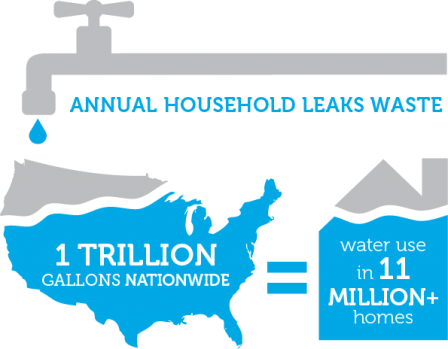
Mark your calendars, folks: March 16-22 is the EPA's annual Fix a Leak Week. Household leaks can waste more than 1 TRILLION gallons of water each year. Yes, 1 TRILLION—That's a one with 12 zeros behind it (1,000,000,000,000). Those drippy faucets and leaking toilets are more than an annoyance; they cost you lots of money, and they waste LOTS of water. So, this March, hunt down those drips! Chase those leaks!
Check, Twist, Replace!
EPA's WaterSense can help you fix those leaks:
To check for leaks in your home, you first need to determine whether you're wasting water and then identify the source of the leak. Here are some tips for finding leaks:
- Take a look at your water usage during a colder month, such as January or February. If a family of four exceeds 12,000 gallons per month, there are serious leaks.
- Check your water meter before and after a two-hour period when no water is being used. If the meter changes at all, you probably have a leak.
- Identify toilet leaks by placing a drop of food coloring in the toilet tank. If any color shows up in the bowl after 10 minutes, you have a leak. (Be sure to flush immediately after the experiment to avoid staining the tank.)
- Examine faucet gaskets and pipe fittings for any water on the outside of the pipe to check for surface leaks. EPA
Take the 10-Minute WaterSense Challenge!
Start by Gathering Clues:
- Check your Utility Bill
- Read your Water Meter
- Take a Toilet Test
Print and Complete this Helpful Checklist
Check out these Great Resources for KIDS!
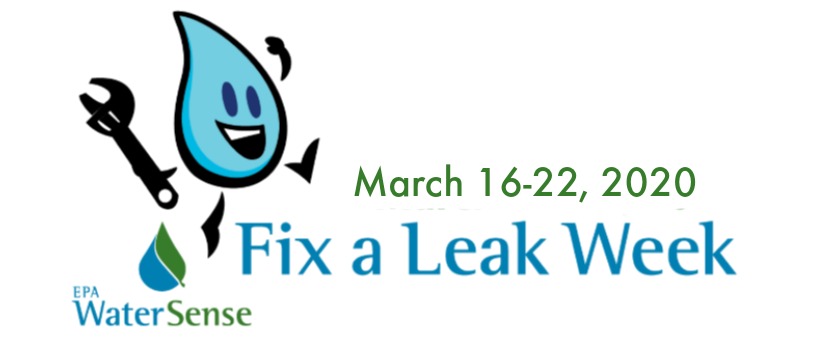
Are you drinking enough water this winter?
February 01, 2020
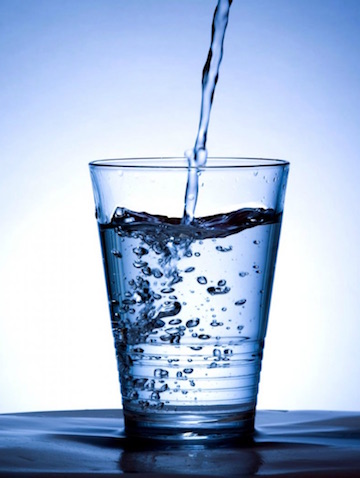
Chapped lips? Dry skin? Headaches? Nosebleeds? Dry cough? Fatigue?
These are all signs that you might not be getting enough water this winter. In the summer, when you’re hot and sweaty, your body keeps reminding you that you’re thirsty and NEED water. But in the winter, when you’re cold and shivering, it’s all-too-easy to neglect hydration. Your body doesn’t feel as thirsty, and it’s much harder to recognize that you haven’t been drinking much water. That’s why you have to consciously remember to drink enough water in the winter, when the air is dry and the heater is working overtime.
Drinking more water can help:
Fight Dehydration.
Staying hydrated helps you regulate your body temperature and helps your circulatory system. Proper hydration helps your muscles use their balance of fluids to prevent muscle fatigue. Also, “two large studies found a lower risk of long-term kidney problems among people who drink more water and other fluids daily.” NYT Hydration enables our bodies to flush toxins.
Basically, drinking enough water keeps your body working properly.
Keep the Winter Weight Away.
Water is wonderful for weight loss. Drinking a few glasses of water can keep you from reaching for other, less healthy beverages. Water can also help curb your hunger, making you feel more full. “When we aren’t drinking enough fluids, we don’t have the energy required to break down fat; thus, we often mistake thirst for hunger, leading us to eat more than needed.” Filter Butler
Improve your Skin.
Winter can really take a toll on your skin. From the dry, over-heated air inside to the dry, cold air outside, winter is constantly leaching moisture from your skin. We need moisture to keep our skin cells full and hydrated; dehydration causes skin to chap, crack, and peel. Keep your skin healthy and glowing by drinking plenty of water during these cold winter months. Angel Springs
Give you Energy.
Dehydration is a major cause of fatigue. “Keeping well hydrated will ensure your bodily functions are supported and running efficiently. When you are dehydrated your body functions slow down and use up your extra energy resources, leaving you feeling tired and sluggish.” Angel Springs
Protect your Immune System.
Winter is serious breeding time for viruses, and this cold & flu season has been a rough one. “Dehydration can seriously weaken our immune systems barriers. The lack of water can dry out the mucous membranes in our lungs and sinus passages, which can reduce their resistance to infections. Keeping well hydrated during winter ensures that the barriers used to protect your body from colds and flu are fully functional and completely intact. To ensure you stay fighting fit during the winter, make sure you keep drinking water regularly and fight back against the viruses.” Angel Springs
Drinking water makes you sleep better, think better, work better, and feel better!
Read more:
Filter Butler, http://filterbutler.com/blog/much-water-drink-winter/
Angel Springs. http://www.angelsprings.com/blog/blog/5-major-reasons-drink-water-winter/
Weather this Winter Well
January 01, 2020
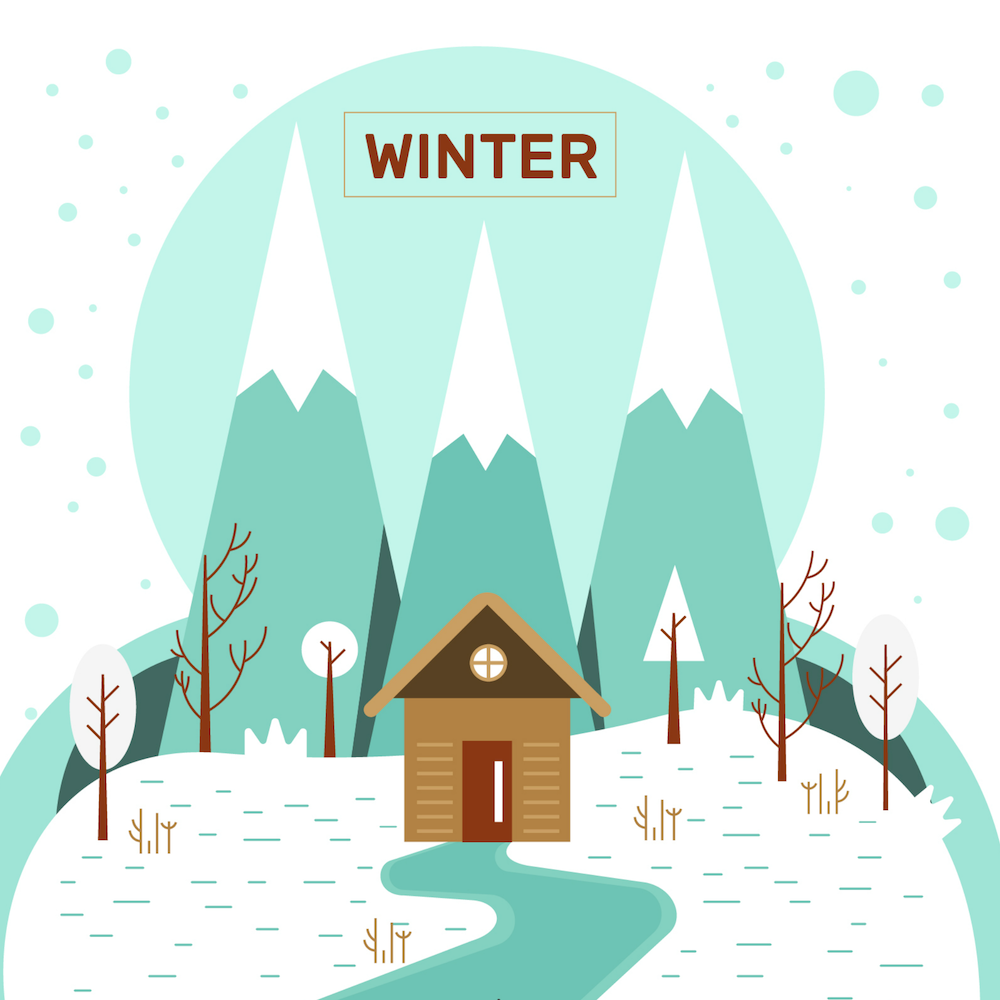
2020 is here, and it has brought wintry weather in its wake. Whether you're in Saskatchewan or Savannah, winter weather can be rough on people, animals, roads, cars, and homes. Snow, ice, and freezing temperatures can really take a toll on a home, causing expensive damages and high utility bills. Winterizing your home can help prevent unexpected surprises, such as busted pipes, and will help with energy costs.
Here are some tips to help you weather this winter well:
The CDC has this great infographic with important tips for being ready for winter weather.
Plumbing
Pipes are very susceptible to freezing, and repairs can be extremely expensive.
- Learn how to shut off water valves in case a pipe burst.
- Exposed pipes in uninsulated spaces such as attics and crawlspaces should be wrapped with electrical heating tape and insulated with foam insulation.
**If you are leaving your home unoccupied for a season, you should shut off the water supply and drain the pipes. A water leak in an unoccupied home can cause catastrophic damage.
Fireplace & Chimney
- Check your wood-burning fireplace or stove to make sure that it is working properly before winter. Loose bricks or missing mortar should be replaced or repaired to prevent fire from spreading into the wall behind the fireplace.
- Test the flue damper to ensure that it is operating properly.
- Check your chimney for obstructions, and make sure that it is clean, hiring a professional if needed. You can test the chimney draft by lighting some newspaper and checking to see if the smoke rises properly.
Heating System
- Test your heating system/furnace BEFORE the weather turns cold. It is best to have your system inspected before use to evaluate it for safety and efficiency. To test your system, turn the thermostat to HEAT and allow it to complete a full heating cycle, from turning on and blowing hot air through the vents to shutting off the blower again.
- Inspect ductwork for mold, dirt, debris, holes and loose connections. Contact a service technician for any repairs.
- Be sure to properly maintain your heating system, replacing air filters regularly (according to the recommended schedule) and checking for carbon monoxide leaks. If your thermostat is old, replace it with a newer model that may be programmed to lower the temperature when you are not at home or asleep.
Insulation
Efficient insulation can save a great deal on utility bills.
- If you are unsure whether or not you have sufficient insulation, schedule an energy audit. Your utility company might provide complimentary audits.
- Exterior outlets may be insulated with foam sealing gaskets.
- Insulate exposed ductwork.
- Cover your water heater with blanket insulation or a cover, according to the manufacturer’s instructions.
Doors & Windows
A great deal of heat may be lost through drafty doors and windows, and can contribute to high utility bills.
- Inspect window glass to make sure it is whole and secure in its frame, and inspect doors for stability, replacing and repairing when needed.
- Before cold weather arrives, check for gaps around windows and doors. Gaps are easiest to see at night when there is light on one side and dark on the other. Fill gaps with silicone caulk or spray foam insulation designed for windows and doors.
- Install new weather stripping under entry doors and around windows and, when possible, replace screens with storm windows and doors.
Exterior walls get very cold, and they radiate this chill into your home. The walls heat up far more slowly than the air in your house; if your house is poorly insulated, your exterior walls may be many degrees colder than the air in your home. So, here are some ideas for keeping your house warm:
- Close those blinds. Closing your blinds, shades, and/or curtains at night adds another layer of insulation to those windows; it helps to keep the cold air out and the warm air in.
- Cover those walls. Did you know that you could help insulate your home and reduce energy loss by covering your walls with framed pictures, mirrors, tapestries, or —best of all— bookshelves? Bookcases full of books make a great barrier —helping to keep that cold air outside where it belongs.
- Move that furniture. Simply moving furniture (sofas, beds, desks, etc.) away from the cold exterior walls can help you feel warmer.
- Clean that roof. To maintain proper insulation and to prevent damage, you need to remove excess snow from your roof. Using a “roof rake” while standing on the ground makes this a far less dangerous task.
Are you prepared for a Winter Weather Emergency?
Winter Weather Preparedness Kit
Putting together an emergency kit will ensure that you have everything you need in case of a blizzard, storm, or extensive power outage. Some suggestions are:
- Flashlights & batteries
- Candles & Matches
- Battery-powered radio (2-way radio is preferred)
- Blankets or sleeping bags
- Bottled water
- A week’s worth of non-perishable food
- Can opener
- First aid kit and necessary medications
- Shovel, road salt, ice scraper
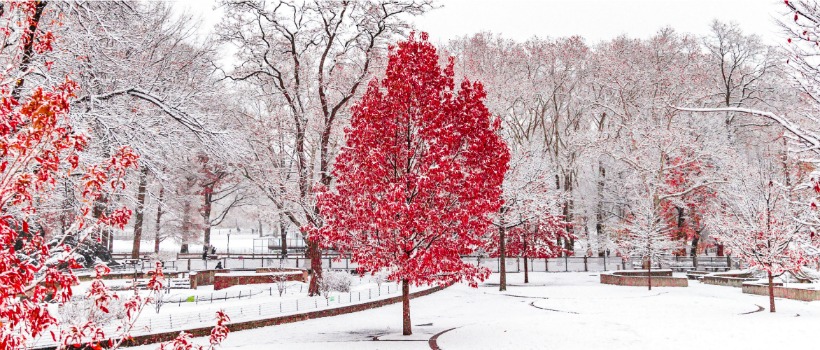
In Flanders Fields the Poppies Grow
November 01, 2019

November 11, 1918.
On November 11 of 1918, the 11th hour of the 11th day of the 11th month, an armistice went into effect,a cessation of hostilities between the Allied Nations and Germany, ending the “war to end all wars.”
The official end of World War I would not be declared for seven more months, at the signing of the Treaty of Versailles, but the end actually came on that November day, when the truce was signed, the opposing forces laid down their weapons, and the war known as the “Great War” was over.
November 11, 1919, marked the initial celebrations of Armistice Day. King George V celebrated the initial Armistice Day at Buckingham Palace, hosting a banquet in Honor of the President of the French Republic. U.S. President Wilson proclaimed November 11 as the first commemoration of Armistice Day with the following words: "To us in America, the reflections of Armistice Day will be filled with solemn pride in the heroism of those who died in the country’s service and with gratitude for the victory, both because of the thing from which it has freed us and because of the opportunity it has given America to show her sympathy with peace and justice in the councils of the nations…"
On May 13, 1938, an act of US Congress made November 11 a legal holiday—a day to be dedicated to the cause of world peace and to be thereafter celebrated and known as "Armistice Day." In 1954, after World War II had required the greatest mobilization of soldiers, sailors, Marines and airmen in the Nation’s history; after American forces had fought aggression in Korea, the 83rd Congress, at the urging of the veterans service organizations, amended the Act of 1938 by striking out the word "Armistice" and inserting in its place the word "Veterans." With the approval of this legislation (Public Law 380) on June 1, 1954, November 11th became a day to honor American veterans of all wars. (US Dept. of Veterans Affairs).
In the United States, Veterans Day honors all American veterans, living or dead, but gives particular thanks to living veterans who served their country honorably, during wartime or peacetime.
An official wreath-laying ceremony is held each Veterans Day at the Tomb of the Unknowns in Arlington National Cemetery, and many parades and celebrations are held all around the country.
In Canada, November 11 is known as Remembrance Day and is a statutory holiday in all three territories and in six of the ten provinces.
In 1931, the federal parliament amended the Armistice Day Act, making the day known as Remembrance Day. The Canadian department of Veterans Affairs states that the date is of "remembrance for the men and women who have served, and continue to serve our country during times of war, conflict and peace"; specifically, the First and Second World Wars, the Korean War, and all conflicts since then in which members of the Canadian Forces have participated. The department runs a program called Canada Remembers with the mission of helping young and new Canadians, most of whom have never known war, "come to understand and appreciate what those who have served Canada in times of war, armed conflict and peace stand for and what they have sacrificed for their country." (Veterans Affairs Canada. "Canada Remembers > About Canada Remembers". Queen's Printer for Canada. Retrieved 11 November 2011)
Remembrance Day is celebrated all over the globe on November 11, honoring those who have served their countries well— fearlessly and selflessly. We in the Americas honor our veterans, celebrating with those still living and remembering those who are no longer with us.
On November 11, we celebrate along with countries across the world.
From South Africa to Northern Ireland.
From Barbados to Belgium.
From Australia to India.
From Canada to Kenya.
From the United Kingdom to the United States.

November 11. Armistice Day, Veterans Day, Remembrance Day.
Honor those who have served.
In Flanders fields the poppies blow
Between the crosses, row on row
That mark our place; and in the sky
The larks, still bravely singing, fly
Scarce heard amid the guns below.
We are the Dead. Short days ago
We lived, felt dawn, saw sunset glow,
Loved and were loved, and now we lie
In Flanders fields.
Take up our quarrel with the foe:
To you from failing hands we throw
The torch; be yours to hold it high.
If ye break faith with us who die
We shall not sleep, though poppies grow
In Flanders fields.
Lieutenant Colonel John McCrae, a Canadian physician who fought on the Western Front and died while on active duty in 1918, wrote what is undoubtedly the most famous poem of World War I, “In Flanders Fields.”
American War Deaths: http://www.militaryfactory.com/american_war_deaths.asp
Canadian Remembrance Day: http://www.statutoryholidays.com/remembrance_day.php
In Flanders Fields Poem: http://www.warmuseum.ca/cwm/exhibitions/remember/flandersfields_e.shtml
History of Veterans Day: http://www.va.gov/opa/vetsday/vetdayhistory.asp
History of Veterans Day: http://www.history.com/topics/holidays/history-of-veterans-day
Remembrance Day: https://en.wikipedia.org/wiki/Remembrance_Day
How can you express your appreciation to those who have served? Click HERE to read about 8 great ways. www.military.com
------------
Imagine a Day without Water
October 01, 2019

Could you go a day without water? No water to drink or make coffee. No water to shower, brush your teeth, flush the toilet, or do laundry. Firefighters couldn't put out fires and farmers couldn't water their crops.
We know that water is essential. That’s why we want you to know about a nationwide educational effort called “Imagine a Day Without Water.” On October 23, the Value of Water Coalition is coordinating a national advocacy and educational event, Imagine a Day Without Water, to raise awareness about the most essential resource we have: Water. Across the country, water agencies, mayors, engineers, contractors, business leaders, community members, schools, organizations, corporations, environmental advocates, and more are joining together to educate people about how water is essential, the challenges facing water and wastewater systems, and the need for investment.
Even though water is absolutely vital to everything we do, it too often is forgotten. Out of sight, out of mind. Many people take water service for granted. Clean, safe, reliable, and affordable water comes out of the tap and flows down the drain without a second thought. But the massive infrastructure, much of it underground, which brings water to homes and businesses, takes it away, and treats it, is aging. A water main breaks somewhere in the U.S. every two minutes. Most pipes have an average life expectancy of 50 years, but in many major cities, water pipes are more than 100 years old. Communities cannot afford to go a day without water if those systems reach their breaking points.
Water is essential.
-
Water is essential for everything we do in life.
-
We need water to make a cup of coffee, fight fires, build bridges, and swim on a summer day. We need water to grow strawberries, manufacture blue jeans, and make life-saving medicines.
-
From agriculture to manufacturing, most sectors of our economy rely on water. Without water, our economy would grind to a halt.
-
While nature provides water, it takes pipes, pumps, equipment, and people working 24/7 to deliver clean water to homes and businesses, and then remove and treat wastewater so it can safely be reused or returned to the environment.
-
Water infrastructure is largely invisible. Because it’s out of sight, it’s out of mind for most people.
Problem: Water infrastructure and resources are at risk and this puts the nation at risk.
-
After working around the clock for 100 years or more, water and wastewater infrastructure is aging and failing.
-
These systems were built in the early 20th century for communities that looked completely different than today.
-
We also face serious water resource challenges including epic drought in the Western states; water and sewer breaks in East Coast and Midwestern communities; and, climate change and rising sea levels, which contribute to flooding and additional stress on water systems.
-
With a growing national population and finite water supplies, we have long-term water supply challenges that must be addressed with new and creative strategies that meet current and future needs.
Solution: Investment in water must be a top priority.
1) Invest Locally
- We need water and wastewater bills that better reflect what it costs to deliver these essential services and to invest in the infrastructure so it’s in a state of good repair.
- Water and wastewater services are incredibly affordable compared to other utilities. The truth is if your cable goes out it’s a nuisance, but if your water is out, it is a crisis.
2) A Stronger Federal Partner
-
When the federal government sets infrastructure policy or makes infrastructure investments, water must be front and center.
- We need a stronger federal partner that expands access to low-cost capital for all water providers and encourages collaboration between the public and private sectors.
3) New Water Resource Strategies
- While conservation is critical, we also need innovative water management strategies to respond to the unprecedented water challenges facing communities all across the country. Investments can support a wide range of innovations including resource recovery, reuse, and diversification of local water supplies.
4) Public-Private Partnerships
- Water projects can be expensive and no one sector alone can meet the need for investment. Public-private partnerships are essential to meet our financing and water management needs.
Future/Potential: Ensure clean, safe water so all communities can thrive.
-
Water providers are economic anchors, frontline environmental stewards, good community partners and innovators.
-
We chart a prosperous and sustainable future if we invest in water infrastructure and water resources.
-
Water drives economic growth and competitiveness. Water protects public health, Water revitalizes neighborhoods and supports community vitality. Water sustains our environment and makes us more resilient in the face of climate change.
Water is life.
To learn more, visit us at: www.thevalueofwater.org /thevalueofwater @TheValueofWater
"Investing in our water is investing in a future where no American will have to imagine a day without water."
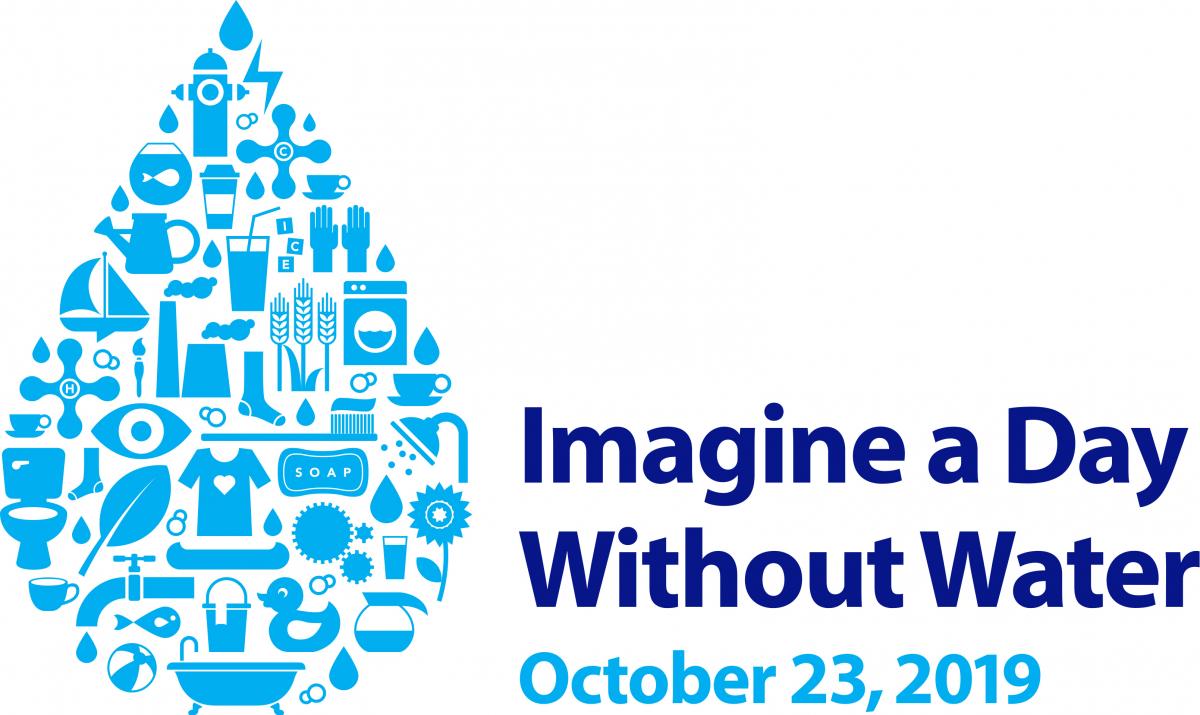
More information about Imagine a Day Without Water can be found here:
http://imagineadaywithoutwater.org/
Safe Drinking Water
September 01, 2019
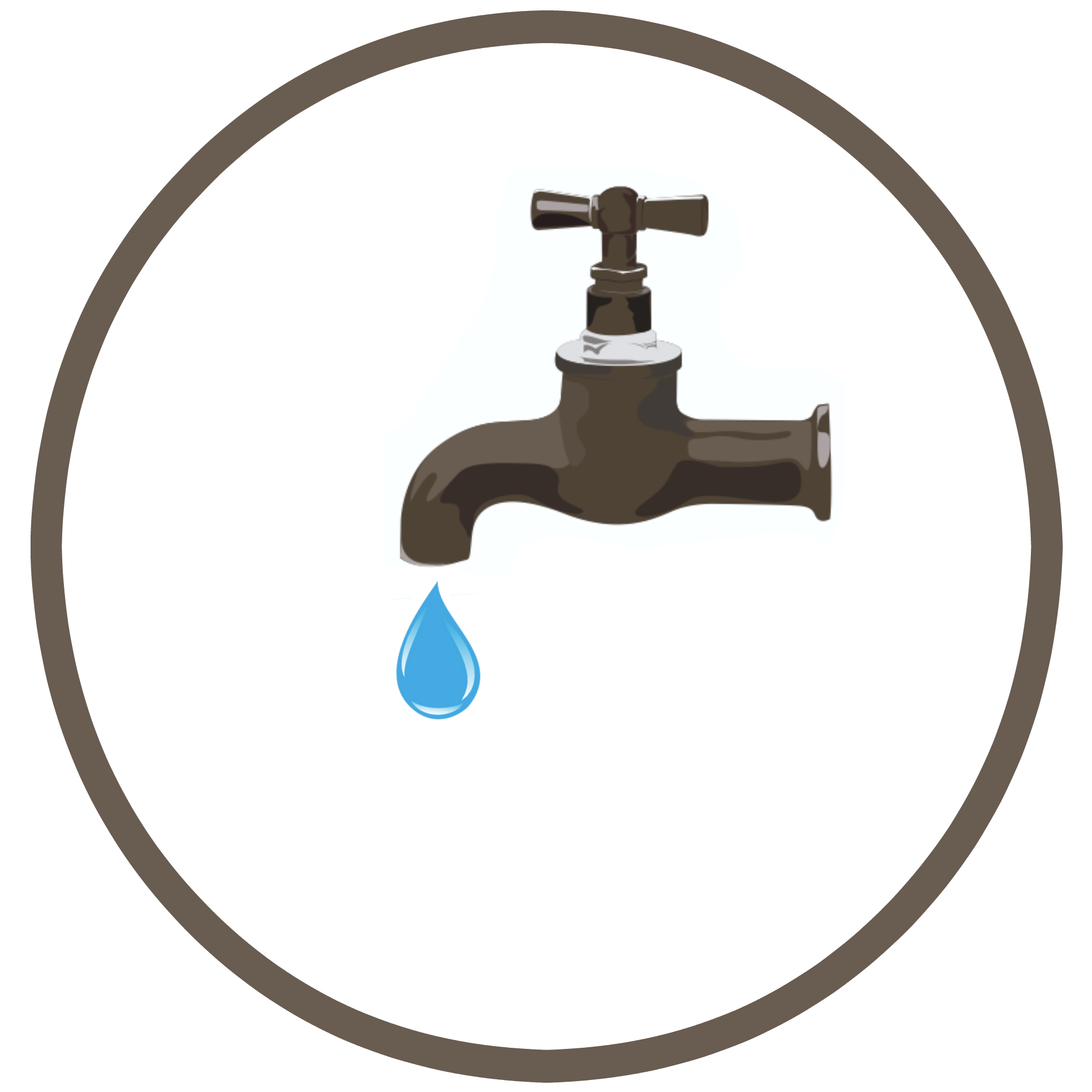
The last time you turned on a tap to brush your teeth, or fill a glass, or add 1/2 cup of water to a recipe, did you happen to wonder about the safety or cleanliness of the water? Almost certainly not. You didn't have to. You could rest assured that your drinking water was free from harm— untainted. This is one of the great privileges of living where we live . . . and when we live.
“There are a number of threats to drinking water: improperly disposed of chemicals; animal wastes; pesticides; human threats; wastes injected underground; and naturally-occurring substances can all contaminate drinking water. Likewise, drinking water that is not properly treated or disinfected, or which travels through an improperly maintained distribution system, may also pose a health risk.” EPA
In the United States, in 1974, President Gerald Ford signed into law the Safe Drinking Water Act, a comprehensive and landmark piece of legislation that “ensure[s] and protect[s] the quality of Americans’ drinking water. Under SDWA, the United States Environmental Protection Agency (EPA) is given authority to set the standards for drinking water quality and oversee states, localities, and water suppliers who implement those standards.” CDC
Every single day, over 170,000 US municipal water systems provide safe, reliable drinking water to US consumers.
Every public water system in the US is regulated by the Safe Drinking Water Act, protecting our drinking water against both naturally-occurring and man-made contaminants. “The responsibility for making sure these public water systems provide safe drinking water is divided among US EPA, states, tribes, water systems, and the public. “ The Environmental Protection Agency sets the national standards for drinking water, and “provides guidance, assistance, and public information about drinking water, collects drinking water data, and oversees state drinking water programs." EPA
“The most direct oversight of water systems is conducted by state drinking water programs. States can apply to US EPA for “primacy,” the authority to implement SDWA within their jurisdictions, if they can show that they will adopt standards at least as stringent as US EPA’s and make sure water systems meet these standards." “States, or US EPA acting as a primacy agent, make sure water systems test for contaminants, review plans for water system improvements, conduct on-site inspections and sanitary surveys, provide training and technical assistance, and take action against water systems not meeting standards. To ensure that drinking water is safe, SDWA sets up multiple barriers against pollution. These barriers include: source water protection, treatment, distribution system integrity, and public information. Public water systems are responsible for ensuring that contaminants in tap water do not exceed the standards. Water systems treat the water, and must test their water frequently for specified contaminants and report the results to states.” EPA
Similarly, “in Canada, the responsibility for making sure drinking water supplies are safe is shared between the provincial, territorial, federal and municipal governments. The day-to-day responsibility of providing safe drinking water to the public generally rests with the provinces and territories, while municipalities usually oversee the day to day operations of the treatment facilities.” Canada.ca
"Health Canada's Water and Air Quality Bureau plays a leadership role in science and research. Its mandate and expertise lies in protecting the health of all Canadians by developing the Guidelines for Canadian Drinking Water Quality in partnership with the provinces, territories and other federal departments. These guidelines are used by every jurisdiction in Canada and are the basis for establishing drinking water quality requirements for all Canadians. The Bureau also works closely and shares information with other government agencies such as the United States Environmental Protection Agency." Canada.ca
Since the 60’s and 70’s, the EPA and Health Canada have assumed the responsibility to oversee the safety of both of our nations’ water, and our safe, clean water is a testament to their oversight.
Have you seen your Water Quality Report?

Safe drinking water is fundamental to life; our nation’s productivity depends on it. The SDWA is an impressive “blueprint” for protecting the quality of US drinking water—and in turn, American public health—now and in the future. Water and Health
Healthy Lawns
August 01, 2019
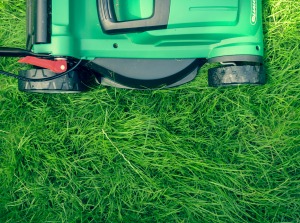
Lush green lawns, bright colorful flower gardens, bountiful vegetable harvests —these add beauty and enjoyment to your home. We all love healthy lawns. What are some good practices that help promote healthy lawns, and conserve our nature resources, such as water? How can you water wisely? Mow wisely?
Here are some great tips:
If you're interested in the longer video with even more information, check out the video below:
Click HERE for a great brochure on GREENSCAPING.
Some more helpful Tips on Healthy Lawn Care
First, before you even turn on that garden hose, there are ways to PLAN your garden and PREPARE your yard so that it will need less water:
- DIRT: The right soil will help you make the most of the water you use. Nutrient-rich soils actually HOLD the moisture in the soil, so adding nutrients and organic matter (such as compost and worm castings) to your soil will help the dirt retain the moisture it receives.
- MULCH: Mulch, mulch, mulch! Mulching is key to trapping the moisture in the soil. “Up to 70% of water can evaporate from the soil on a hot day if you don’t have mulch as a protective layer on top. Mulch is one of the best moisture holding strategies you can employ. It prevents evaporation from the soil surface, helps suppress water-thieving weeds from growing and many mulches add vital nutrients to the soil at the same time. Avoid fine mulches that tend to clump and become water-repellent. Instead, use a coarser mulch which allows water/rain to move down through to the soil.” The Micro Gardener
- PLANT SELECTION: Some plants need less water than others. “Species with low water needs will save you time and money in the garden. These include:
- Established or slow growing plants;
- Small plants;
- Varieties with small or narrow leaves;
- Grey or silver foliage; or
- Leathery, hairy, curled or fuzzy leaves that typically require less moisture.” The Micro Gardener
Once you’ve planned and prepared your yard to need less water, now you’re ready to water that garden, but water it wisely.
- Don’t water unless it’s needed. This might seem obvious, but it’s a good reminder. So check the weather and check your soil.
—Check the weather. If rain is forecast, you can put away that hose and turn off those sprinklers. “Also, consider your climate, location and the season. Weather factors that impact watering include: cool temperatures, high humidity, the winter season, shade and no wind which all reduce the need for irrigation. Whereas hot, windy summers with low humidity will increase the need for watering.” The Micro Gardener
—Check your soil. Don’t water if your soil doesn’t need it. “To check if you need to water or not, look at the soil about a spade-deep down. If it’s damp, it’s fine; if it’s dry, it’s time to water. If you have clay soil, it might feel damp whether it’s irrigated or not and sandy soil can feel dry, even if it has water in it. If this is the case, watch your plants and when they start to show signs of water stress – when leaves change position or get darker – note how the soil looks and feels. This way you can get more of an idea of what your soil is like when it has too little water.” The Guardian
Another way to check your soil is by using a moisture meter, an inexpensive tool which checks moisture levels in your soil. This moisture meter actually checks moisture, pH levels, and sunlight. - Never over-water. Over-watering not only wastes a valuable natural resource, but it can actually harm your plants. Over-watering causes plants to grow roots only near the surface, which makes them vulnerable to drought. It makes your plants needy, dependent on that daily watering, rather than encouraging deep-rooted hardy plants. Over-watering also “leaches valuable nutrients from the soil (costing you money to replace them) and causes loss of oxygen in the soil-pore spaces increasing the chance of root rot and other diseases from suffocation.” The Micro Gardener
- Harvest Water. There are many ways to harvest water that might otherwise be lost:
—Collect rainwater. Installing a rain barrel or water tank can utilize water from your roof and gutters and put it to work in your garden.
—Reuse household water. Save your cooking water (from boiling vegetables) and use it in your garden (extra nutrients!). Put a couple of buckets in the shower while your water is heating up, and use this water in the garden. Bath water, fish tank water, any “used” water from your home —let it do double duty in your garden. - Mow high. “Keeping your grass at the upper recommended limit (about 3 inches for most species) will help shade the soil and prevent excessive evaporation.”
- Eliminate Leaks. Check your hoses and faucets for leaks. “According to the EPA, a single 1/32” diameter leak on a hose, emitter or outdoor faucet can waste more than 6,000 gallons of water in a year.” Love Your Landscape
- Water the soil, not the leaves. “Water at the root zone to keep evaporation to a minimum. Keeping water off your plants’ leaves will also help control fungal diseases and prevent sunscald.” Love Your Landscape
All of these methods will help you use water wisely in your lawn and garden, so you can eliminate wasteful practices and enjoy the benefits of a beautiful, healthy landscape.
Sources:
The Guardian. Six Ways to Save Water in your Garden.
The Micro Gardener. Ten Water-Saving Tips for your Garden.
Love your Landscape. 10 Easy Ways to Save Water in your Yard and Garden.



